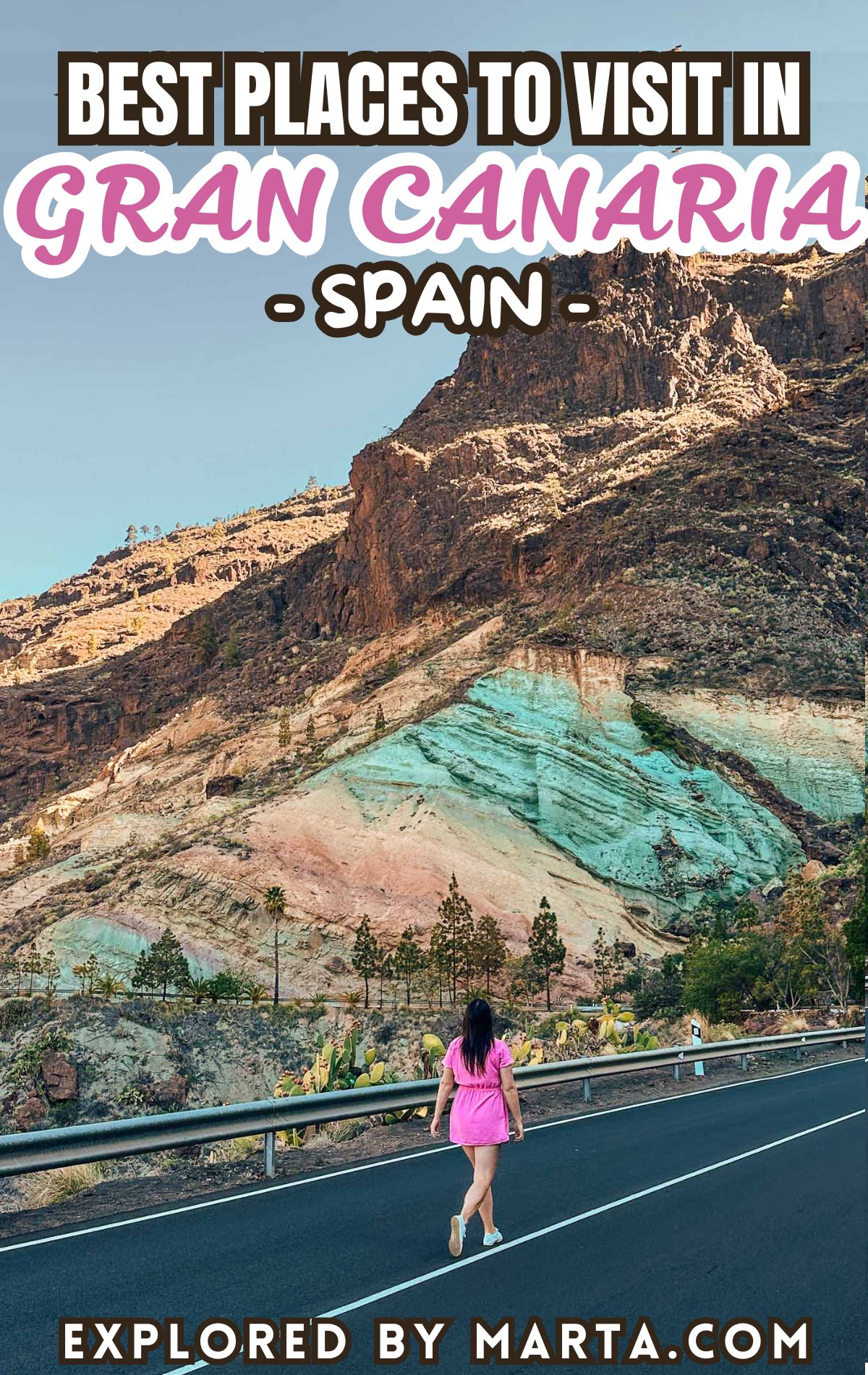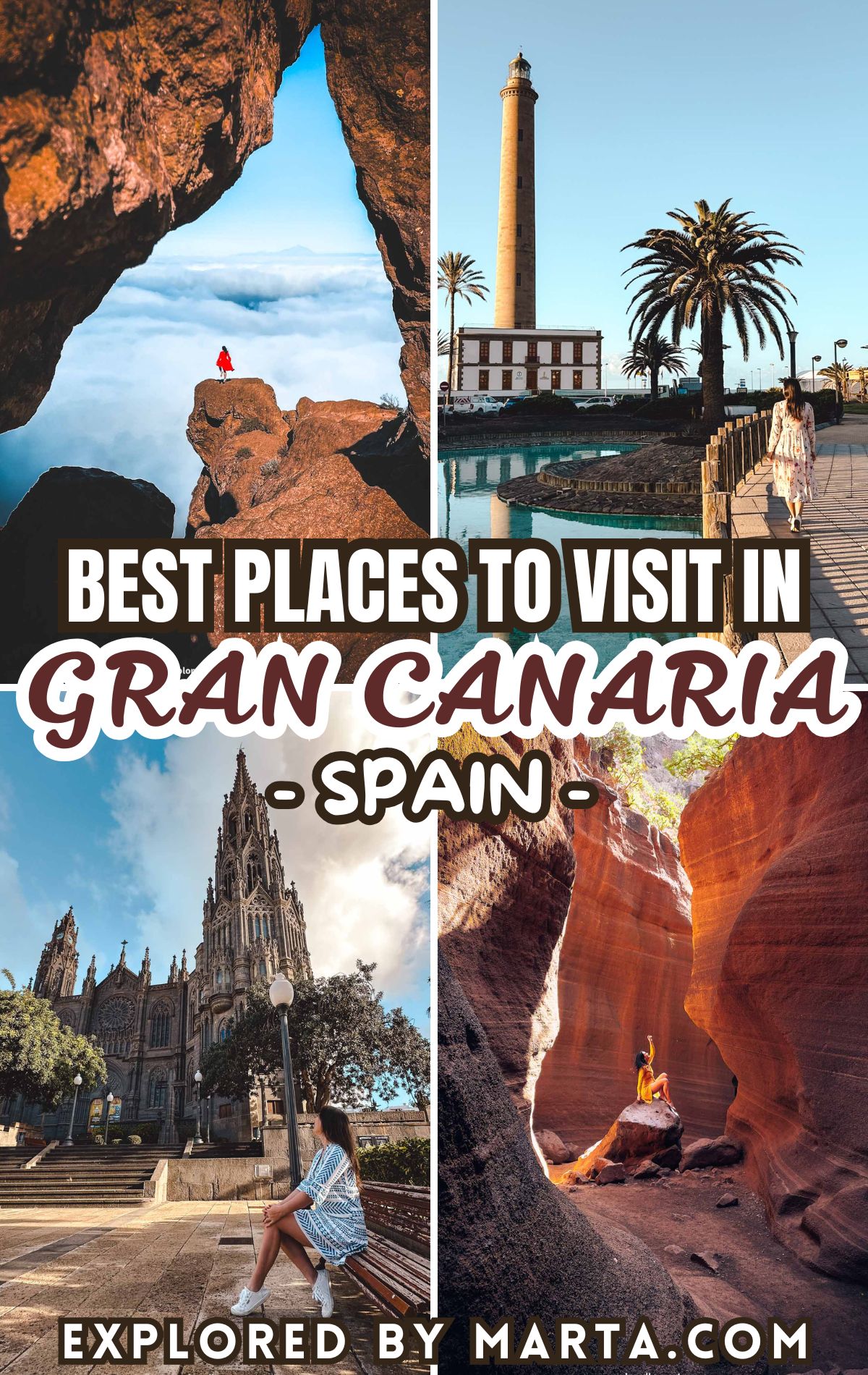33 ultimate best places to visit in Gran Canaria, Spain
This post may contain affiliate links. If you use these links to buy something I may earn a small commission at no extra cost to you! Thank you for your support!
After spending months exploring the island, here is my guide to the best places to visit in Gran Canaria, Spain! From golden beaches and scenic mountains to charming villages and unique volcanic rocks – Gran Canaria has it all!
Gran Canaria is one of the eight inhabited Canary Islands—and definitely one of my favorites (yes, we have visited them all!)! Gran Canaria is often called a ‘miniature continent’ because of how incredibly diverse this island is!
I’ve been lucky to spend many months on this beautiful island and explore all its must-visit places as well as more secret spots, so let me share with you the best places to visit in Gran Canaria with descriptions, photos, and Google Maps locations. Happy travels!
1. Roque Nublo, the sacred symbol of Gran Canaria
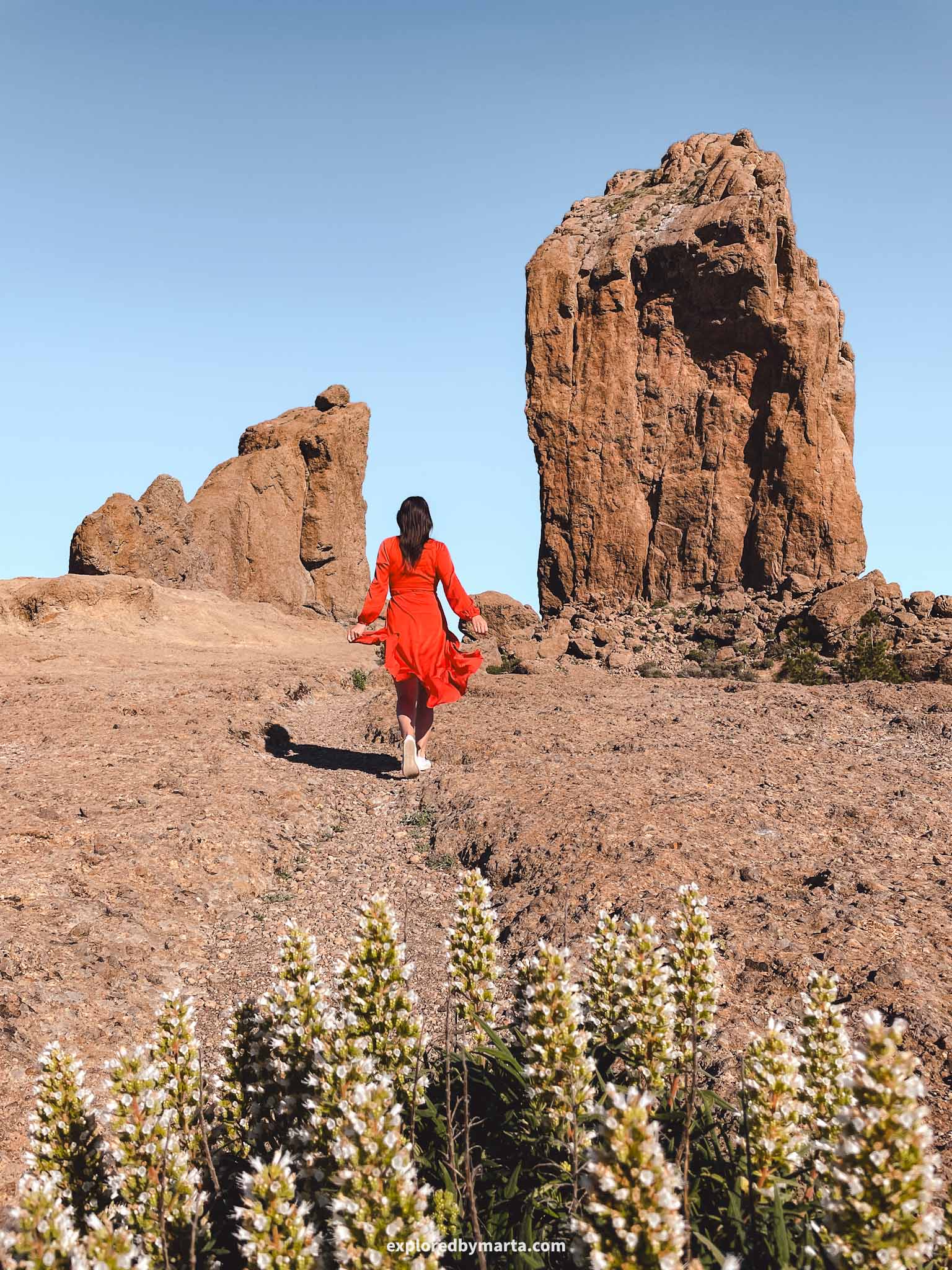
Roque Nublo is a massive volcanic rock formation in Gran Canaria that formed during an eruption millions of years ago. It is a symbol of the island (it was a sacred place for the island’s early settlers) and is easily among the best places to visit in Gran Canaria.
The name Roque Nublo translates to “Cloud Rock” in Spanish. The massive rock itself is 80 meters tall and sits at 1,803 meters above sea level, making it the third-highest peak in Gran Canaria. Trust me, it feels like the whole island is at your feet!
I have visited Roque Nublo many times— in the morning, during the day, and at sunset. Each time of day offers a unique perspective and view of Gran Canaria. On a clear day, you can even see Teide volcano on the island of Tenerife!


Getting to Roque Nublo requires a hike.
The shortest and most popular route (1.3 km one way) starts from Road GC-600 but you need to obtain a free permit to walk to Roque Nublo from this checkpoint during the day (from 9:00 to 17:00). No need for a permit outside these hours.
Also, you can’t park your car at the starting point. Instead, you can leave it at one of the nearby campsites (Bailico or Llanos de la Pez) and add a few extra kilometers to your hike, or take a public bus (see ‘Guaguas’), which will take you directly to the starting point.
For other hiking options to Roque Nublo, I recommend a 3-kilometer hike (one way) from Presa de Elba. There are a few parking spots next to the bus stop, and the trail takes you along the water reservoir and up to Roque Nublo.
Location: Roque Nublo
2. Dunas de Maspalomas, natural wonder of Gran Canaria

Dunes of Maspalomas is a vast area of golden sand dunes in Maspalomas town in the South of Gran Canaria. It is one of the island’s more iconic natural landmarks! If I had to guess, I’d say that almost every traveler to Gran Canaria visits this unique place!
I was truly surprised that such a desert-like landscape could be found on an island that was formed by volcanic eruptions. But nature is full of wonders so this is definitely one of the top places to visit in Gran Canaria!


The dunes is a protected area, a special nature reserve, so if you want to walk around the dunes, you should do so using the designated walking trails.
The best places to see the sand hills are two viewpoints inside Maspalomas at Mirador de las Dunas or Mirador Dunas Santa Mónica. The view will be especially spectacular at sunset when the sand is glowing in golden hues.
If you feel ready for a beach walk, then another option is to see the dunes from the beach. You can either walk from Playa del Inglés or from Playa de Maspalomas/Maspalomas Lighthouse until you reach the sand hills.
Location: Dunas de Maspalomas
3. Faro de Maspalomas
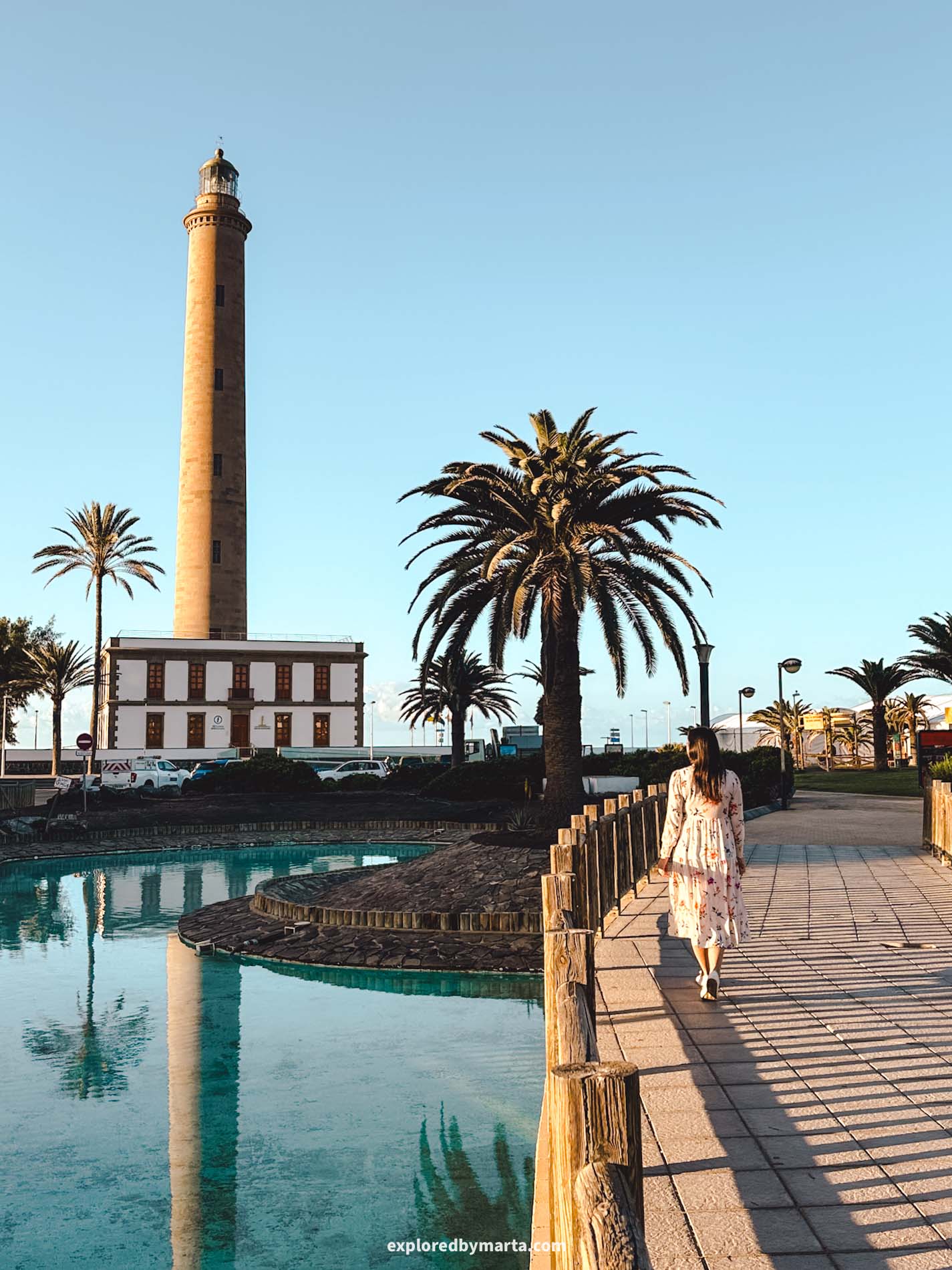
While you’re in Maspalomas, don’t forget to check out one of the most iconic landmarks in southern Gran Canaria — Faro de Maspalomas, or the Maspalomas Lighthouse.
This historic lighthouse dates back to the 19th century and has been guiding ships ever since.
Faro de Maspalomas stands 55 meters tall and is located right by the beach in Maspalomas. A beautiful seaside promenade stretches along the shore, passing right by the lighthouse.
The area around the lighthouse and the promenade is the perfect place for a morning walk or to watch the sunrise or sunset.
In the evening, many locals and tourists from nearby hotels come to the promenade to sit by the water and watch the sunset in the ocean. It’s a beautiful place to visit in Gran Canaria!
Location: Faro de Maspalomas
4. Rainbow Rocks of Gran Canaria


Los Azulejos de Veneguera, often referred to as Gran Canaria’s Rainbow Rocks, is one of the most unique places to visit in Gran Canaria, where you can admire a large multicolored mountain proudly displaying its vibrant colors.
This area is called ‘Fuente de los Azulejos,’ which translates to ‘Fountain of Tiles.’ For some, these colorful rocks resembled decorative ceramic tiles commonly used in Spanish, Portuguese, and Moorish design so the name of the place was born.
The rocks are located in the southwest of Gran Canaria, and you can easily reach this place by car or by bus. There are many parking places along the road where you can leave your car and go admire the rainbow rocks up close.
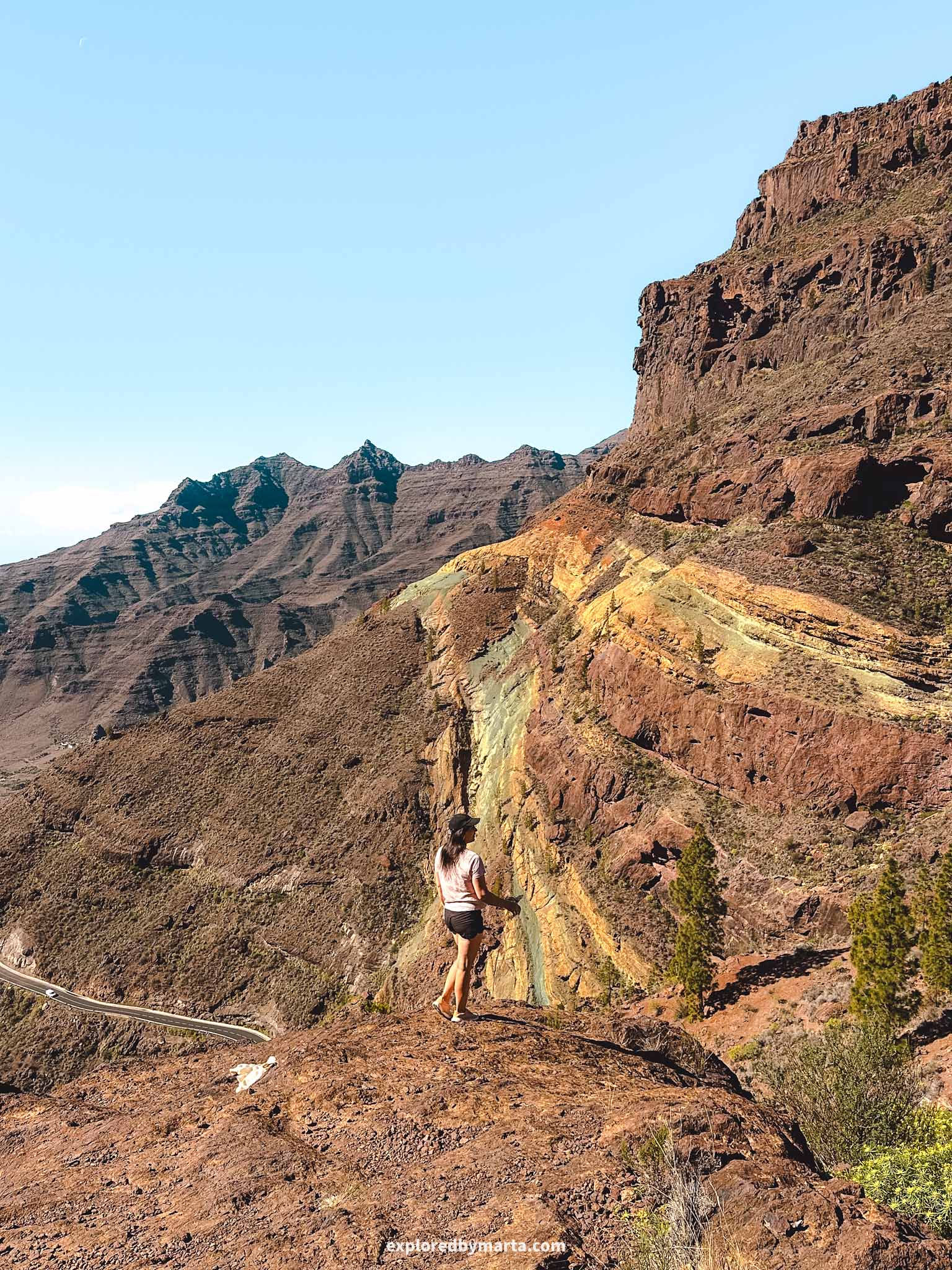
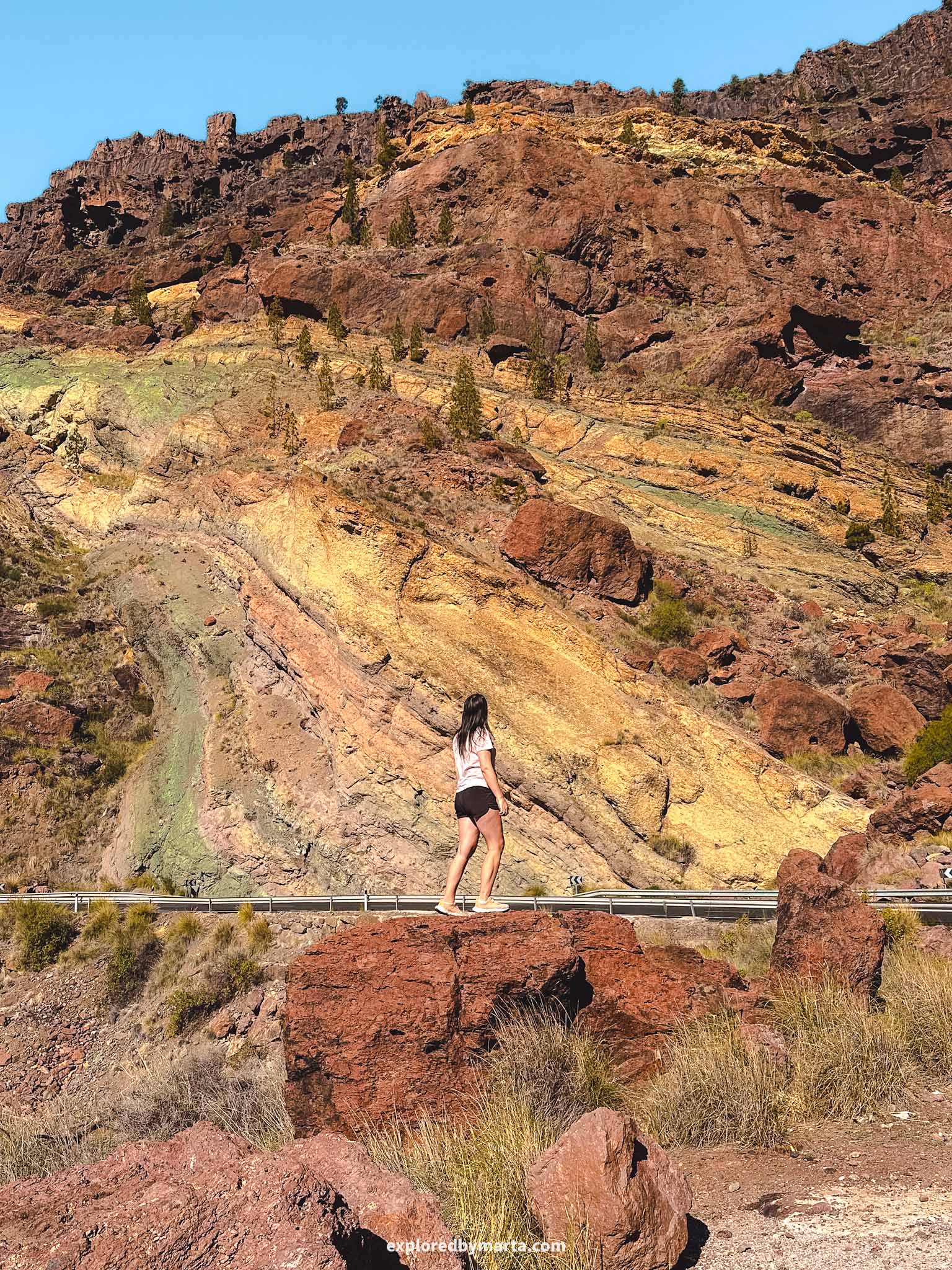
Personally, I really enjoyed the view of the rainbow rocks from a distance, where you can see the entire mountain, so we stopped by the road before reaching the rocks to take some cool photos.
But why are the rocks colorful? The mountains were formed millions of years ago during volcanic eruptions, and the area is composed of various minerals. As a result of oxidation and other chemical reactions, these minerals each have a different color.
If you feel up to it, there is a wonderful 7-kilometer hike in this area, taking you up to the top of the mountain, around the rocks, and then back down the mountain to the starting point near the rocks. One of my favorite hikes we did in Gran Canaria!
Location: Los Azulejos de Veneguera
5. Puerto de Mogán, the Little Venice of Gran Canaria


Puerto de Mogán is without a doubt one of the most beautiful villages in Gran Canaria, especially its iconic port neighborhood, known for its canals, colorful buildings, and boats.
That’s why it is called ‘Little Venice,’ as it resembles the famous city in Italy.
Puerto de Mogán was once a peaceful fishing village in the South of Gran Canaria but over the last decades, it has grown into a popular tourist resort town due to its location – the southern coast gets more sunshine than other areas around the island.
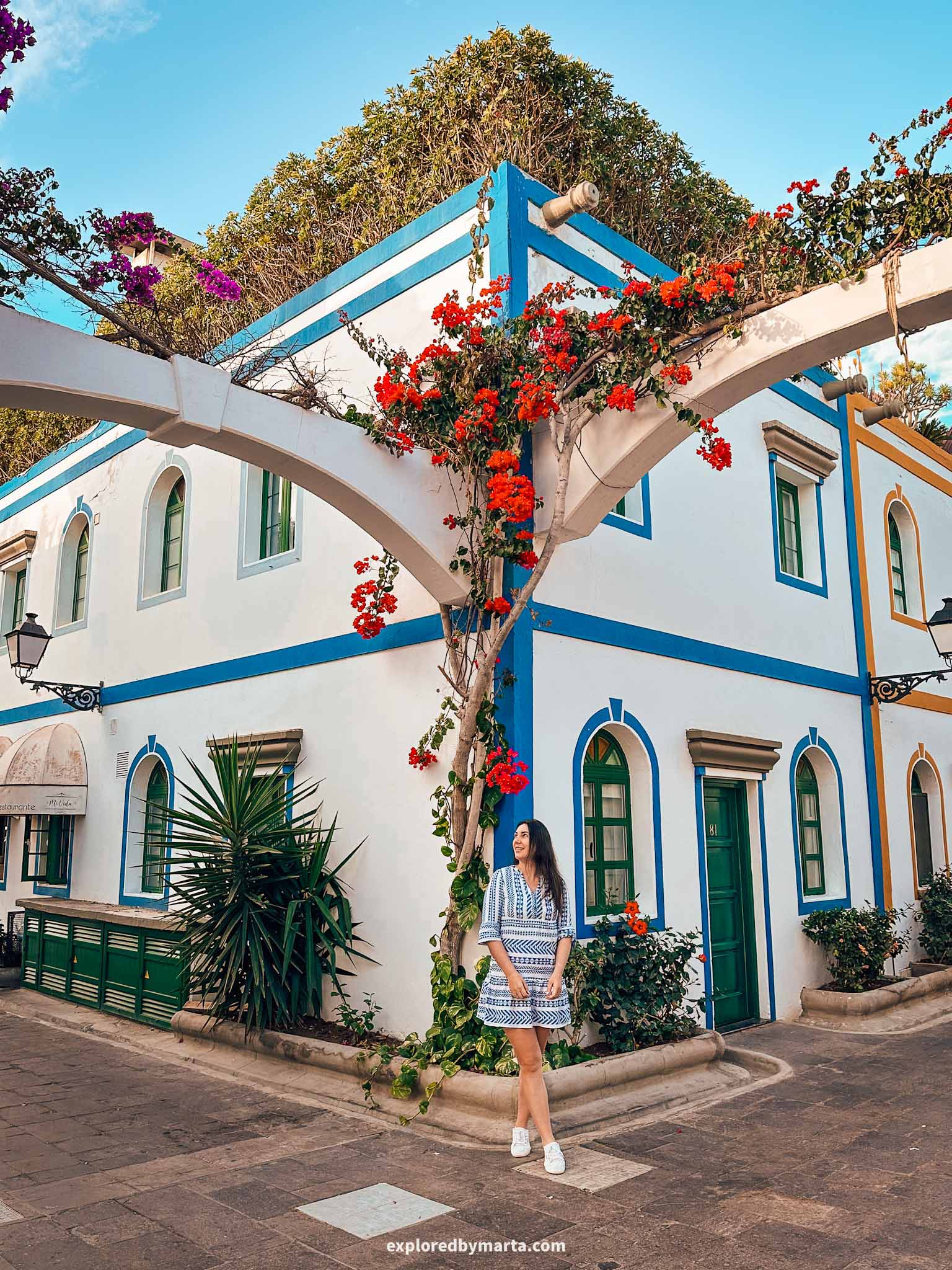

Even if you are not staying in Puerto de Mogán, visiting Little Venice should be on your Gran Canaria bucket list. I loved strolling through the narrow streets lined with whitewashed, colorful houses, all decorated with bougainvillea and potted plants!
It feels like a beautiful garden even though we didn’t see the flowers in full bloom!
The colorful streets adorned with flowers create the perfect photo spot in Gran Canaria. For the best photos, I recommend arriving earlier in the day to avoid the crowds. It gets very busy once the masses wake up and hit the streets.


If you’re traveling by car, there is a paid parking lot right next to the entrance to Little Venice. However, the space is very limited, so the earlier you arrive, the better your chances of finding a parking spot and taking cute photos without the crowds!
Puerto de Mogán is also the perfect place to spend time at the beach—there’s a gorgeous golden-sand beach right in the heart of the town. Or you can enjoy a relaxing lunch by the waterfront. There are plenty of great restaurants in the port area by the water!
Location: Puerto de Mogán
6. Mirador del Balcón and the Dragon’s Tail
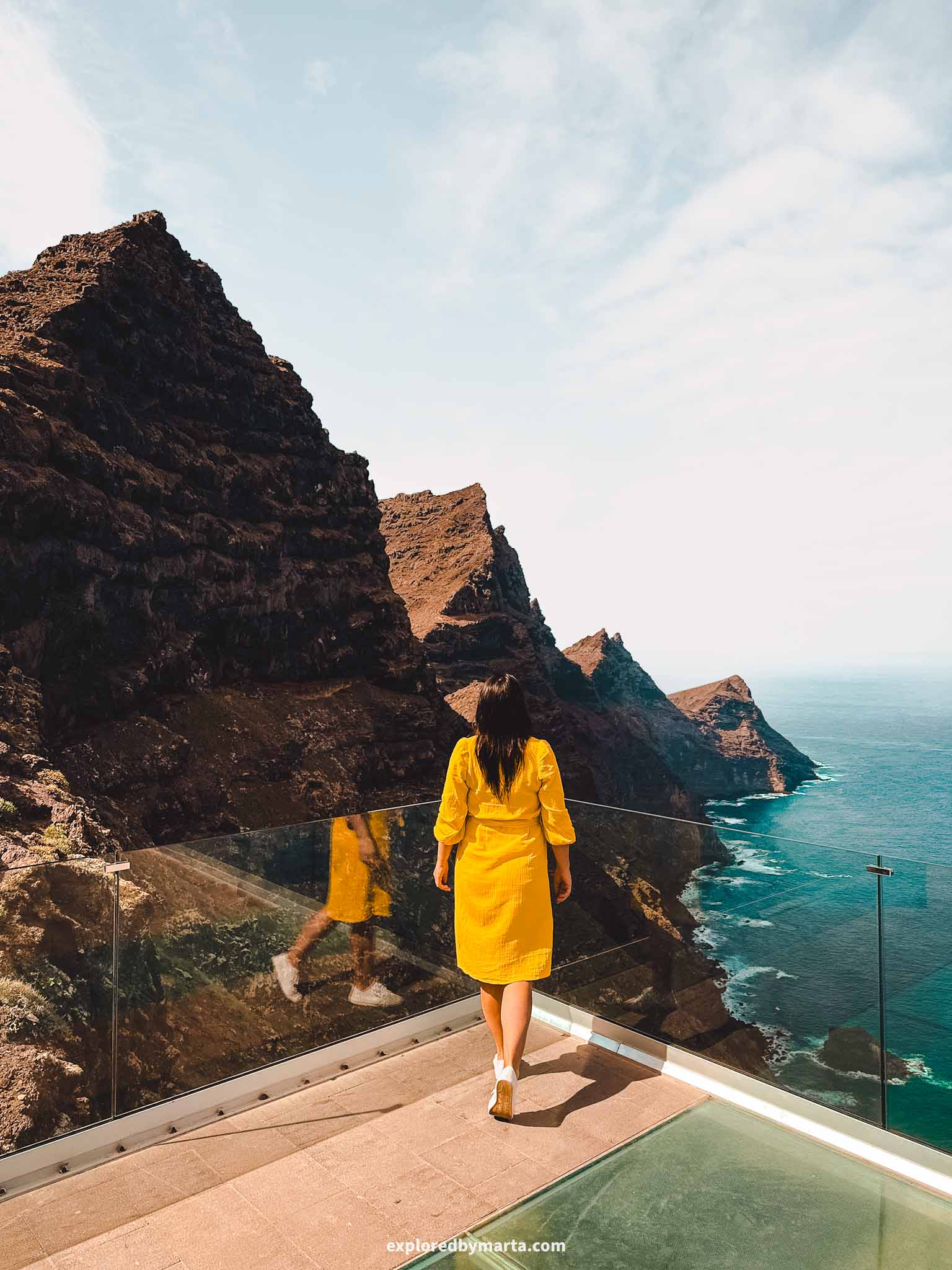
Mirador del Balcón is probably the most famous of all the viewpoints in Gran Canaria. It is located on the West coast of the island – the most dramatic part of Gran Canaria’s coastline with breathtaking scenery.
The road to get there is slow and challenging, but that hasn’t stopped road-trippers and even tour buses from traveling to this scenic spot! Despite its popularity, we managed to catch a moment alone there.
So why is it one of the best places to visit in Gran Canaria? Mirador del Balcón is a man-made glass platform perched on a cliffside, hundreds of meters above sea level. But the real highlight is the view.
The viewpoint offers you a view of the rugged coastline and the jagged rock formations known as the Dragon’s Tail, named for their resemblance to the spiked back of a dragon. That’s why this place is a must-visit!
Location: Mirador del Balcón
7. Barranco de las Vacas, the unique slot canyon
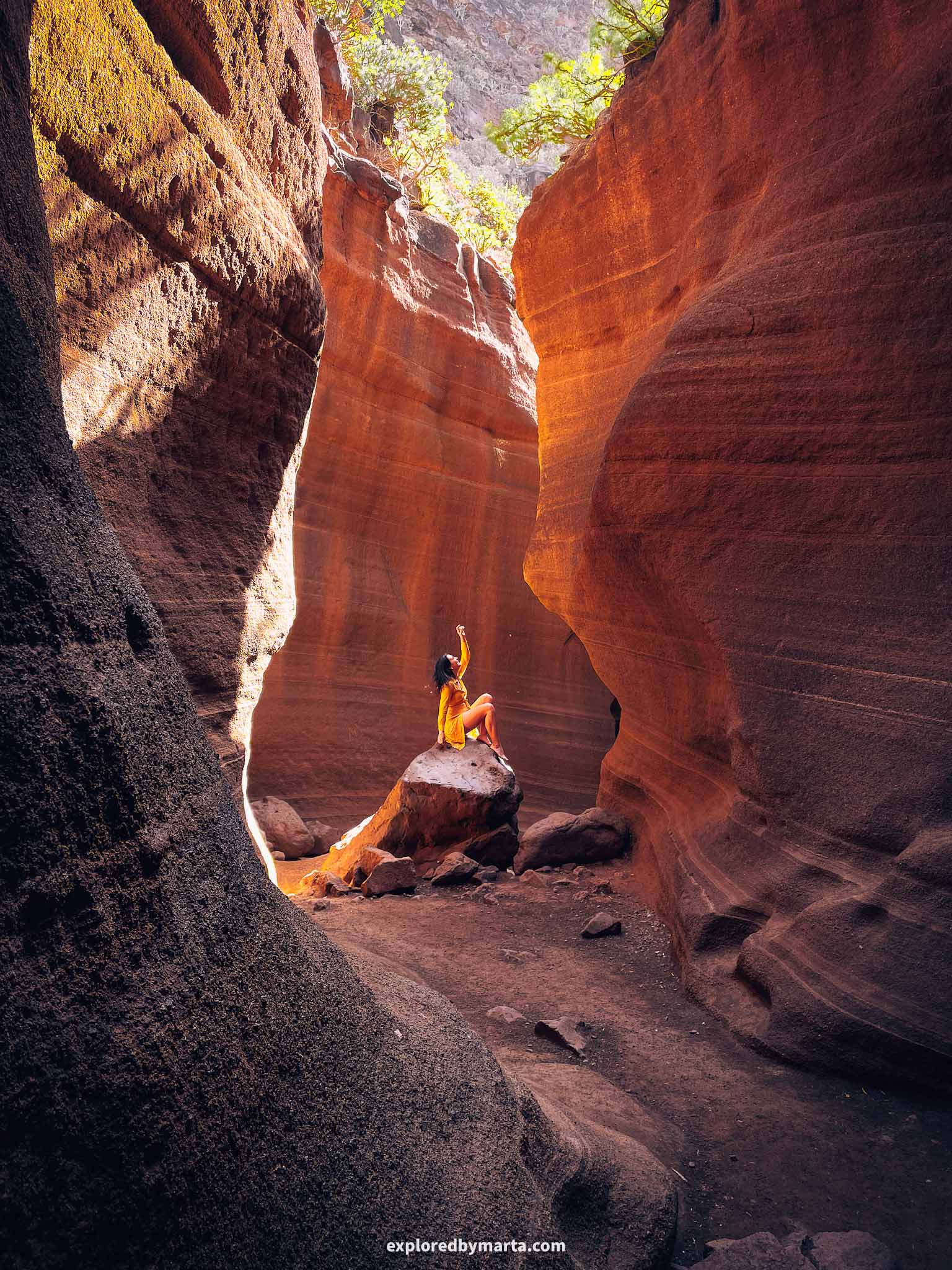
Barranco de las Vacas is one of the most unique and beautiful places in Gran Canaria. It is a narrow ravine with wave-like sandstone walls in golden and rust colors that resemble the famous Antelope Canyon in the United States.
Although Barranco de las Vacas slot canyon is really small and short (like 100 meters short!), it has become one of the most sought-after hidden gems in Gran Canaria.
Just like other canyons, Barranco de las Vacas was formed by erosion, wind, and rain over the period of thousands of years.
You can get to Barranco de las Vacas by car, leaving it at the side of the road. From there, you can either take a path leading directly into the valley from the parking area or you can walk along the road and then scramble down into the riverbed from the bridge.
If you’re traveling with kids or don’t have sturdy shoes, I recommend taking the path from the parking area, as it is not as steep as the walls next to the bridge.
After you reach the riverbed, you need to go through the tunnel under the bridge and follow the riverbed uphill. The photo-perfect place with the narrow part of the canyon is just 100 meters from the bridge, so it is a very short hike and quite easy to reach.
I recommend coming in the morning for the most tranquil experience. However, visitors come and go quickly throughout the day—it’s a short stop! So, you can still find a moment without crowds inside the canyon during the day as well.
Location: Barranco de las Vacas
8. Tejeda, the most scenic village in Gran Canaria
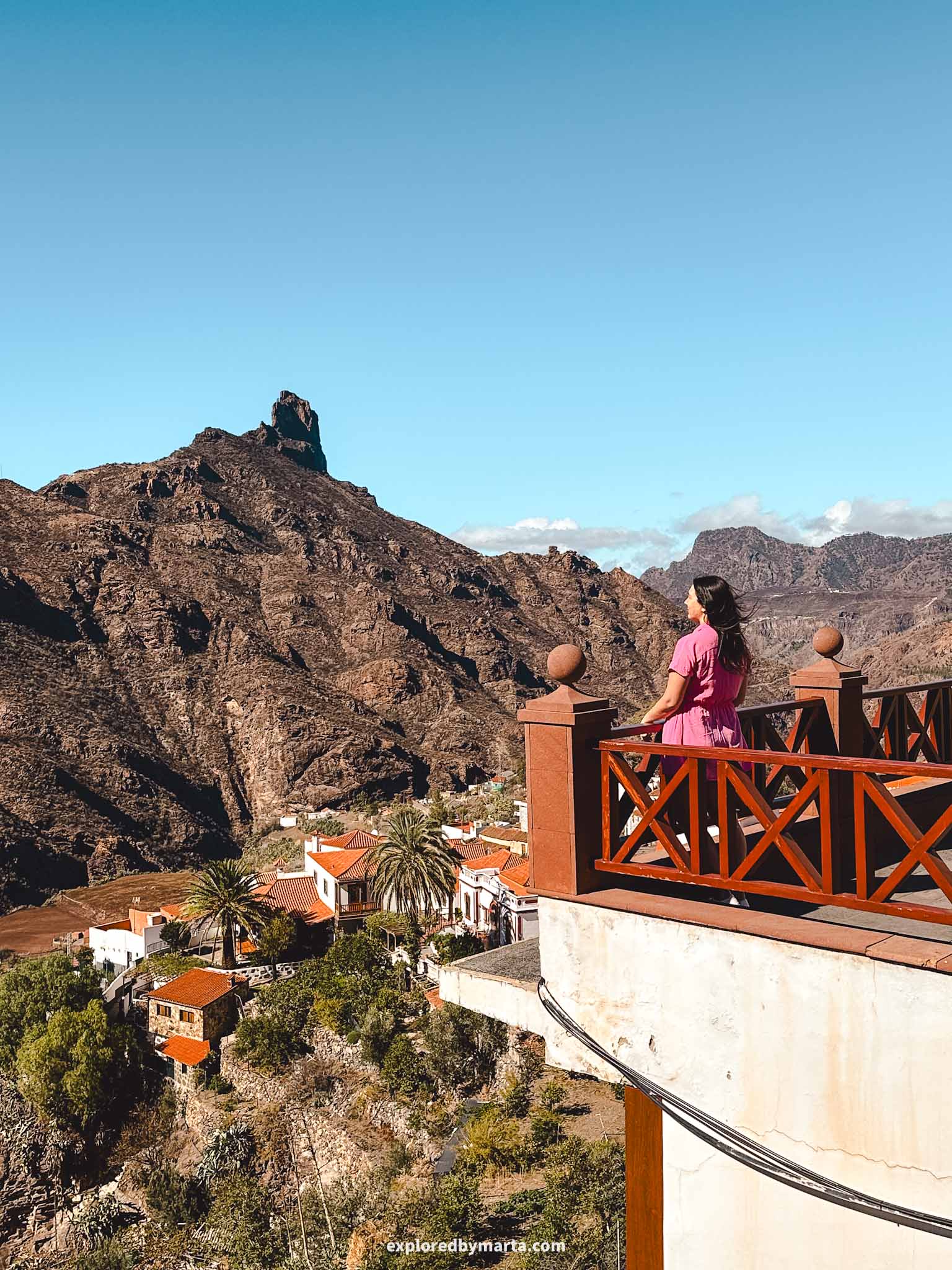
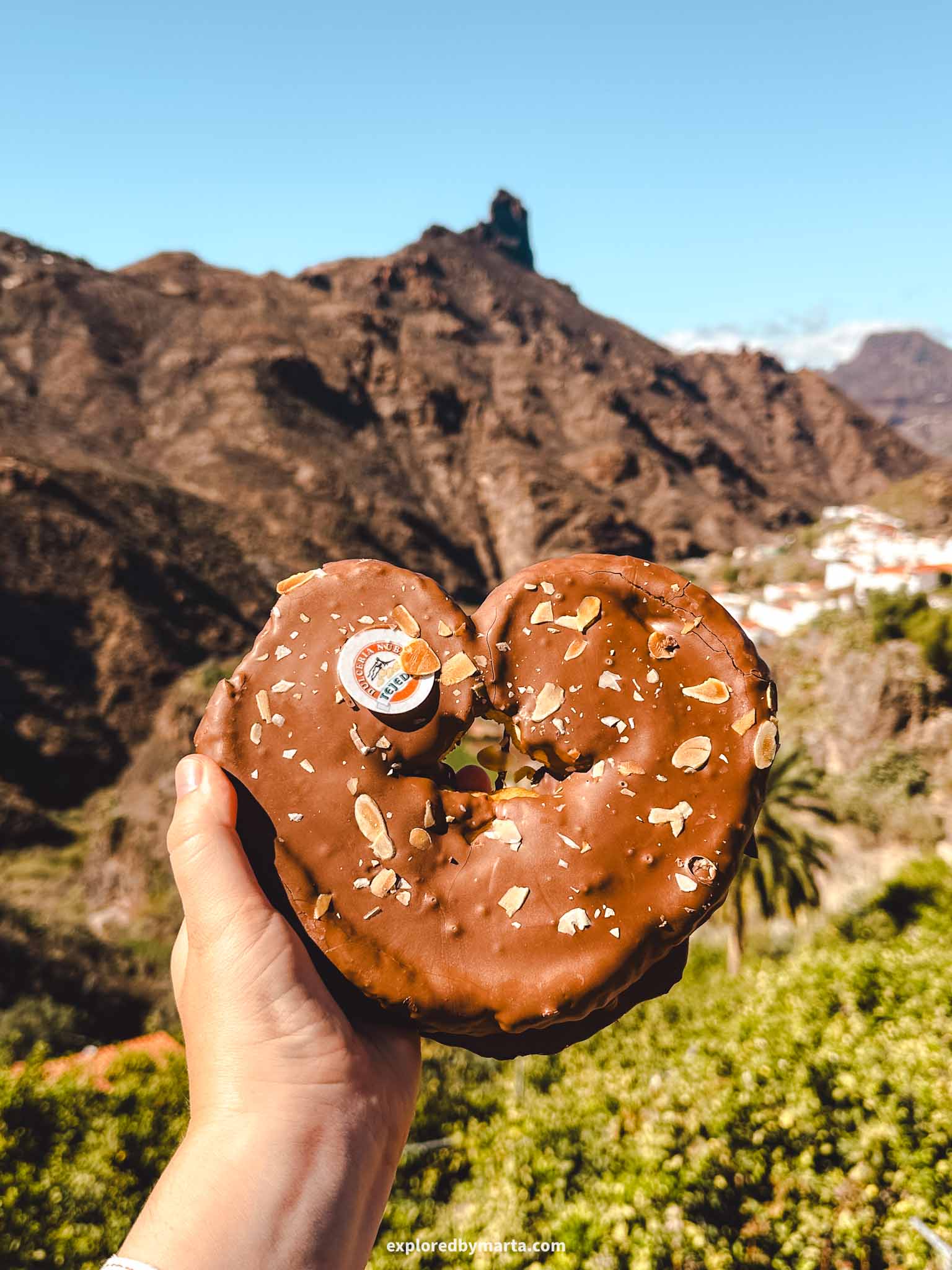
Tejeda has my heart – it was one of my favorite places to visit in Gran Canaria! Nothing comes close to this charming oasis deep in the mountains! In my opinion, Tejeda is the most beautiful of all the villages in Gran Canaria!
Hidden in the mountains in the heart of the island, Tejeda charms everyone with its serene surrounding landscapes, scenic views of Roque Bentayga, and Roque Nublo, and a peaceful atmosphere (if you manage to avoid the midday crowds!).


Visiting Tejeda is a must, and I mean it for many reasons. First of all, it is part of a vast network of popular hiking trails in the mountains, so many hikers start hikes, finish hikes, or just pass through here during their hikes.
Fun fact! Back in 2017, I participated in Gran Canaria’s most iconic trail race, Transgrancanaria. Together with my now-husband, I tackled the 125-kilometer distance, which passed through Tejeda.
That was my first visit to Tejeda—a quick one, but enough to immediately fall in love with this charming village.
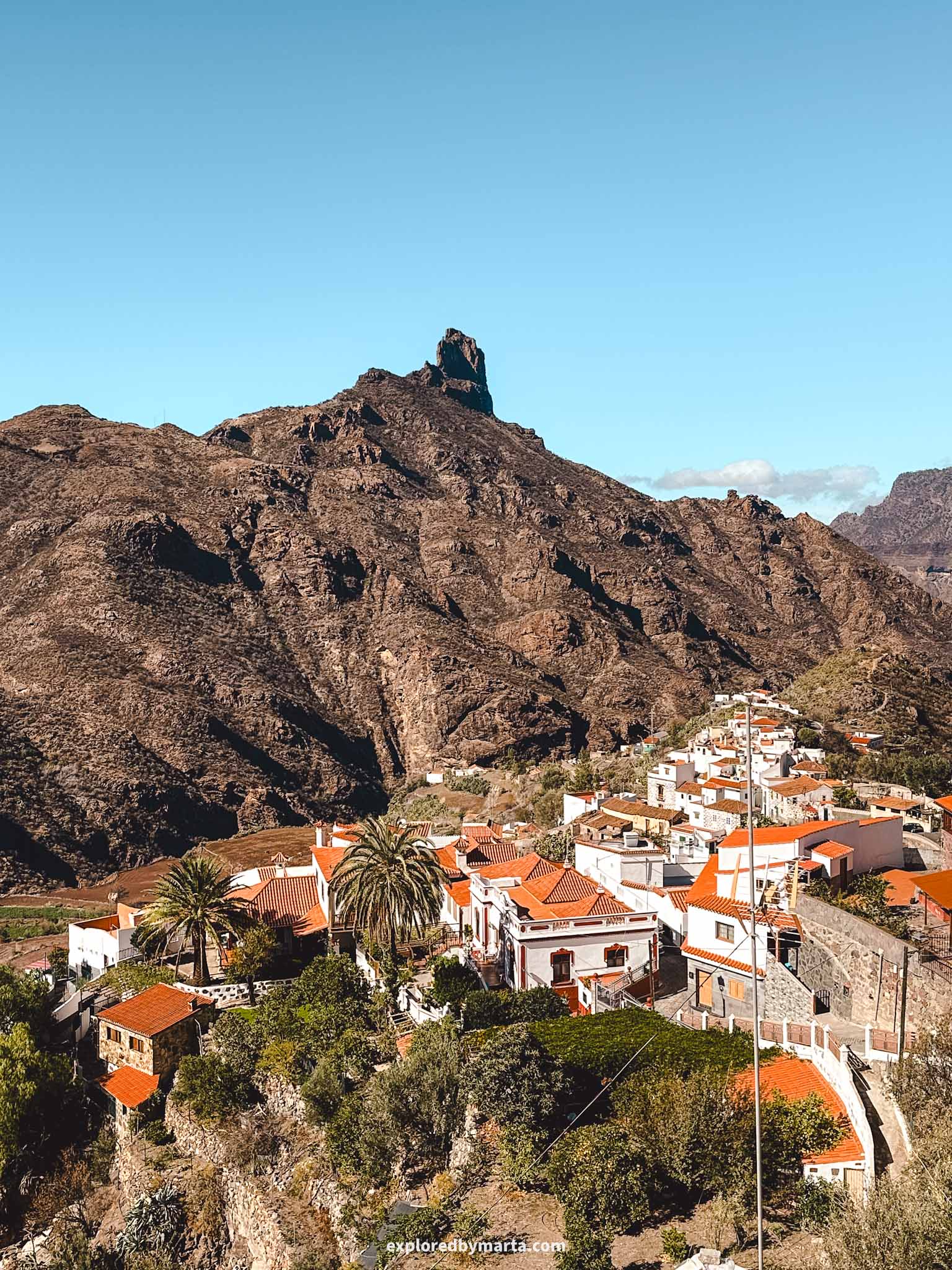
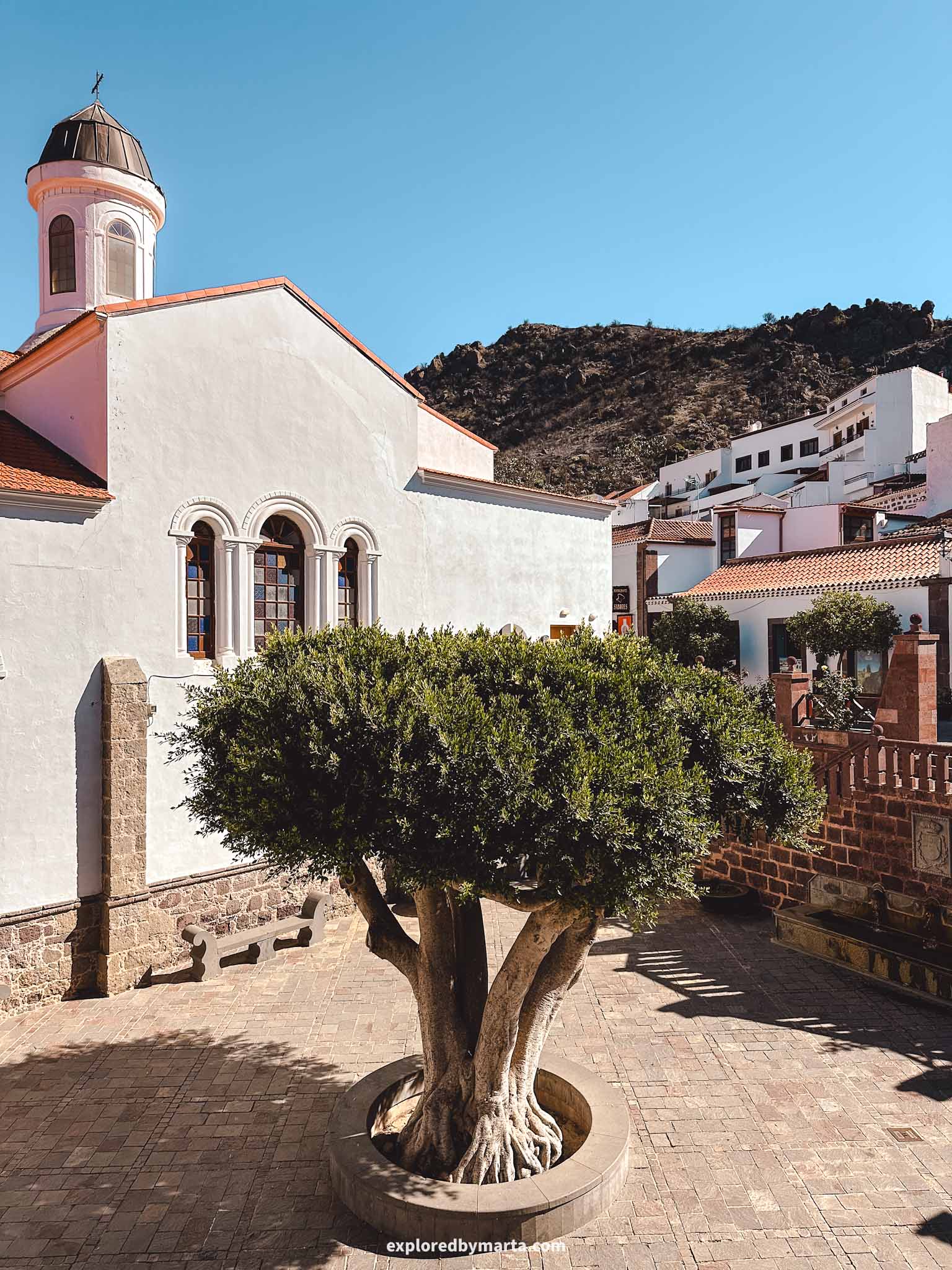
Tejeda is also a convenient stop to make during the head-turning road trip around the mountains of Gran Canaria. Which, I’m sure, you will do at some point during your visit to the island.
Third, Tejeda is famous for its pastries—trying one of the delicious palmeras or other almond pastries from Dulcería Nublo is a must! If you arrive later in the morning, there will already be a line of people waiting outside the pastry shop.
You can eat your pastries right there on the street. There are a couple of benches facing the mountain peaks and the iconic Roque Bentayga rock formation. The best picnic view you can find!
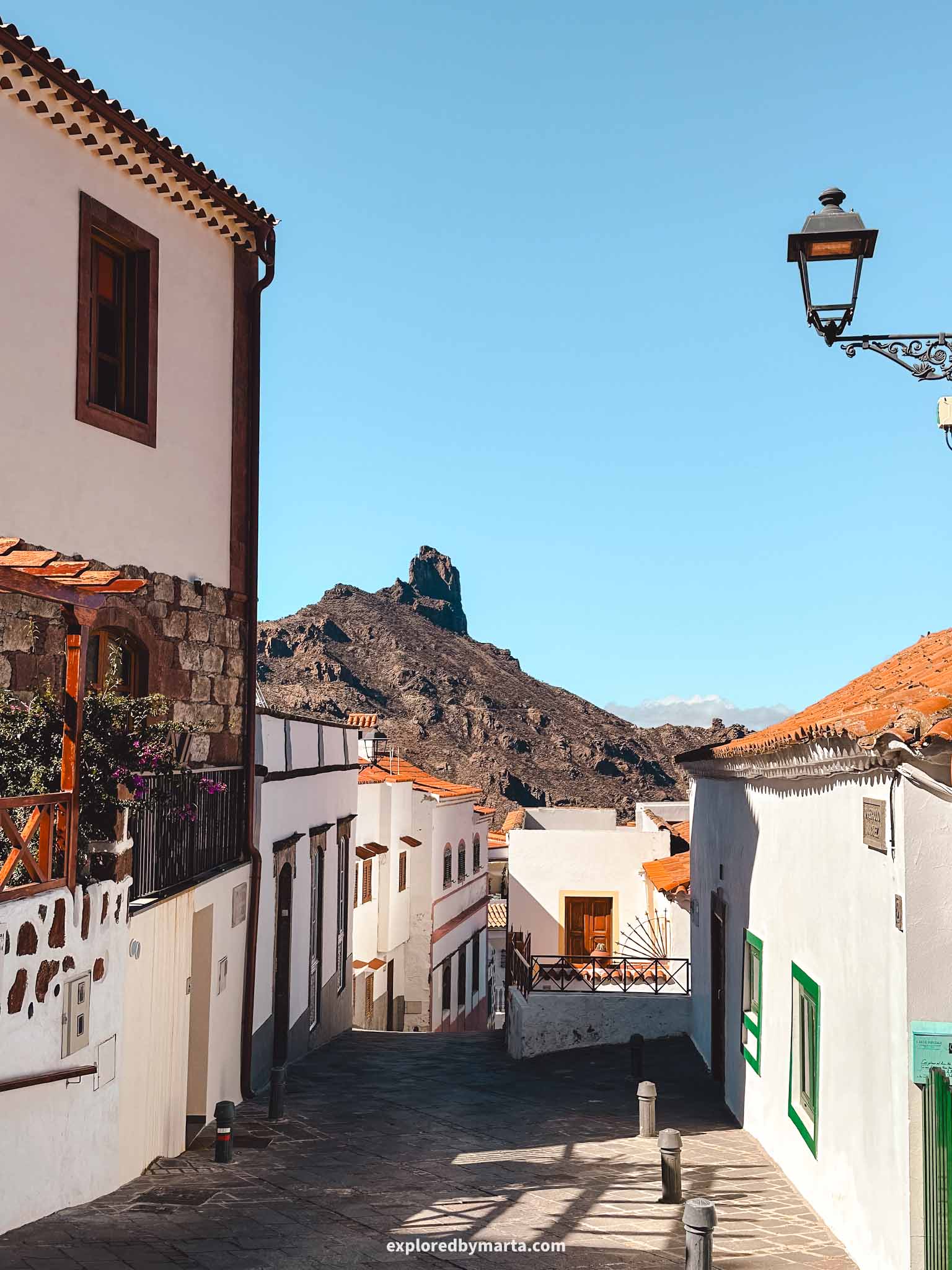
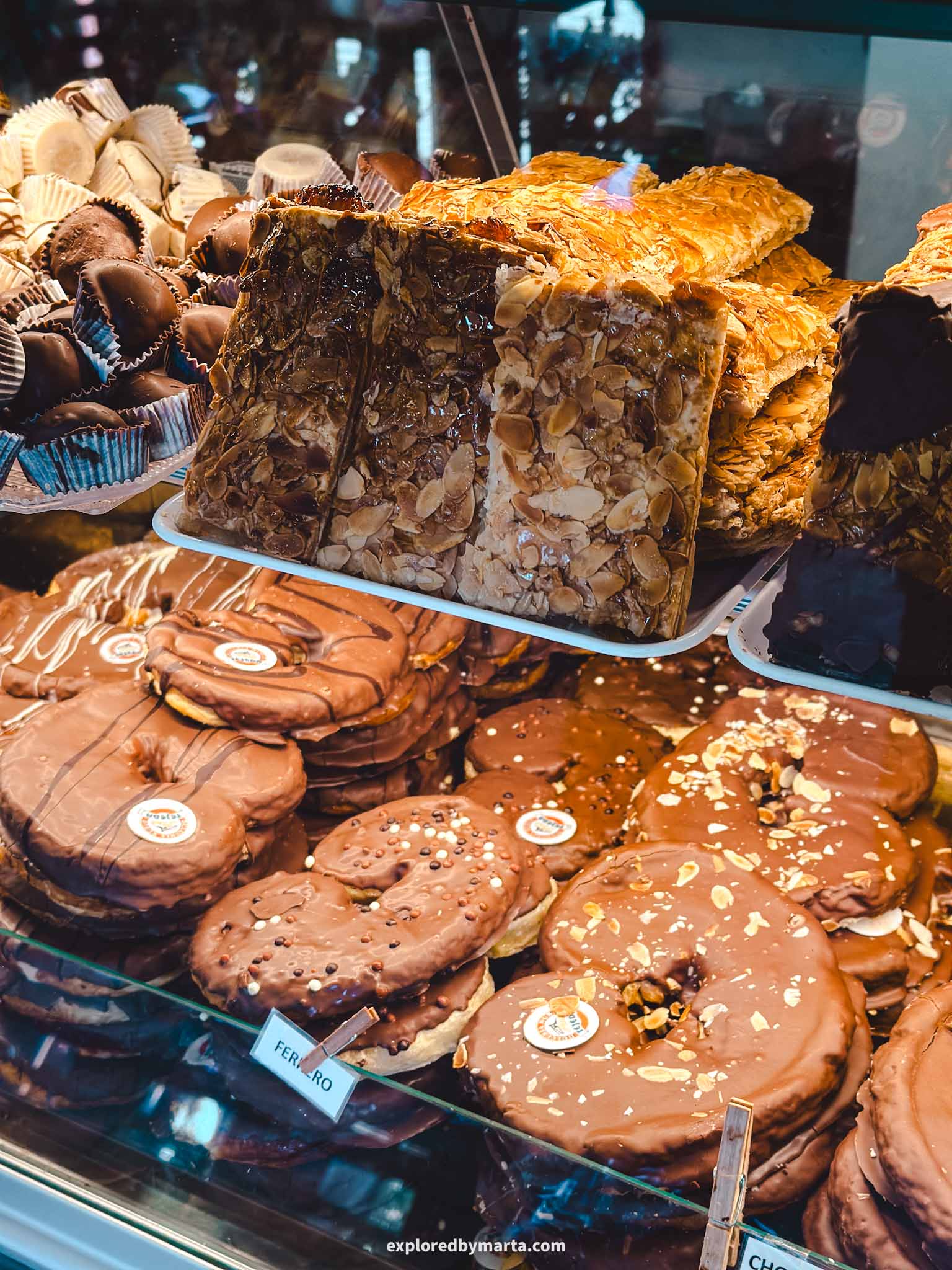
Actually, the whole village offers some of the most amazing views in Gran Canaria. Walk down Calle Dr. Domingo Hernández Guerra Street in Tejeda, and you’ll see exactly what I mean.
At the end of the street, you’ll find a small square with benches and a statue right next to the church. This is Mirador de Tejeda offering a front-row view of the iconic Roque Bentayga rock formation.
If you have more time to spend in Tejeda, I recommend finding a restaurant with a mountain view and having lunch here. There’s just something special about this beautiful village and I hope you get to feel that too.
Location: Tejeda – Dulceria Nublo
9. Las Palmas de Gran Canaria, the island’s capital
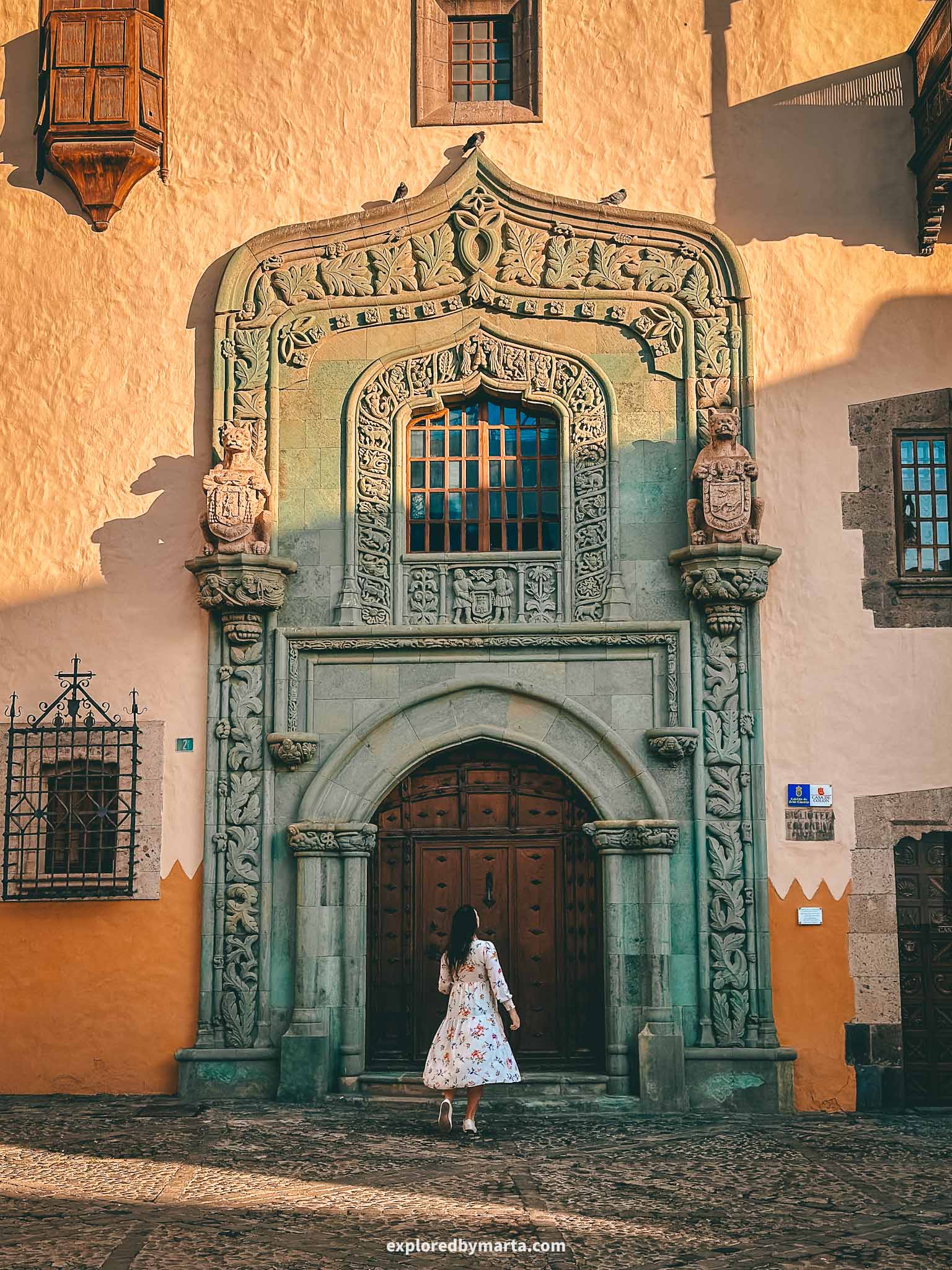

Las Palmas de Gran Canaria is the capital and the birthplace of Gran Canaria. It was founded back in the 15th century and is the perfect place to visit on the island to enjoy the city buzz, historic places, beautiful beach, and fun experiences.
The best and most popular places to visit in Las Palmas de Gran Canaria are Las Canteras Beach, one of the best urban beaches in Europe, the famous Poema del Mar aquarium, and the city’s old town – Vegueta.
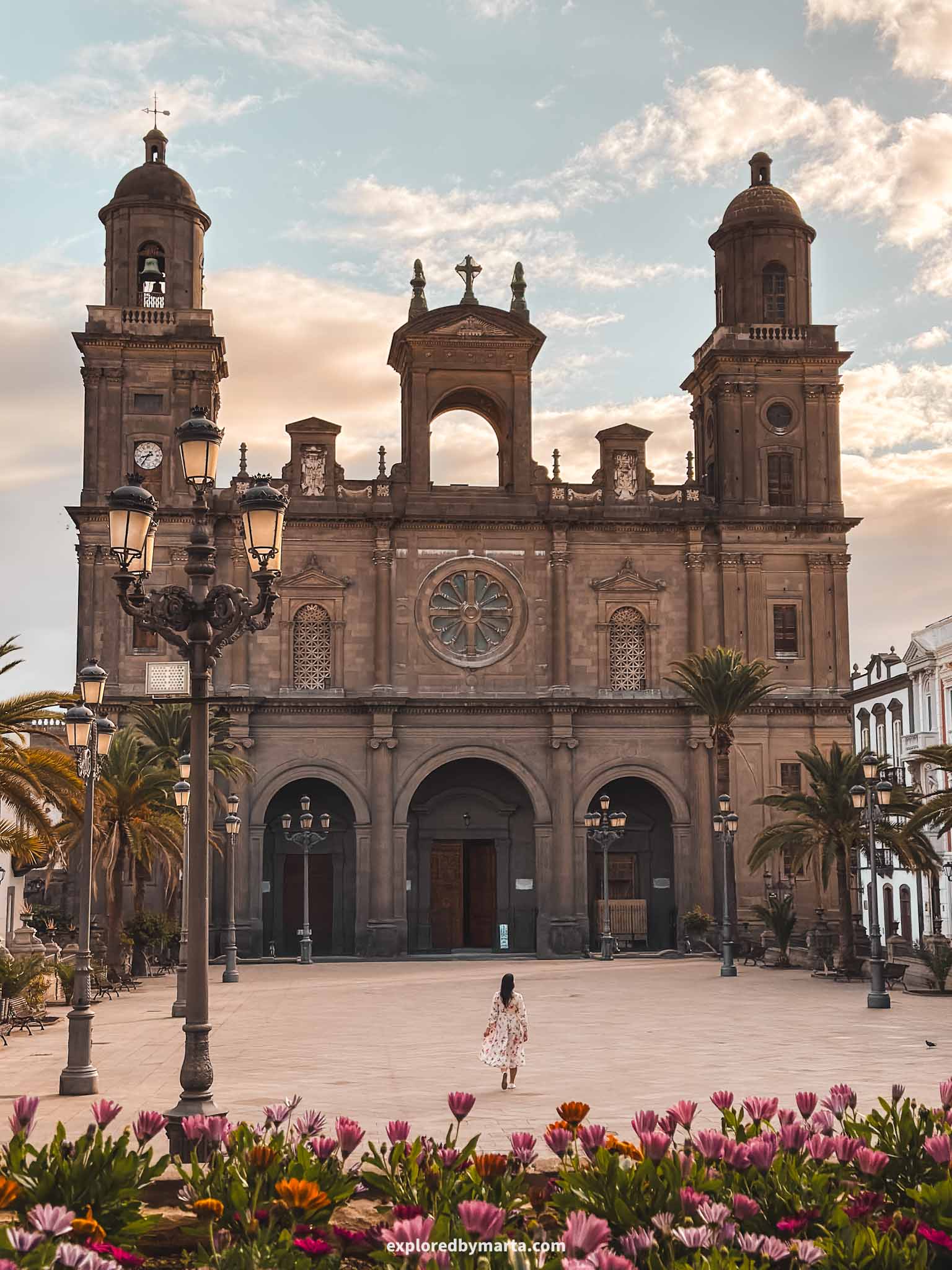

Vegueta is the oldest part of the capital and it is where the Spanish conquistadors first settled on the island so it is full of centuries-old buildings, cobblestone streets, historic charm, and colonial architecture.
But it was my favorite place to visit in the island’s capital!
Vegueta is rather small so you can easily walk to all the most important places on foot. We arrived here in the morning, parked our car by the Mercado de Vegueta, and started exploring.

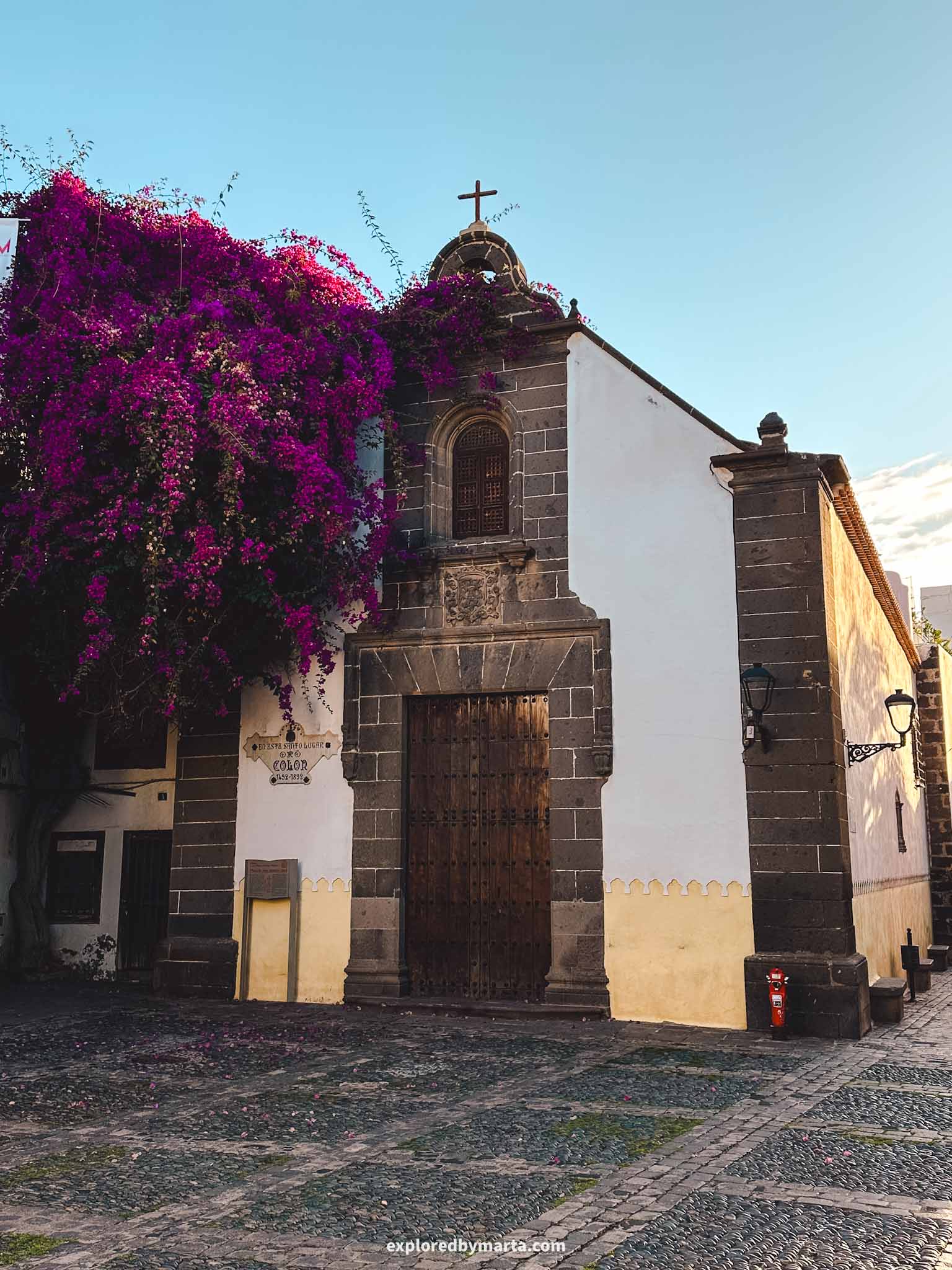
The most important places to visit in Vegueta include the Cathedral of Canarias located in front of the beautiful Plaza de Santa Ana Square.
Another must-visit is Casa de Colón, a colonial mansion that Christopher Columbus visited during his stop in Gran Canaria on his transatlantic voyages. This was my favorite building in Vegueta!
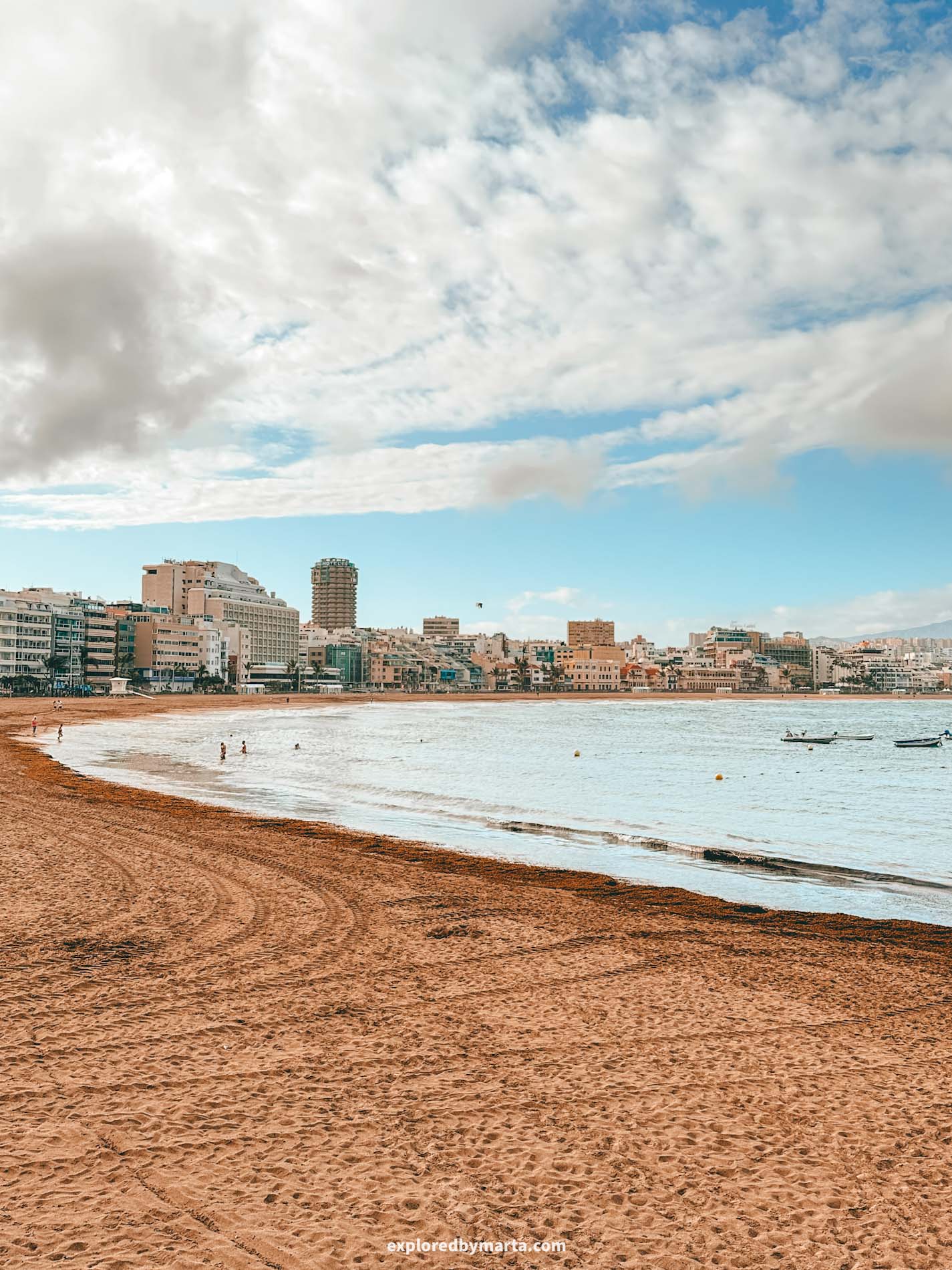
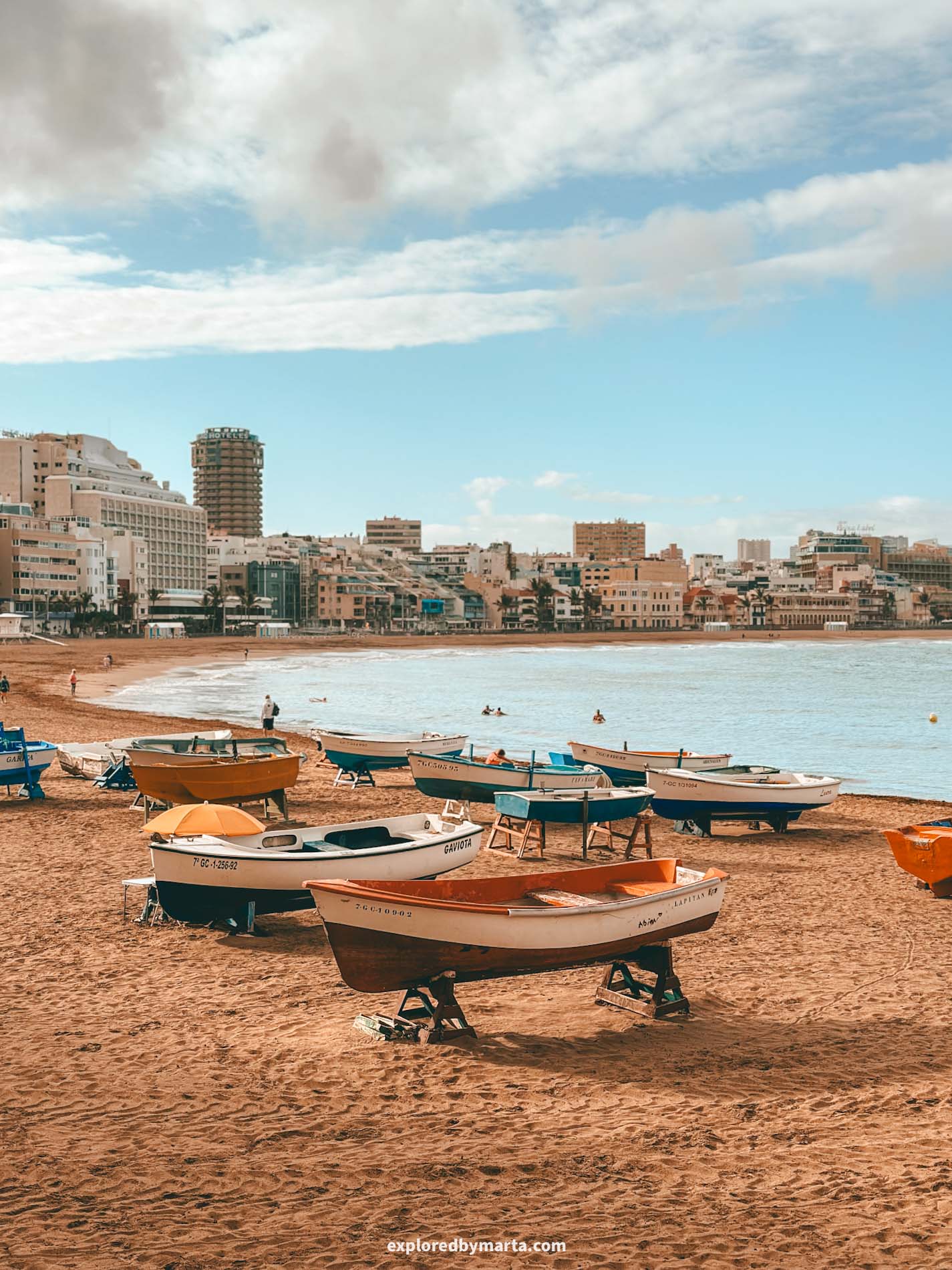
Right next to it, you will find a charming street Calle de los Balcones known for its charming colonial architecture, historic houses, and their iconic wooden balconies.
I also liked the beautiful 19th-century Gabinete Literario or Literary Cabinet building right next to Alameda de Colón and the gorgeous amphitheater Teatro Pérez Galdós.
Las Palmas de Gran Canaria often gets overlooked in favor of the mountains and all the sunny places in the south but there are definitely many beautiful places to explore in the city. My favorite place was the Old Town so make sure to plan a visit to this place!
At least come, drink a morning coffee in a square, and enjoy the scenery!
Location: Vegueta – Poema del Mar Aquarium – Las Canteras Beach
10. Banana plantation at Hacienda La Rekompensa

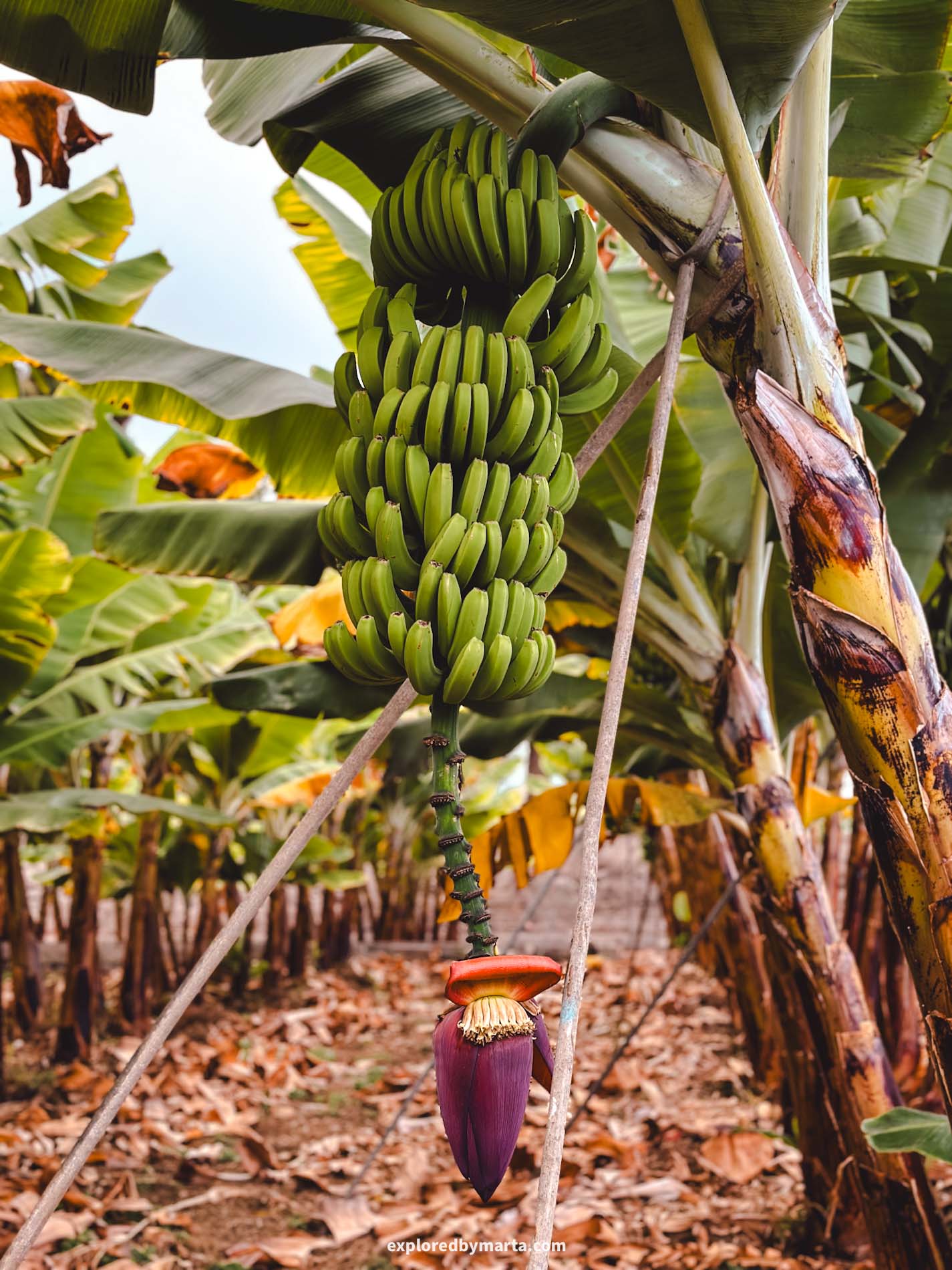
Growing bananas is a cornerstone of Gran Canaria’s agriculture. Thanks to the Canary Islands’ favorable climate, banana cultivation thrives here—so visiting a banana plantation is definitely one of the top experiences in Gran Canaria.
The best place to tour a banana plantation is Hacienda La Rekompensa, located near Arucas in northern Gran Canaria.
While the southern part of the island is mostly dry, the north receives moisture from the ocean, making it much greener and wetter—perfect conditions for growing bananas.


You can join guided tours through banana plantations every day (they last about 1 hour), learn about thirteen different types of bananas, see the plants, and taste different banana products made of the special Canarian banana (like banana wine, jams, or cosmetics!).
Hacienda La Rekompensa is the only banana plantation in the Canary Islands that has such a banana variety. They have over 7,500 banana plants and you’ll have amazing views of the Atlantic Ocean from the plantation. A must-visit place in Gran Canaria!
Location: Banana Plantation Tour
11. Coffee plantations in Agaete Valley
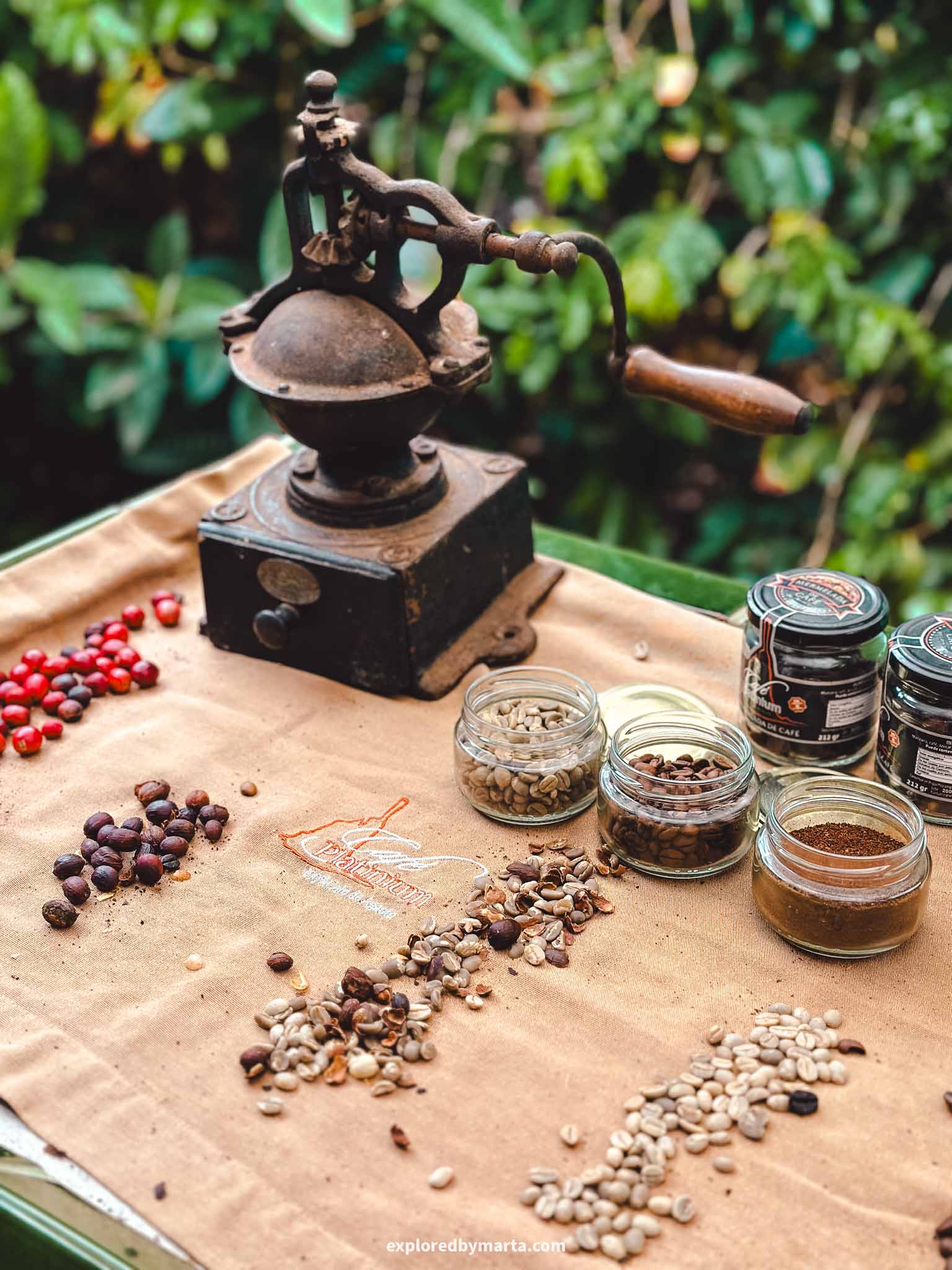
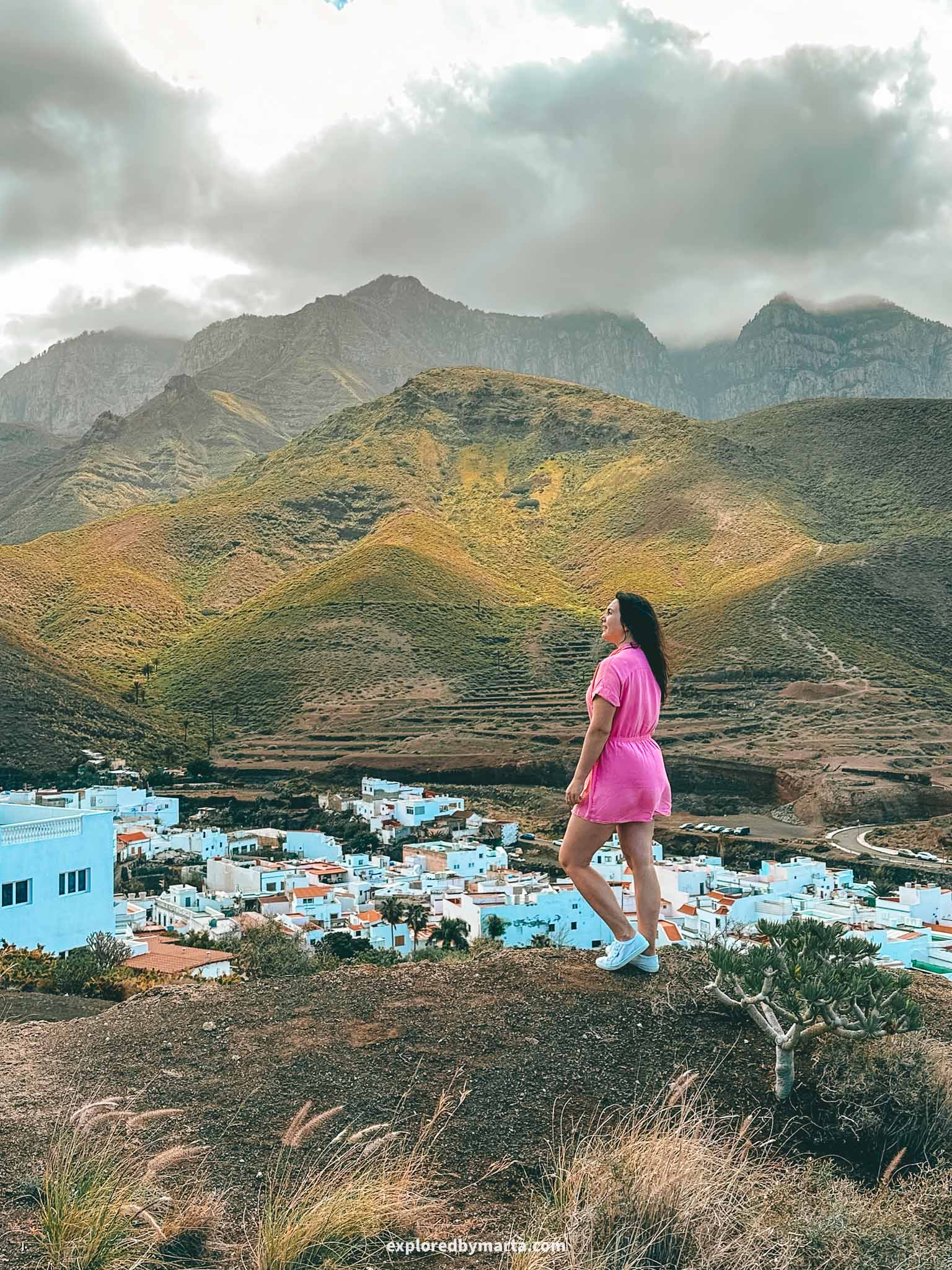
Bananas are not the only famous crops people grow in Gran Canaria. Surprise!
Yes, there are coffee plantations in Gran Canaria—one of the only places in Europe where you can find them! They are all located deep inside the beautiful Agaete Valley.
Agaete Valley is one of my favorite places to visit in Gran Canaria. It has it all – amazing mountain views, hiking trails, scenic beachside with black sand beach and waterfront restaurants, and, most importantly, orchards of tropical fruits and coffee plantations.
There are a couple of popular coffee plantations to visit. The most popular are Café Platinium, also Finca los Castaños, and probably the most famous coffee plantation (and vineyard) where you can stop by for a tour is Bodega Los Berrazales.
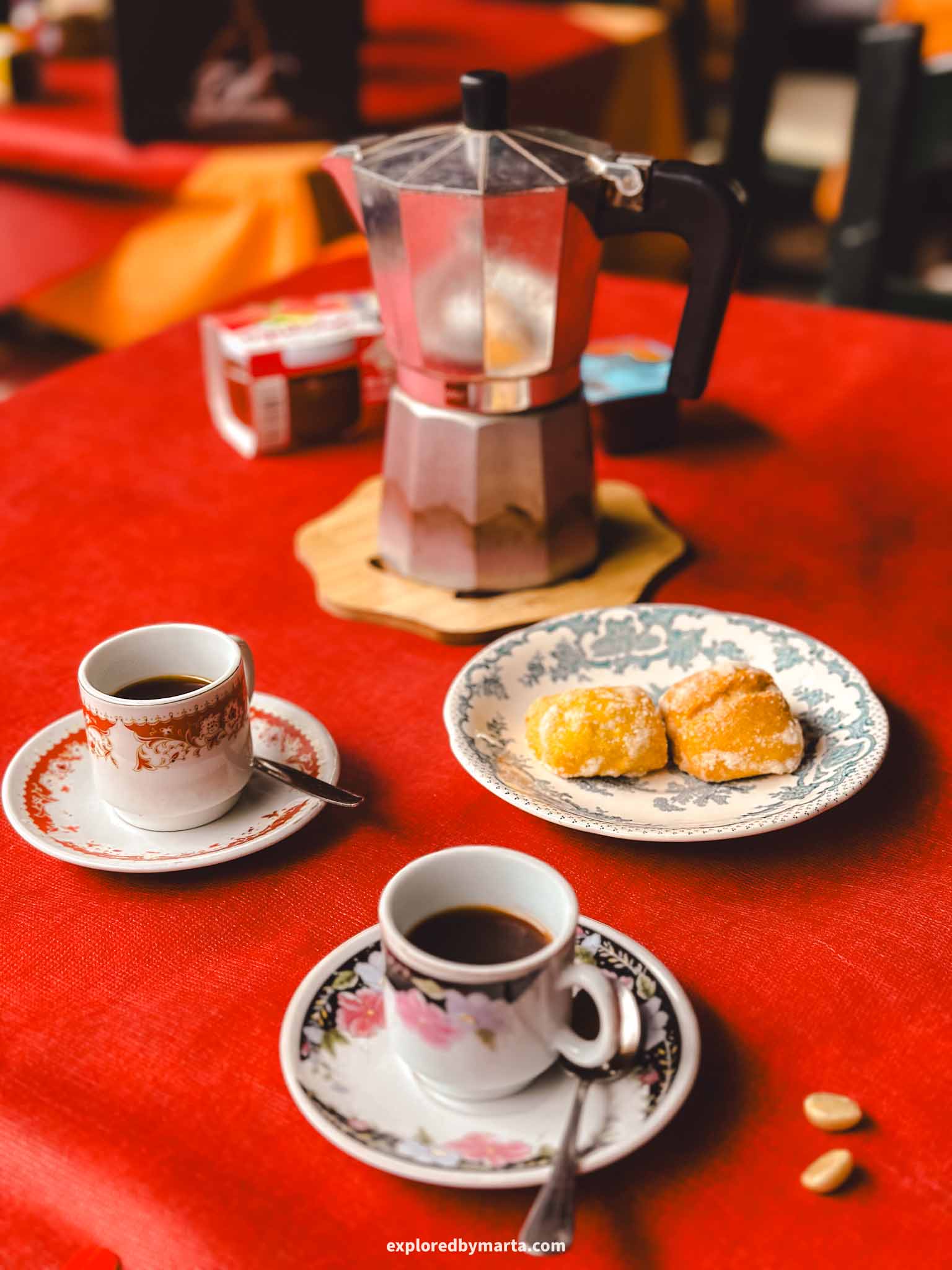

We visited one at Café Platinium deep into the valley, where we got a private garden tour, a coffee tasting, and a coffee roasting demonstration.
We didn’t book anything in advance—you just go there, and they’ll sort everything out. We arrived in the morning and got a private tour. This was my first time seeing a coffee plant!
My biggest revelation was that inside a single coffee berry are two coffee beans!
After the garden tour, we got to sit at a table and try their coffee with cookies and jam. You can also buy all of that in their shop, along with many other locally produced products.
We ended up buying some jam and a bag of their roasted coffee beans.
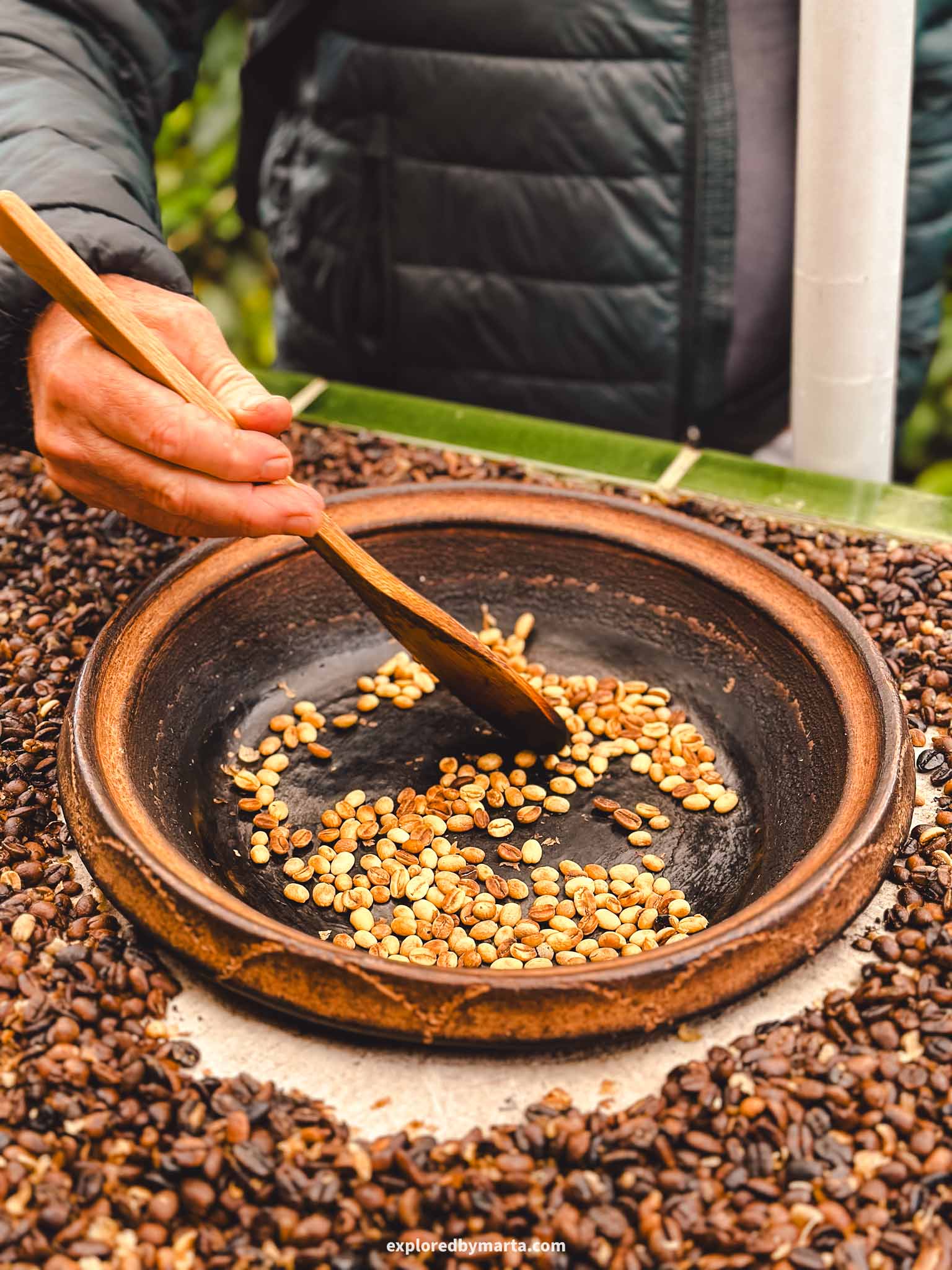
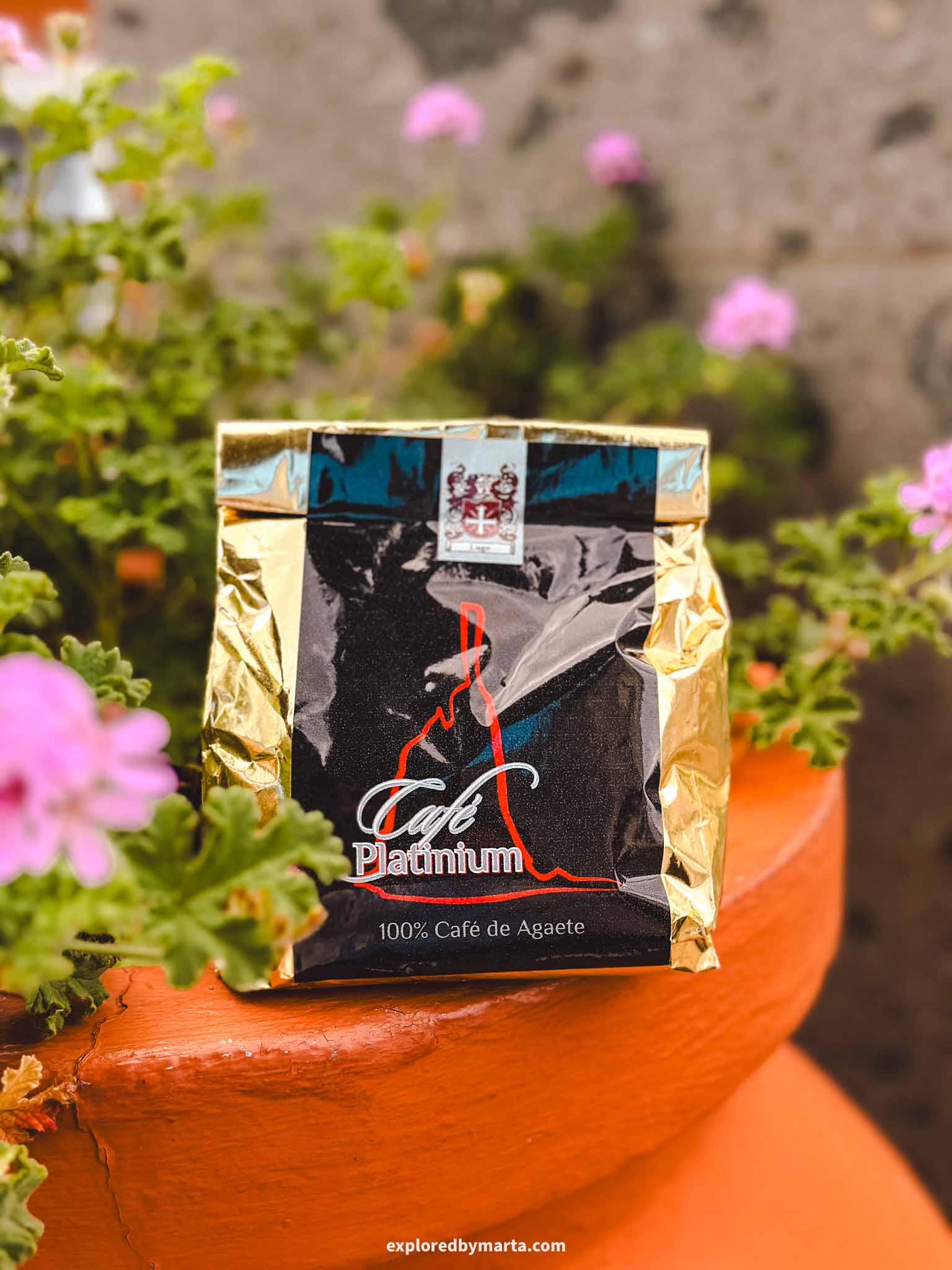
While we were drinking coffee, they started a coffee roasting demonstration, showing how it was done long before modern technology. It was really interesting—they let you touch and try everything.
I highly recommend doing the tour! When we visited it was only around 10 EUR per person which is a very reasonable price.
However, if you don’t want to do it, you can simply stop by Café Platinium for a cup of coffee. They operate simply as a café, too! Drinking a cup of coffee which was grown and roasted in Gran Canaria is one of the top things to do on the island!
Location: Café Platinium
12. Cueva Pintada in Gáldar, capital of Guanche kingdom
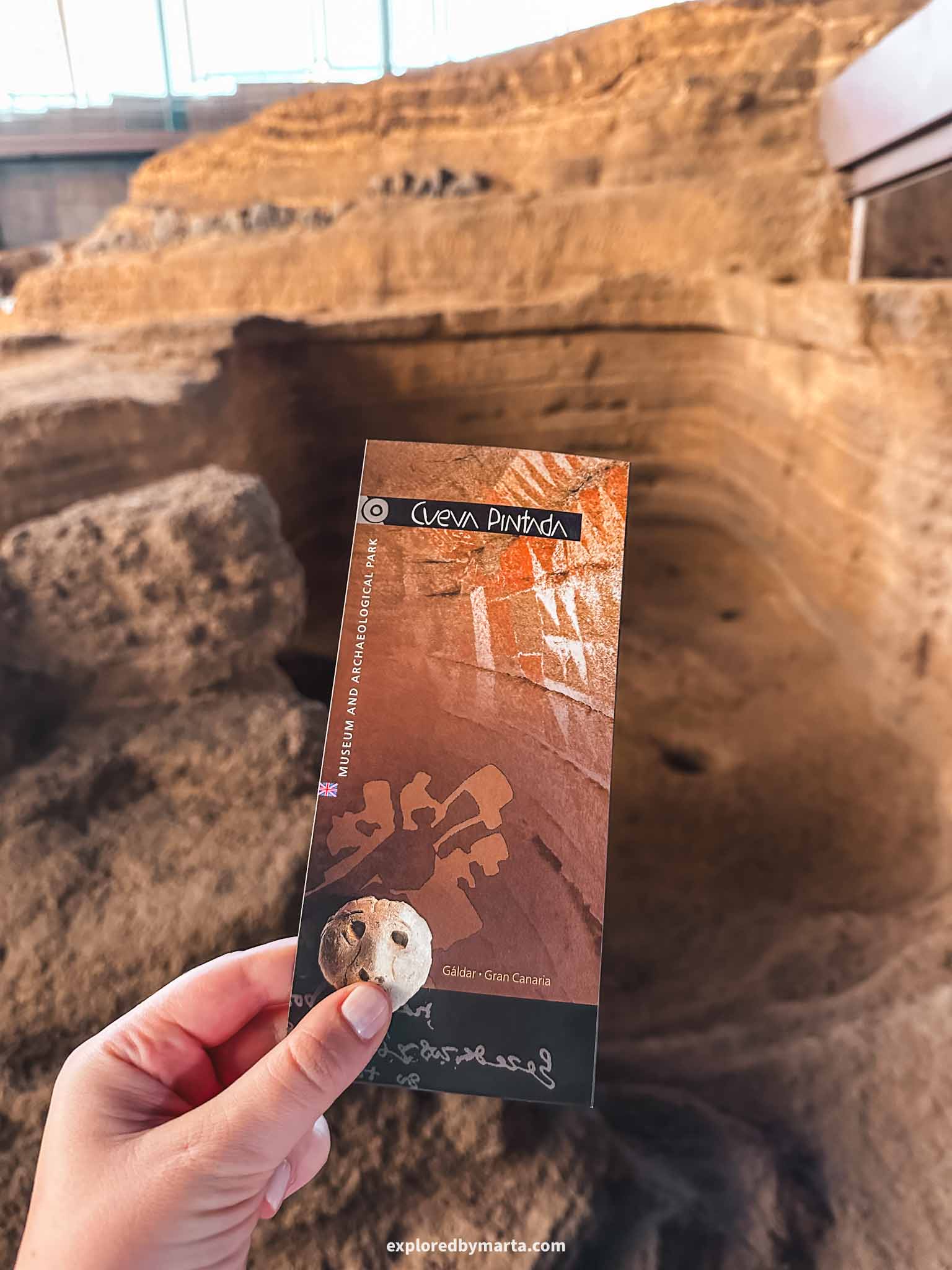
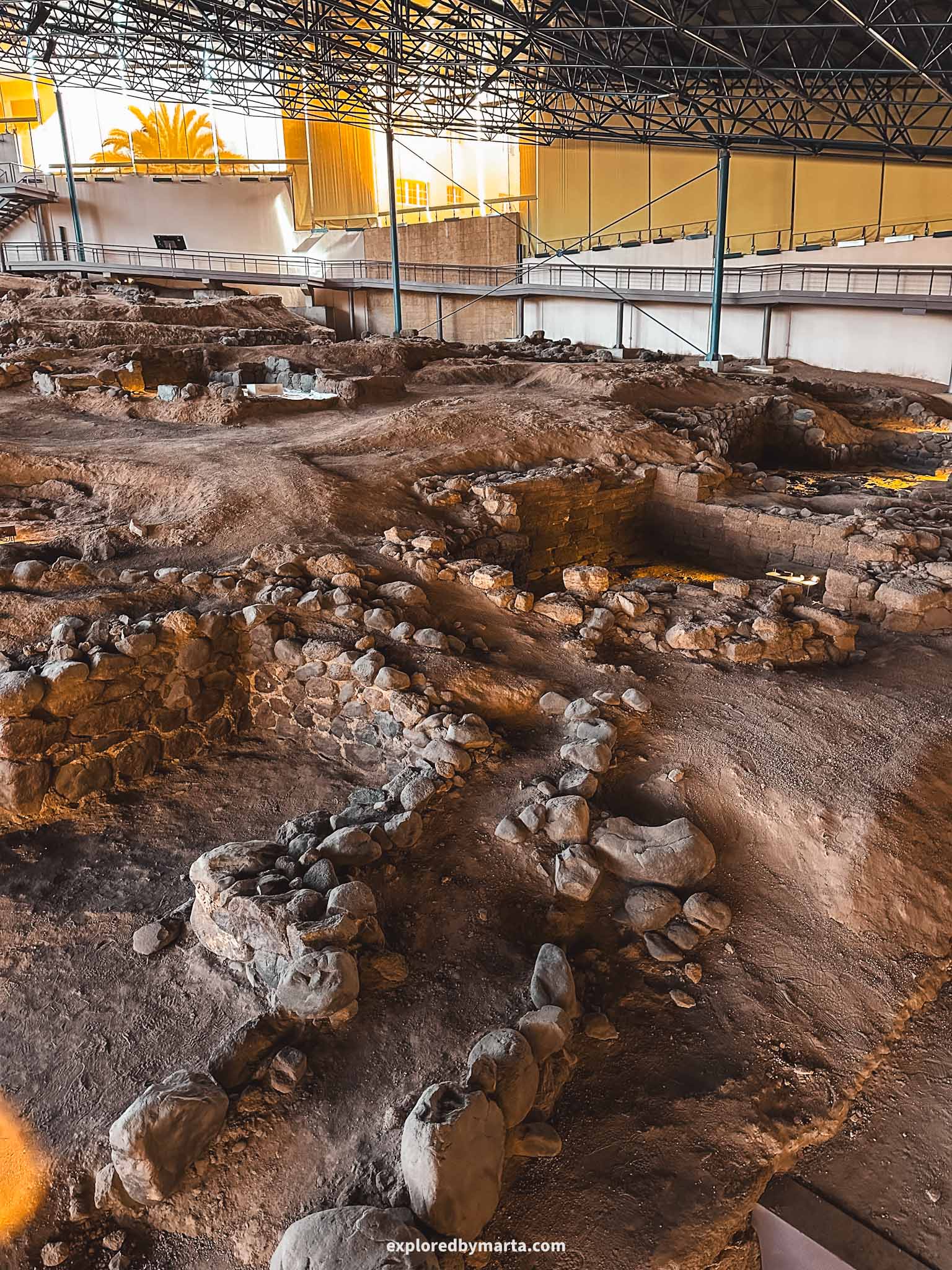
Cueva Pintada is one of the most famous caves in Gran Canaria. Located in Gáldar, the ancient capital of the island, this massive archaeological site is known for its well-preserved geometric paintings inside the cave, left by the island’s ancient inhabitants.
The paintings are believed to be over 1,000 years old. While this might not seem extremely ancient, Cueva Pintada is the only cave on the island where such paintings are still visible, making it one of the must-visit places in Gran Canaria, especially for history lovers.
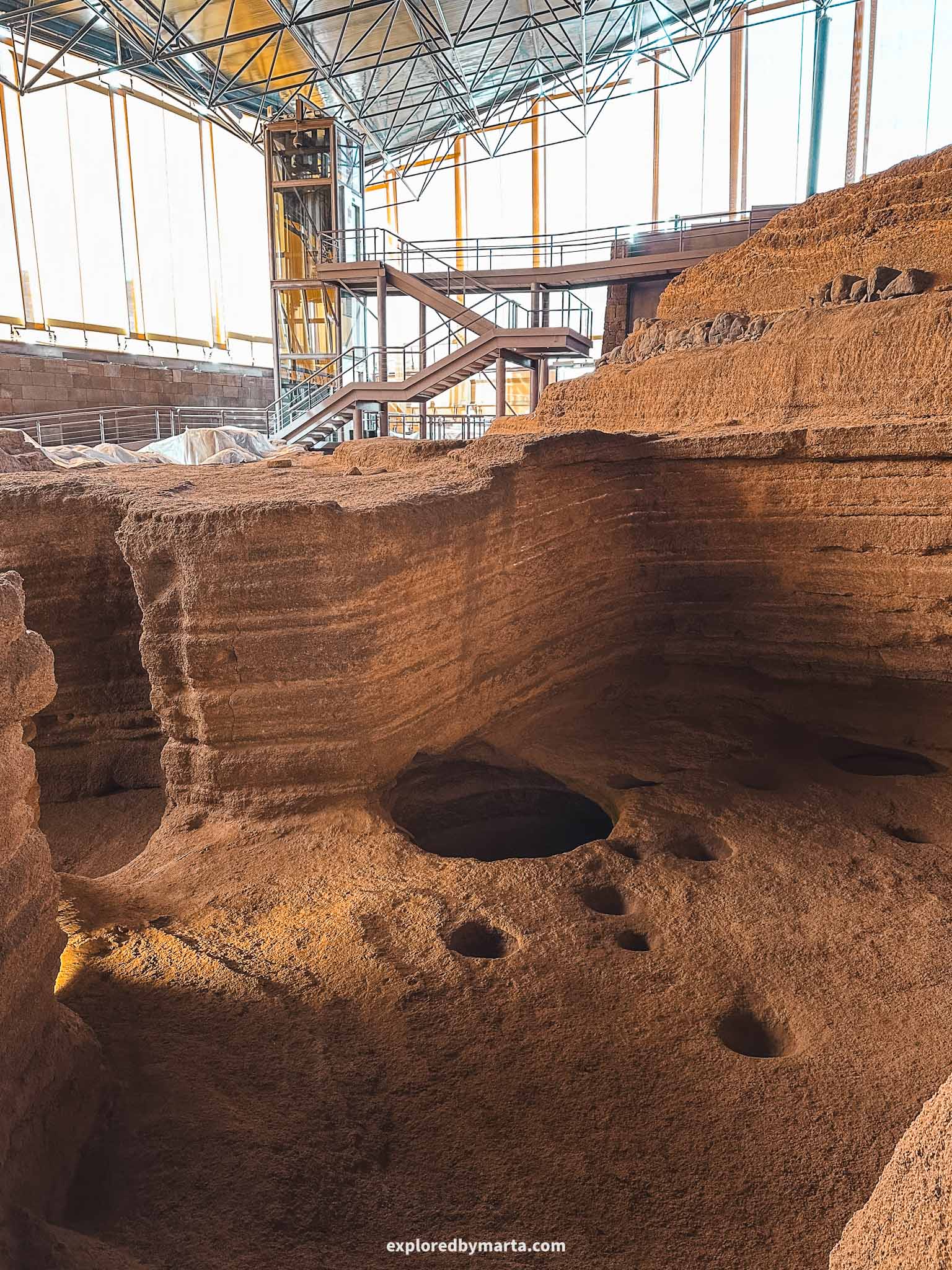

The cave is located inside a museum with an entrance fee and set opening hours. You can visit the site on your own or join one of the scheduled guided tours. We opted for a self-guided visit, where you follow a planned route through the museum.
The planned route includes checking out artifacts from around the island and watching two short films about the Gran Canaria’s history and life of the island’s indigenous inhabitants, the Guanches, and the Spanish conquest.
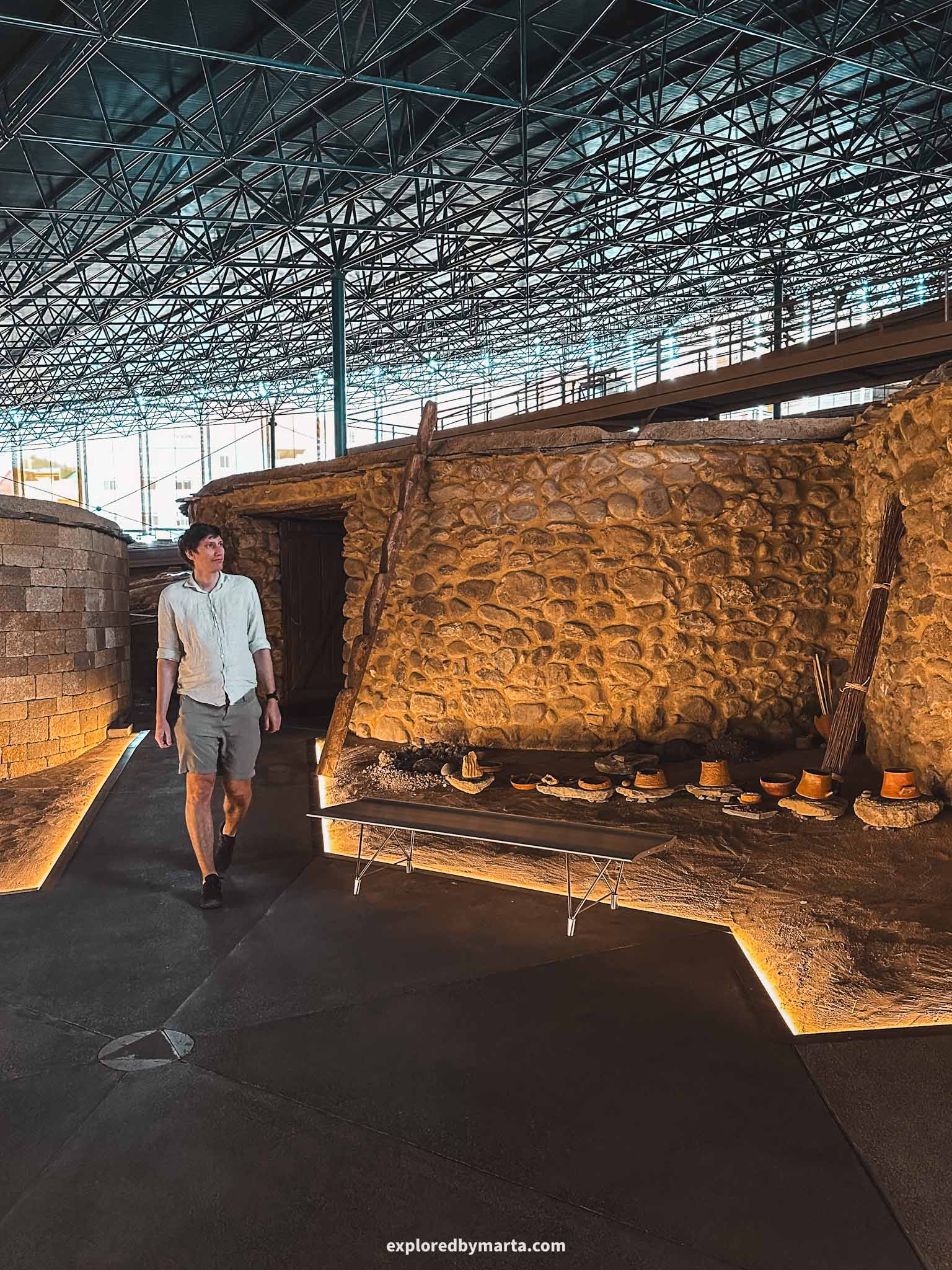

The second part of the visit takes you to the archaeological site. It’s a large, roof-covered area filled with caves, replicas of the homes where the Guanches lived, and, of course, the famous Painted Cave.
To better preserve the cave paintings, the entire cave is housed inside a small shed and protected by a glass wall. You can only enter the shed when invited (they organize visits in smaller groups), and no photos are allowed inside the cave.
Overall, the visit took us about an hour. We arrived right after the museum opened, so there were no lines, and everything went smoothly. However, it can get crowded, especially when tour buses arrive.
Location: Cueva Pintada Museum and Archaeological Park
13. Charcos—Gran Canaria’s volcanic pools

Gran Canaria is known for its natural volcanic pools, called charcos, which are especially common along the north coast of the island.
Sandy beaches in Gran Canaria are quite rare, and much of the coastline is rugged and covered with rocks, which can make finding a spot for swimming a bit challenging.
While sandy beaches are always an option, there are also places around the island where you can swim in natural volcanic pools formed long ago by hot lava reaching the ocean and solidifying in unique shapes.
Some lava rocks have formed pool-like basins that fill with fresh ocean water and are perfect for swimming — their natural edges help protect swimmers from waves and strong currents.
So, where can you find these volcanic pools in Gran Canaria? Most of them are located along the north coast. The most popular ones include Agaete Piscina Natural (pictured above), El Agujero, and Roque Prieto as well as Charcones de Bañaderos.
Swimming in volcanic pools is a must-do activity in Gran Canaria!
Location: Agaete Piscina Natural – El Agujero – Roque Prieto – Charcones De Bañaderos
14. Puerto de las Nieves / Puerto de Agaete
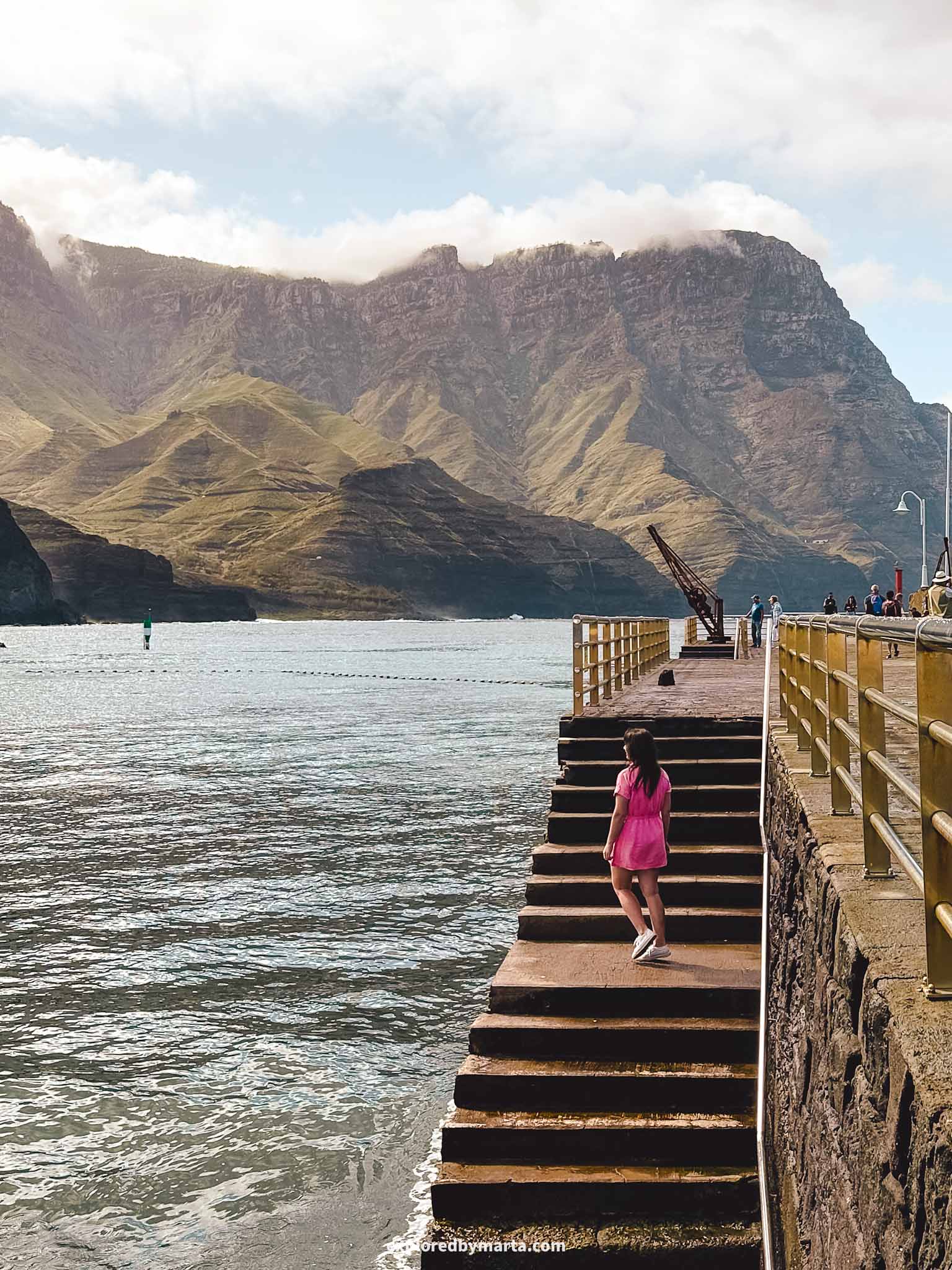
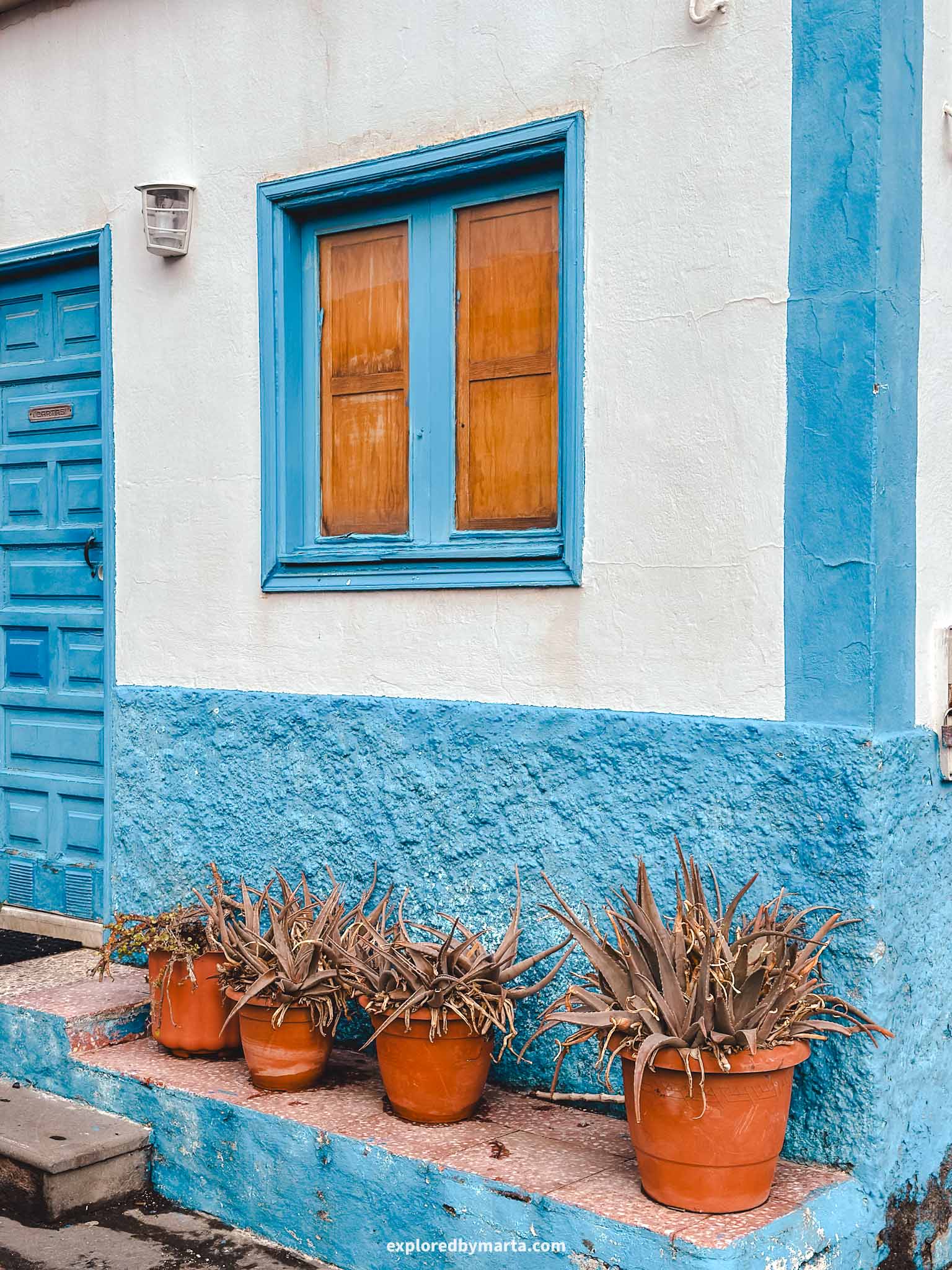
If you travel to Gáldar to visit the Painted Cave, there is a beautiful place nearby you might want to add to your road trip itinerary – Puerto de las Nieves.
Puerto de las Nieves, also called Puerto de Agaete, is a charming seaside village with whitewashed houses on the northwest coast of Gran Canaria, far away from the crowds.
Many people know this port as the docking point for Tenerife-Gran Canaria ferries, but I know it for its spectacular views. It’s one of my favorite places to visit in Gran Canaria!
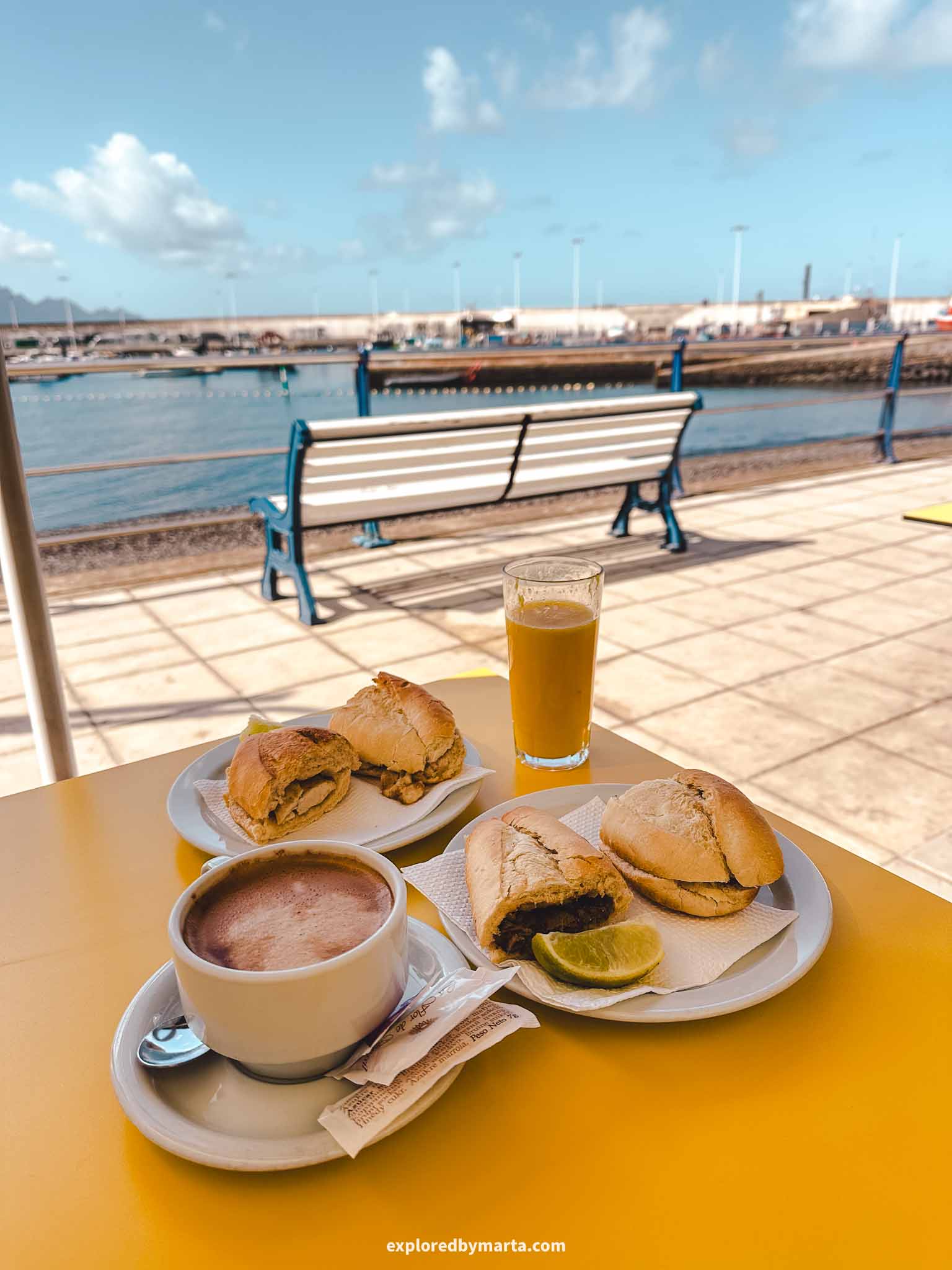
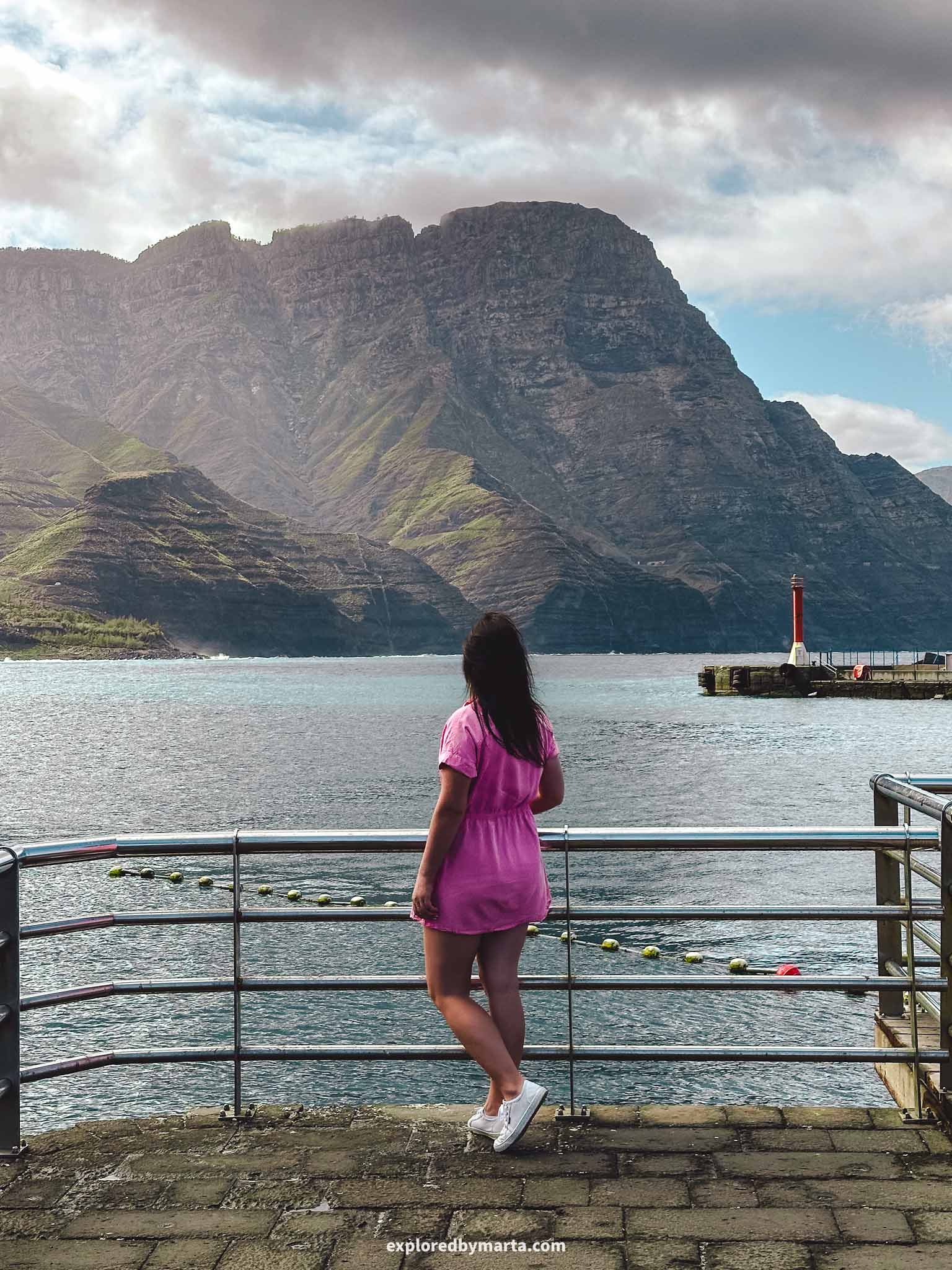
The seaside village overlooks the Agaete mountains in Tamadaba Natural Park and it truly is one of the best coastline views you will find on the island (apart from Mirador del Balcón!). The scenery is truly mesmerizing.
The black sand beach, the wild Atlantic Ocean, and the sharp and steep mountains create a spectacular view you can observe from anywhere along the beachside, especially from the beach itself or the fishing pier stretching into the water.
We loved enjoying the views from one of the waterfront restaurants you can find by the port where we had a quick late breakfast. Puerto de las Nieves is a place I would definitely love to return to one day!
Location: Puerto de las Nieves
15. Firgas, the Village of Water

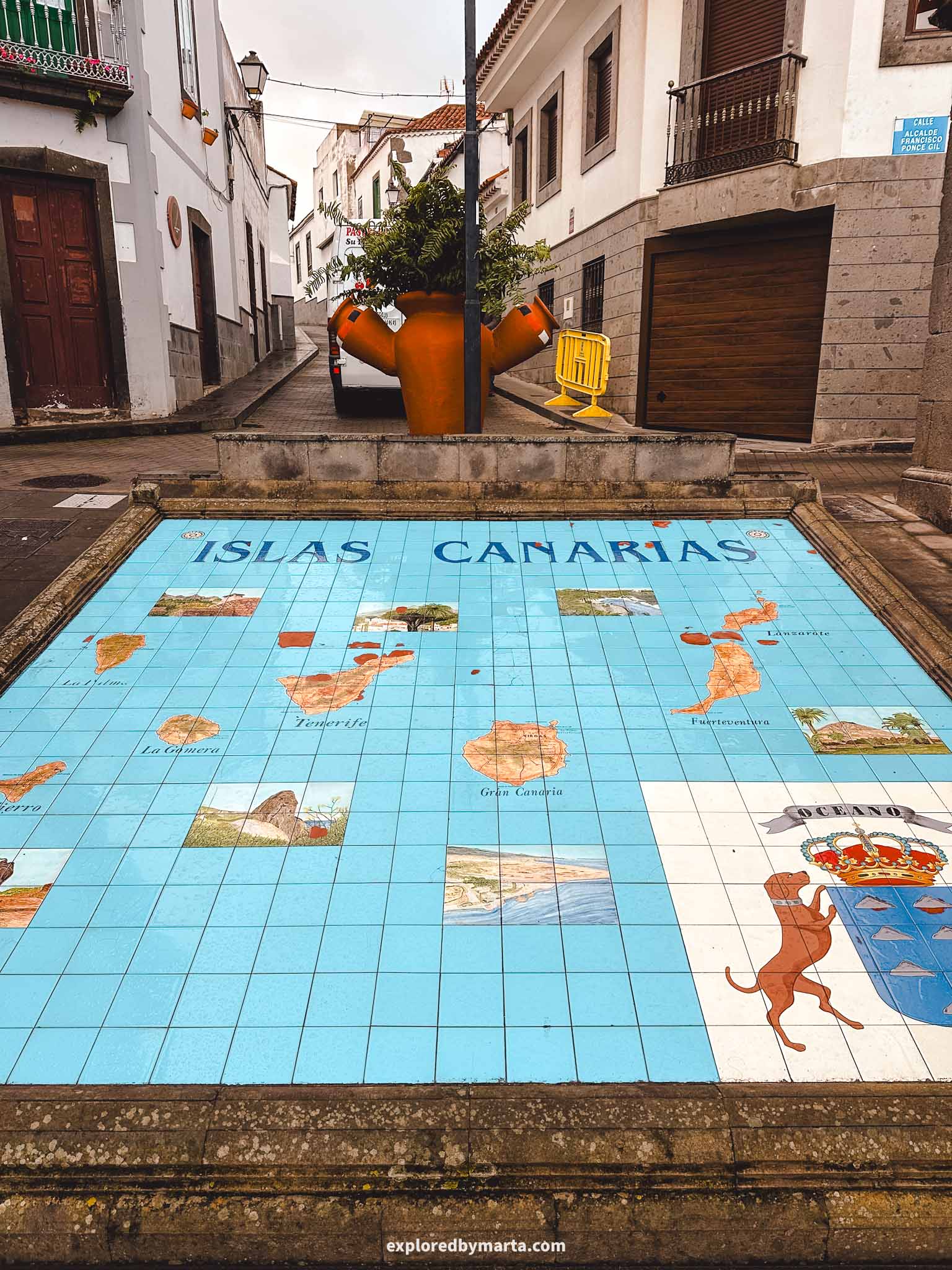
Another must-visit village in the northern part of Gran Canaria is Firgas.
Firgas is more widely known for its bottled mineral water with the same name as the village. That’s why Firgas is often referred to as the Village of Water.
But it isn’t water you should come to see!
Firgas is also home to one of the most beautiful places in Gran Canaria – Paseo de Canarias. It is a gorgeous pedestrian promenade in the heart of the village that is a must-see for every visitor to Gran Canaria.


The Paseo de Canarias promenade leads uphill and has two parts. The bottom part features a 30-meter-long waterfall and ceramic benches along the side of the street.
Each of the benches displays symbols and names of one of Gran Canaria’s municipalities.
The upper part of the Paseo de Canarias features large ceramic maps with 3D models of the seven Canary Islands – Tenerife, Gran Canaria, Fuerteventura, Lanzarote, La Palma, La Gomera, and El Hierro. It is a must-visit place in Gran Canaria!
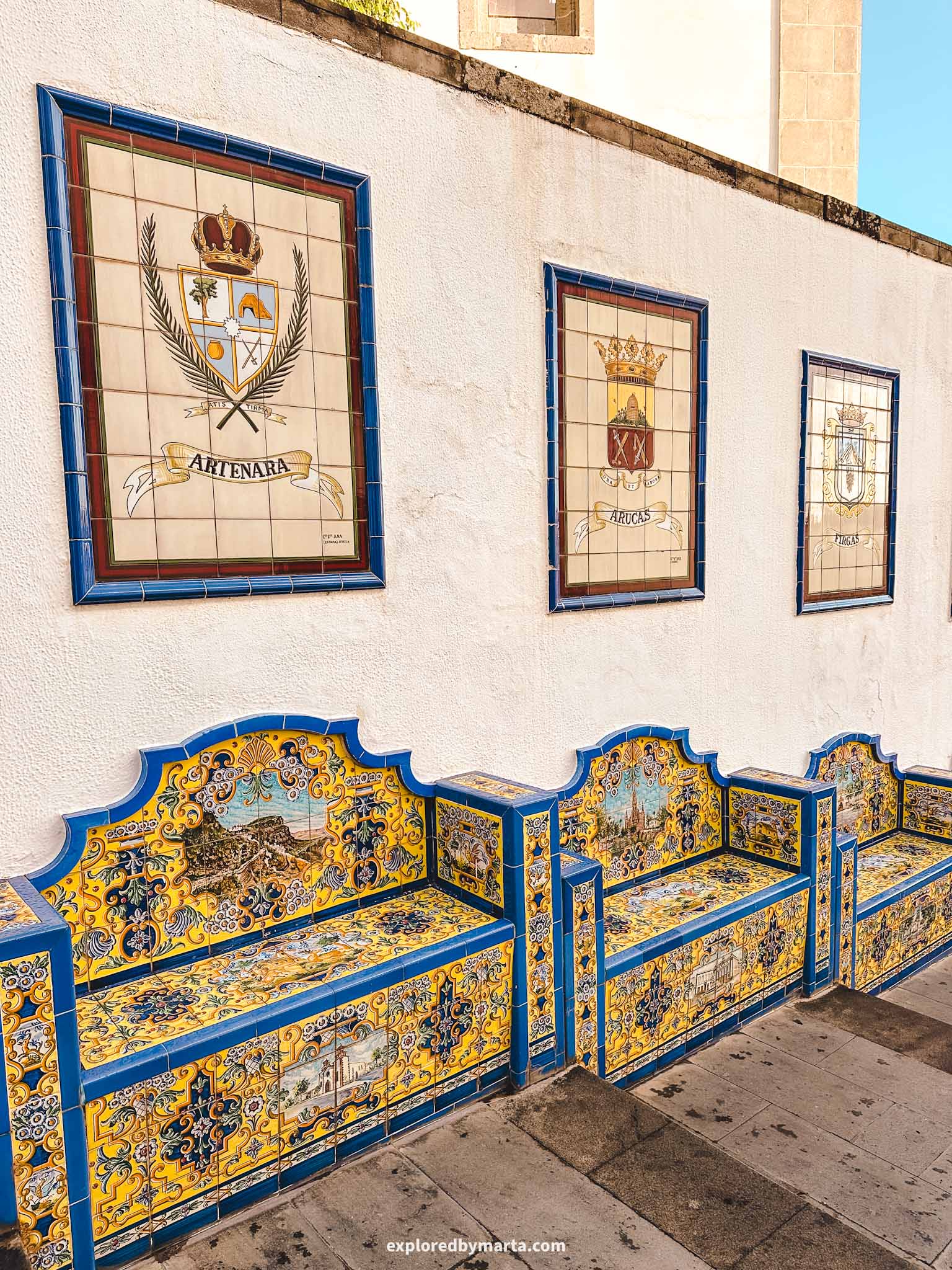

I’ve visited all of the Canary Islands, so I was really excited to check out the maps and relive the places we explored on each island. The maps are pretty detailed—you can actually spot some of the most iconic landmarks on each of them.
With its colorful tiles and waterfall, Paseo de Canarias is one of the top places to visit in Gran Canaria.
If you are doing a road trip around the island (which you should) I highly recommend stopping by this charming village. It will only take about 1 hour to check it out and take some photos, and you can be on your way to other places.
Location: Paseo de Canarias
16. Cenobio de Valerón
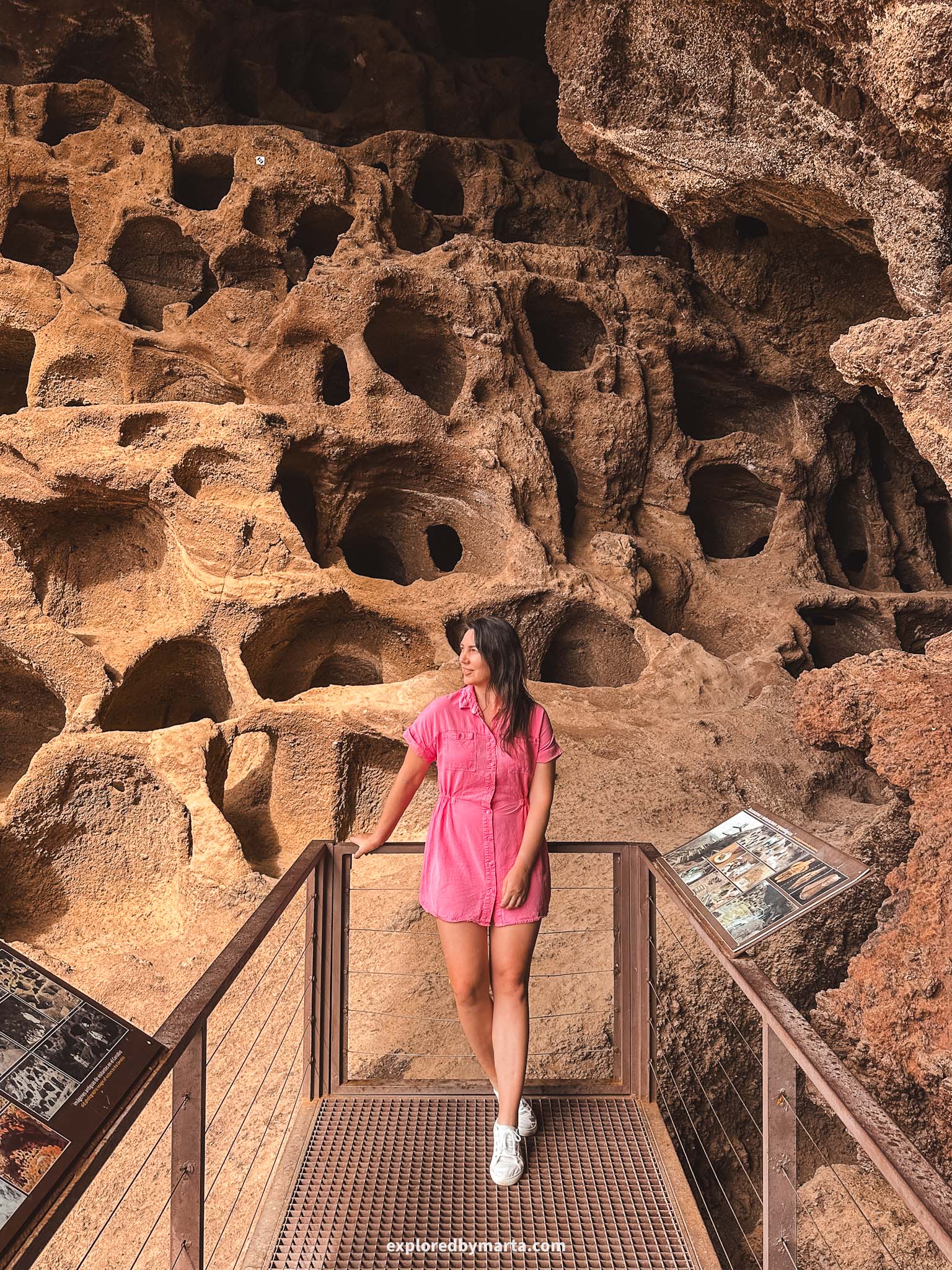
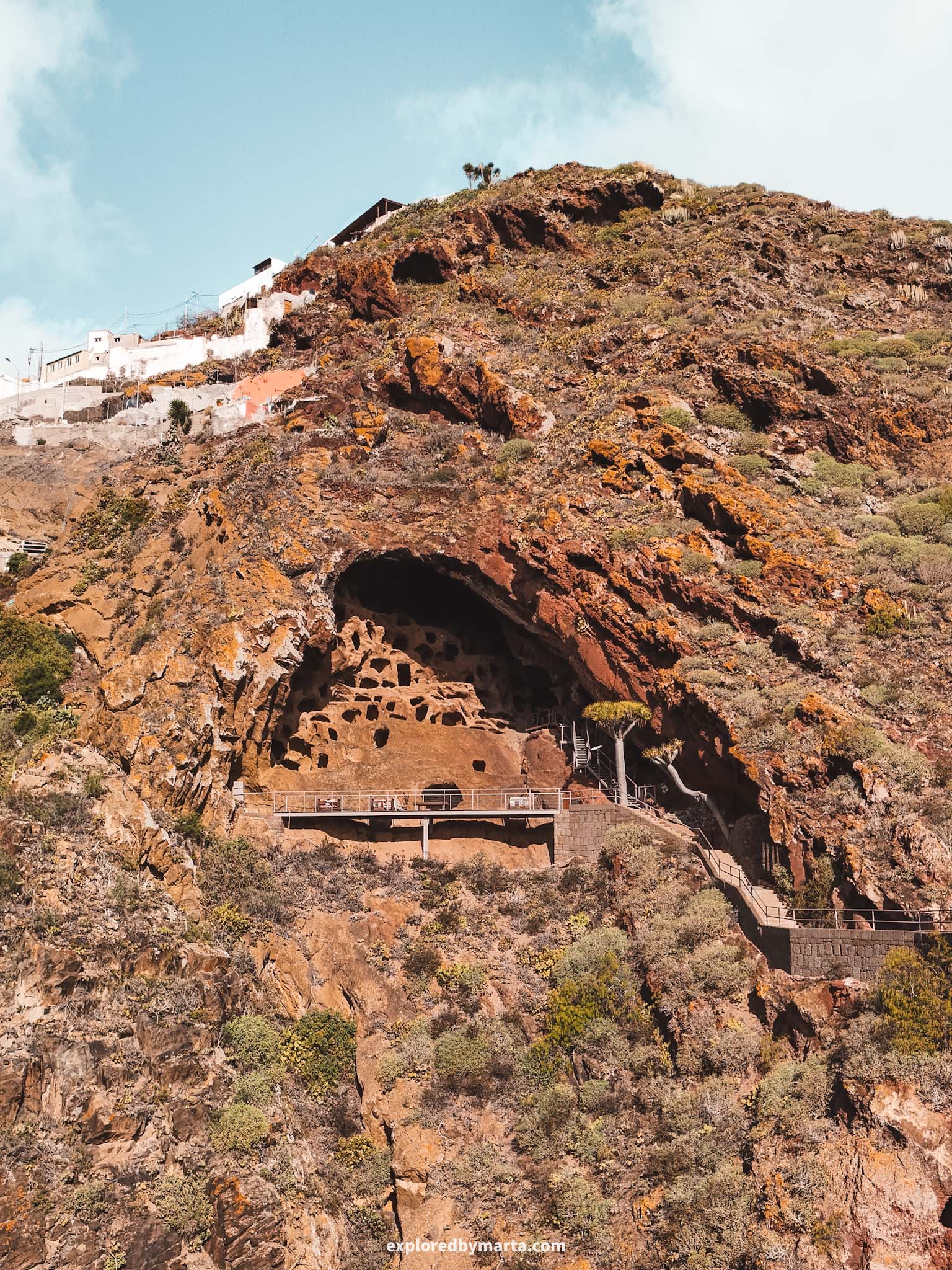
Caves of Valeron or Cenobio de Valerón is a complex of caves carved into the rock in the Northern part of Gran Canaria just a short drive from Firgas.
It was used as a communal storage place for goods and tools for the indigenous Canarian people.
I think these were the most picturesque and beautiful caves in Gran Canaria – not only the caves themselves but also the views over the valley! Such a scenic place!
The Valerón caves date back around 800 years and include more than 350 chambers in this cave complex. This is a popular place to visit among tourists who want to explore how the Guanches lived during the pre-Hispanic era.
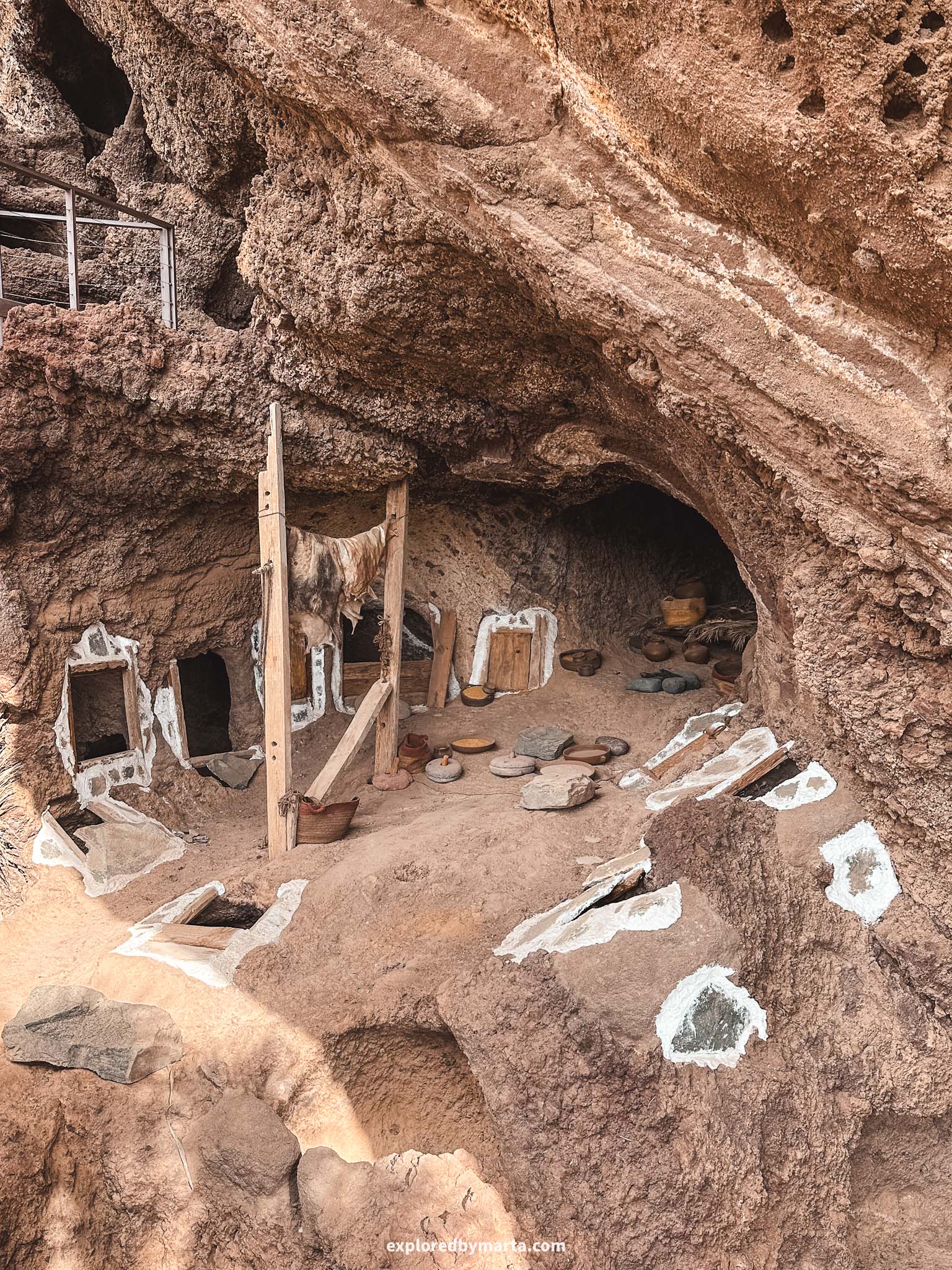
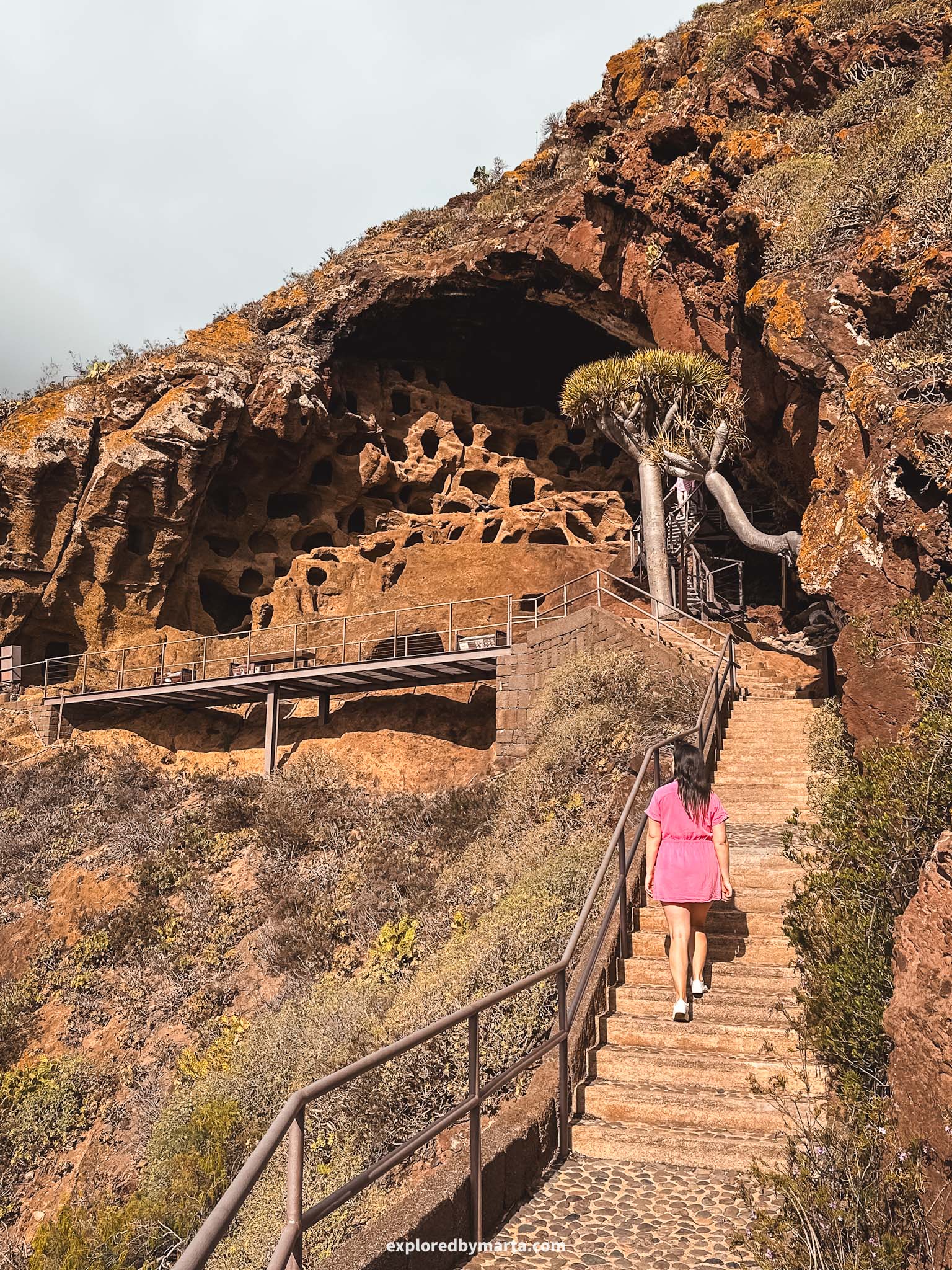
Cenobio de Valerón is perched on a cliffside next to a quiet road, offering impressive views of the valley below.
We only spent one hour here exploring the caves, as there isn’t much else to see but I highly recommend including this place in your Gran Canaria itinerary.
To reach the caves, drive to the parking lot next to the road (location below), cross the road, and climb a short staircase to the entrance.
From a viewing platform, you can see the cave chambers up close and learn more about them from the information board.
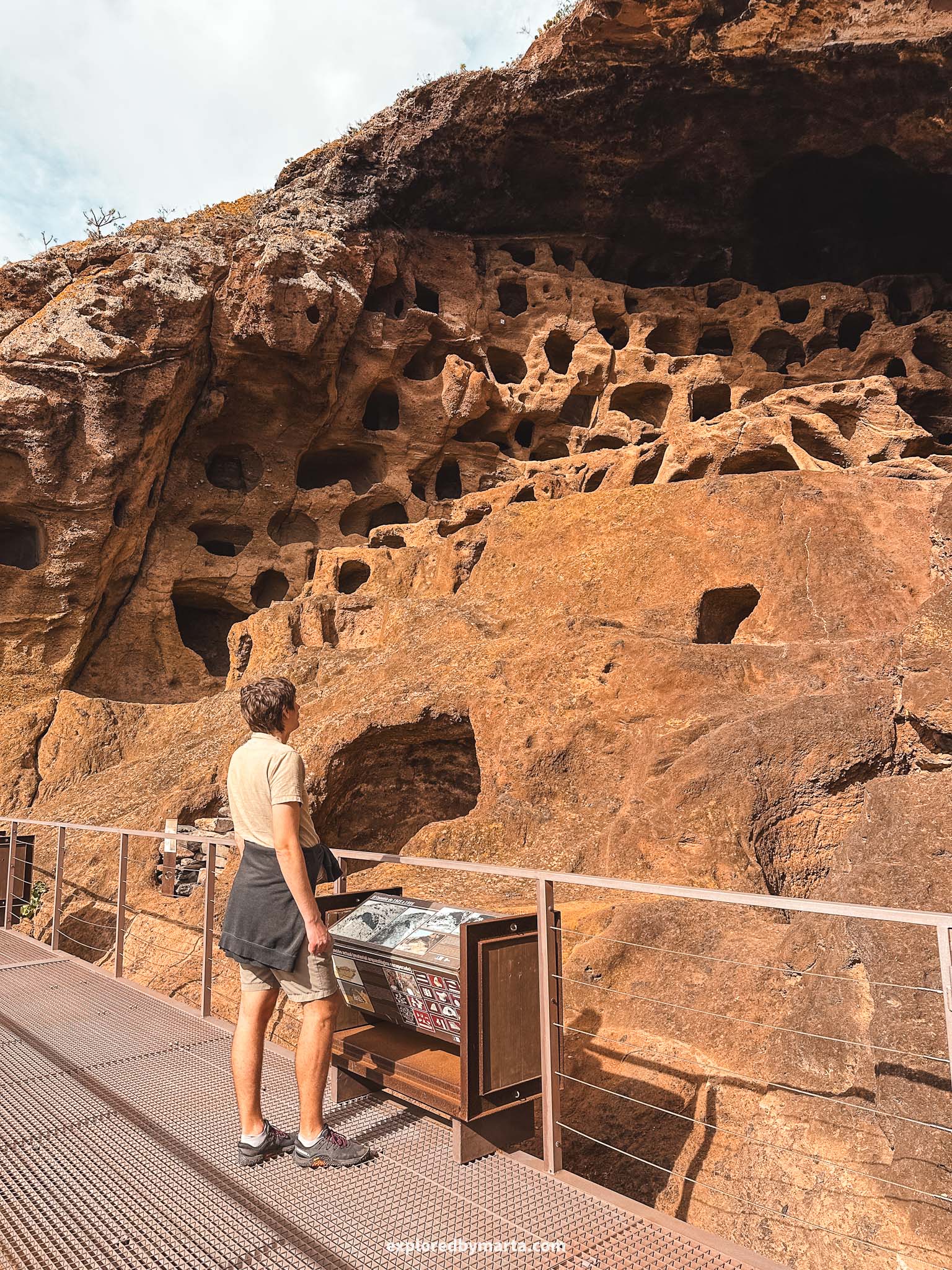
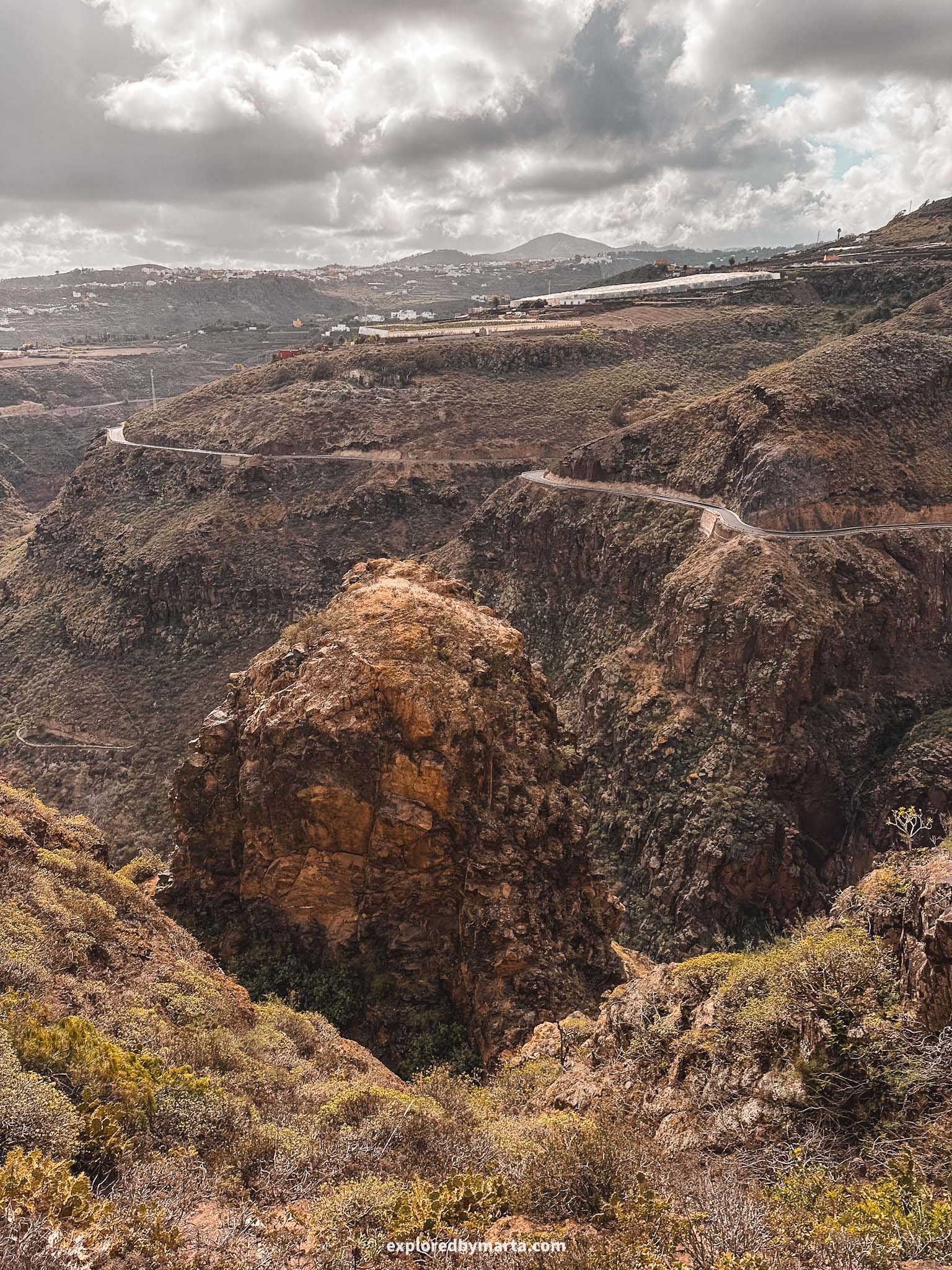
There is also a small aboriginal house along the staircase where you can enter and get a glimpse of how Guanches lived centuries ago. Nothing extraordinary but definitely quite interesting.
Overall, it’s a small but picturesque and beautiful place to visit in Gran Canaria. It’s fascinating to see so many storage caves together – I guess Guanches had a small commune living together around this area so they needed many storage units.
There is also a small entrance fee to the caves which we were able to pay with a card.
Location: Caves of Valeron
17. Arucas
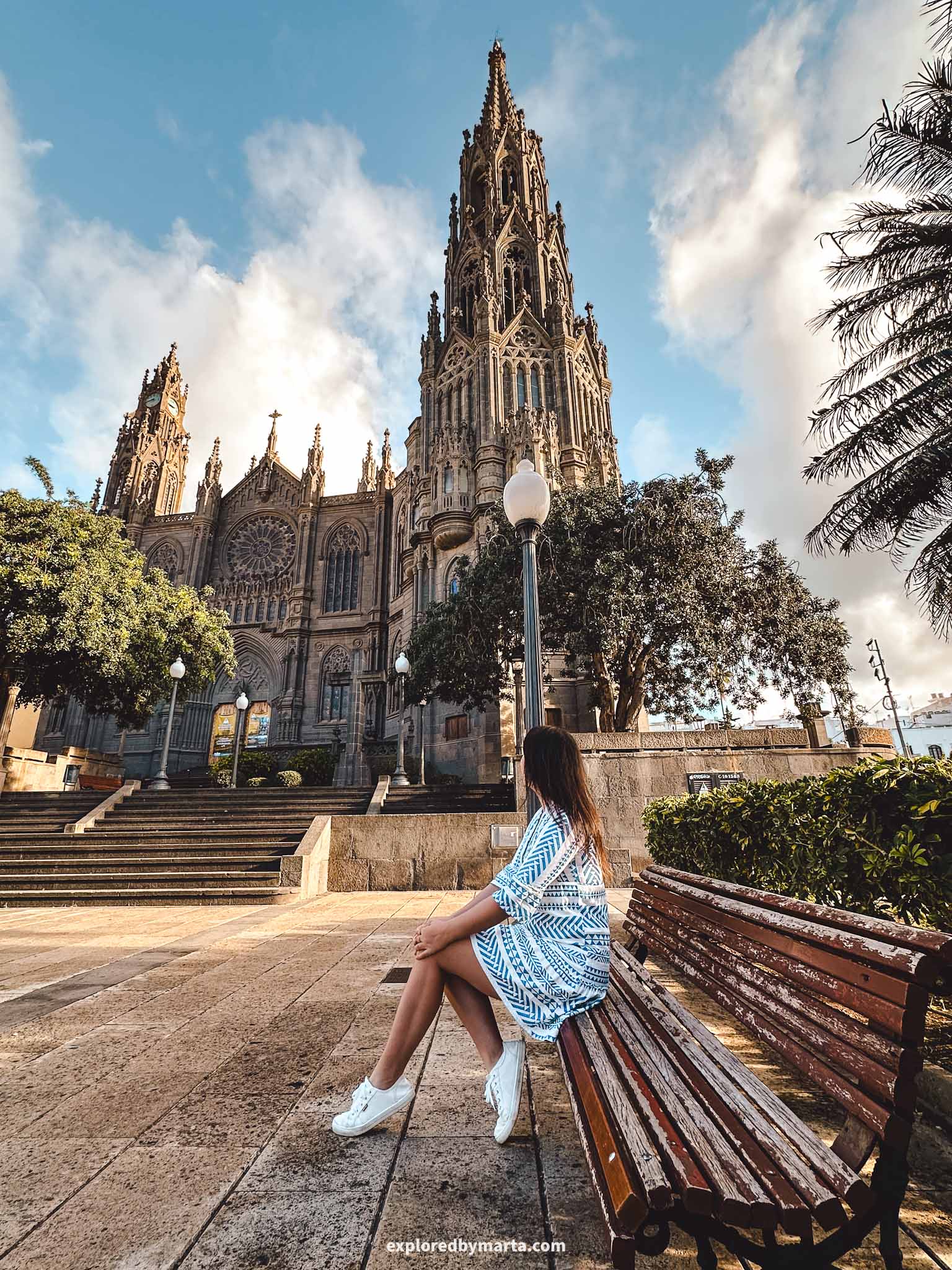
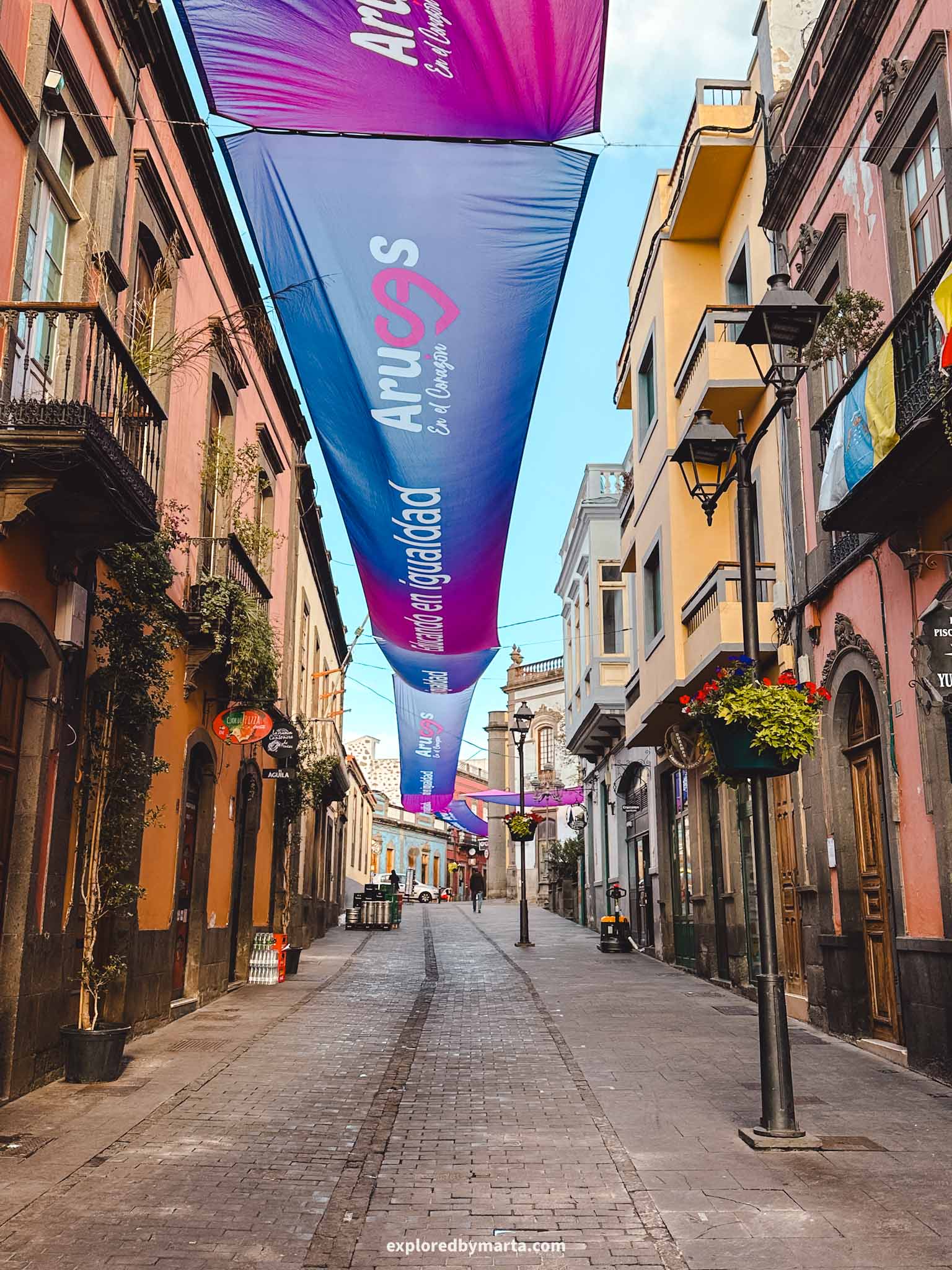
Arucas is an iconic town in northern Gran Canaria known for its well-preserved colorful colonial-style streets and traditional architecture as well as its banana plantations and long-standing rum production industry.
However, there is one thing that stands out the most in this charming town – the gorgeous Church of San Juan Bautista in Arucas! It is one of the most emblematic buildings you will find in Gran Canaria.


Although it is a church, due to its majestic size and eccentric exterior, it is commonly referred to as the Cathedral of Arucas. I think this name describes the building much better, right?
The stunning Neo-Gothic church was built between 1909 and 1977 using local stones of volcanic origin. At first, I thought the church looked a bit ‘dirty’ but it’s the volcanic rocks that give it this tone.
The Neo-Gothic style is one of my favorites and I could stare at this building for hours, if I could, haha! I just love the details and the boldness of this architecture!

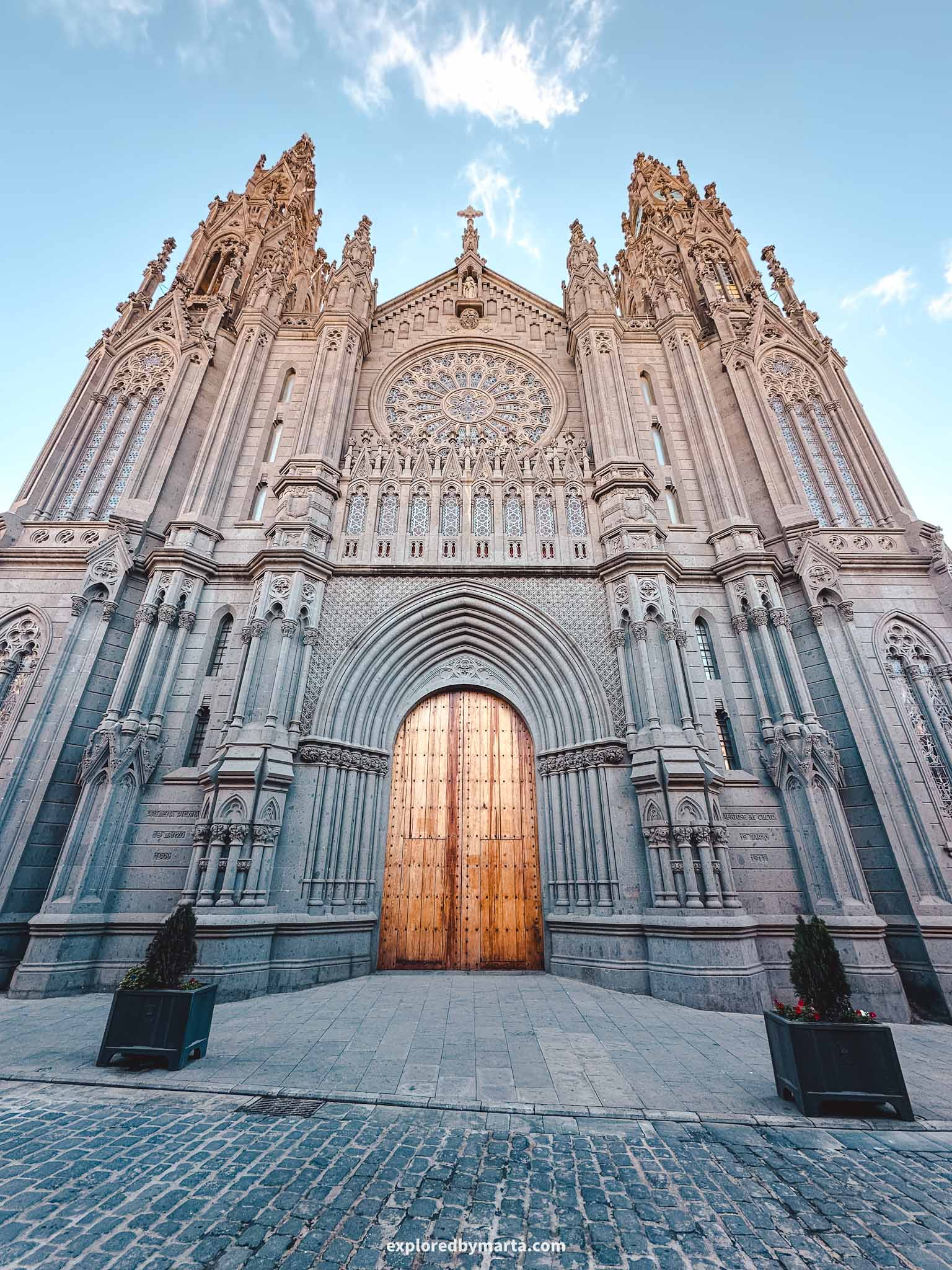
I highly recommend visiting Arucas, one of the most beautiful towns on the island, even if only for an hour, to see the majestic cathedral!
It’s truly unlike anything else in Gran Canaria. We arrived in the morning and spent about an hour walking around the historic center and taking photos of the church.
There’s a large parking lot right next to the church where you can leave your car and easily explore everything on foot. One of the best places to visit in Gran Canaria, that’s for sure!
Location: Parroquia de San Juan Bautista de Arucas
18. Mirador de Cruz de Tejeda

Let’s talk more about some of the most amazing views in Gran Canaria…
Located in the center of the island, Mirador de Cruz de Tejeda is one of the most famous viewpoints in Gran Canaria. From what I saw, every other visitor to the island managed to stop by this famous lookout point.
However, the viewpoint is just one part of the experience. The Cruz de Tejeda area also features restaurants, hotels, a large public parking lot, and local vendors selling souvenirs and products made and grown in the Canary Islands.
Cruz de Tejeda is also a popular starting point for scenic hiking trails around the mountains. We did the Cruz de Tejeda–Artenara hike, which is one of the most beautiful hikes in Gran Canaria. This place is a must-visit!
Location: Mirador de Cruz de Tejeda
19. Pico de las Nieves, the island’s highest mountain

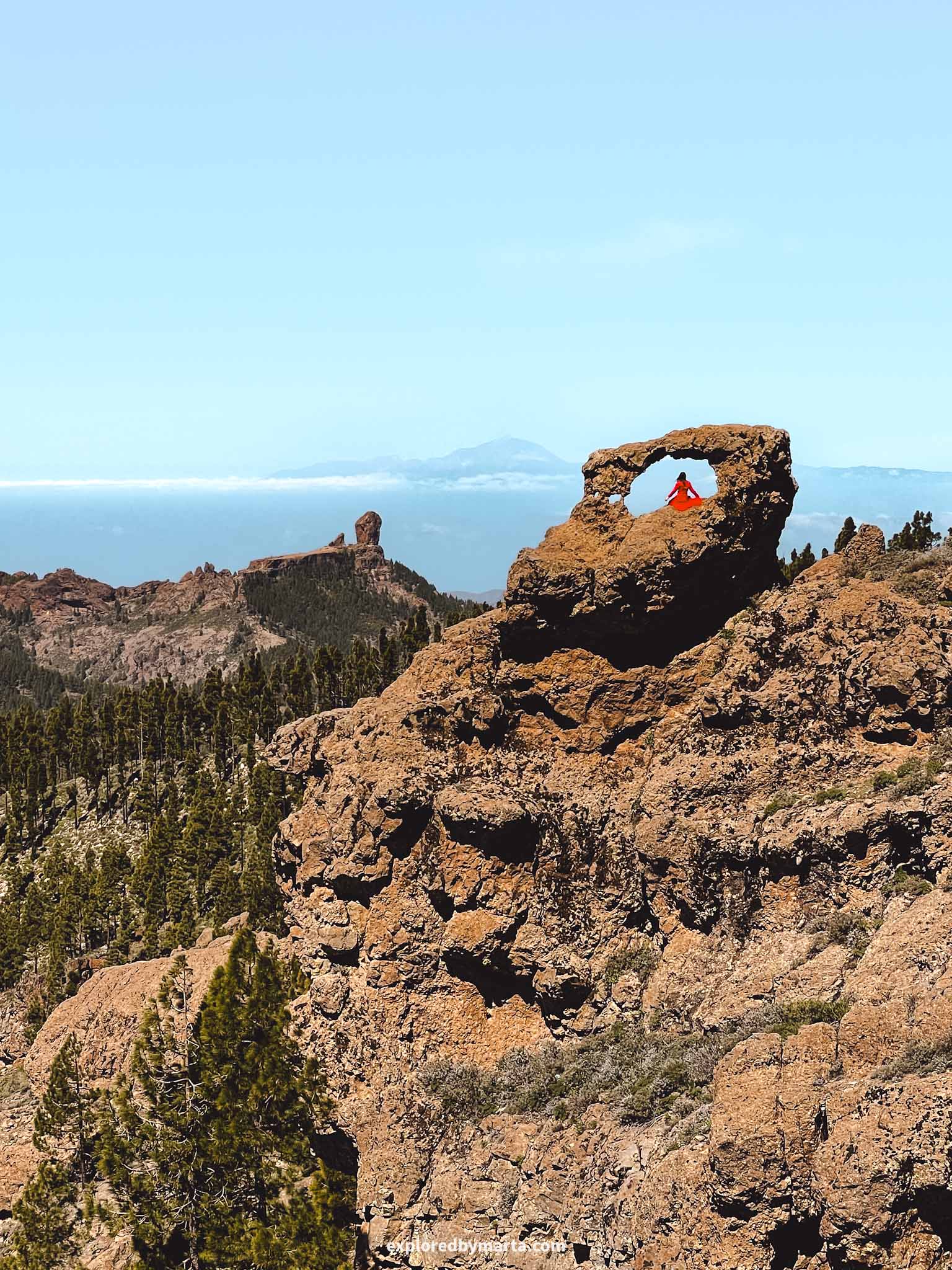
Standing at 1,949 meters, Pico de las Nieves is the highest mountain in Gran Canaria and a must-visit spot on the island, especially since you can easily reach it by car.
At the top of the mountain next to the military base, there is a parking lot where you can stop by and see the whole of Gran Canaria below your feet.
Okay, actually, not the whole island.
At the summit of Pico de las Nieves, there’s a unique rock formation called Morro de la Agujereada, which actually holds the title for the highest point on the island, standing 7 meters taller than Pico de las Nieves.
But it’s just a rock and you can’t climb it so it doesn’t matter much!
On sunny days Pico de las Nieves offers views of the entire island of Gran Canaria, as well as the Teide volcano on nearby Tenerife. It is one of the most breathtaking views especially at sunset when the island is painted in golden hues. Magical!
Location: Pico de las Nieves
20. Mirador Degollada de Becerra

Talking about epic views, I must mention Mirador Degollada de Becerra viewpoint!
As you drive around the mountains of Gran Canaria, there are many stops along the way to enjoy fantastic views of the island. But which exactly are the best places to stop and enjoy?
One of my favorite viewpoints in the mountains is Mirador Degollada de Becerra.
This viewpoint offers panoramic views of the Caldera de Tejeda crater and Gran Canaria’s rugged mountains, including the island’s two most prominent rock formations—Roque Nublo and Roque Bentayga.
On a clear day, you can even spot Teide volcano in Tenerife!
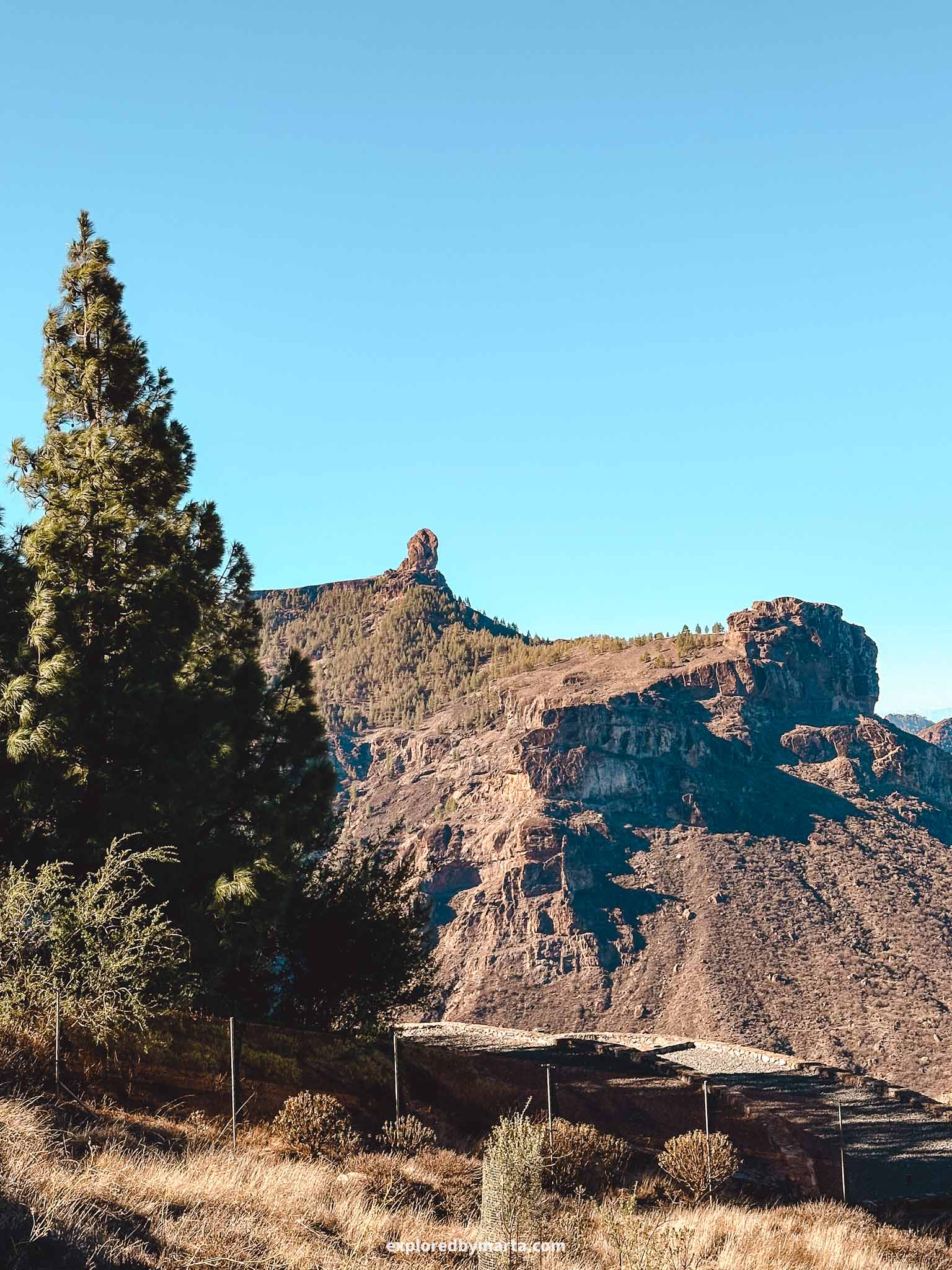

If you’ve come to Gran Canaria for the mountains and the views, this is the perfect place to soak it all in. If I hadn’t been freezing in that dress, I probably would have stayed for an hour just gazing at all the beauty!
This is also a fantastic spot to watch the sunset over the mountains, but I personally loved it during the day when you can see Teide and the stunning landscapes of Gran Canaria.
If you’re up for a walk, there are also many hiking trails that pass through this viewpoint.
Location: Mirador Degollada de Becerra
21. Cave restaurants in Guayadeque Ravine
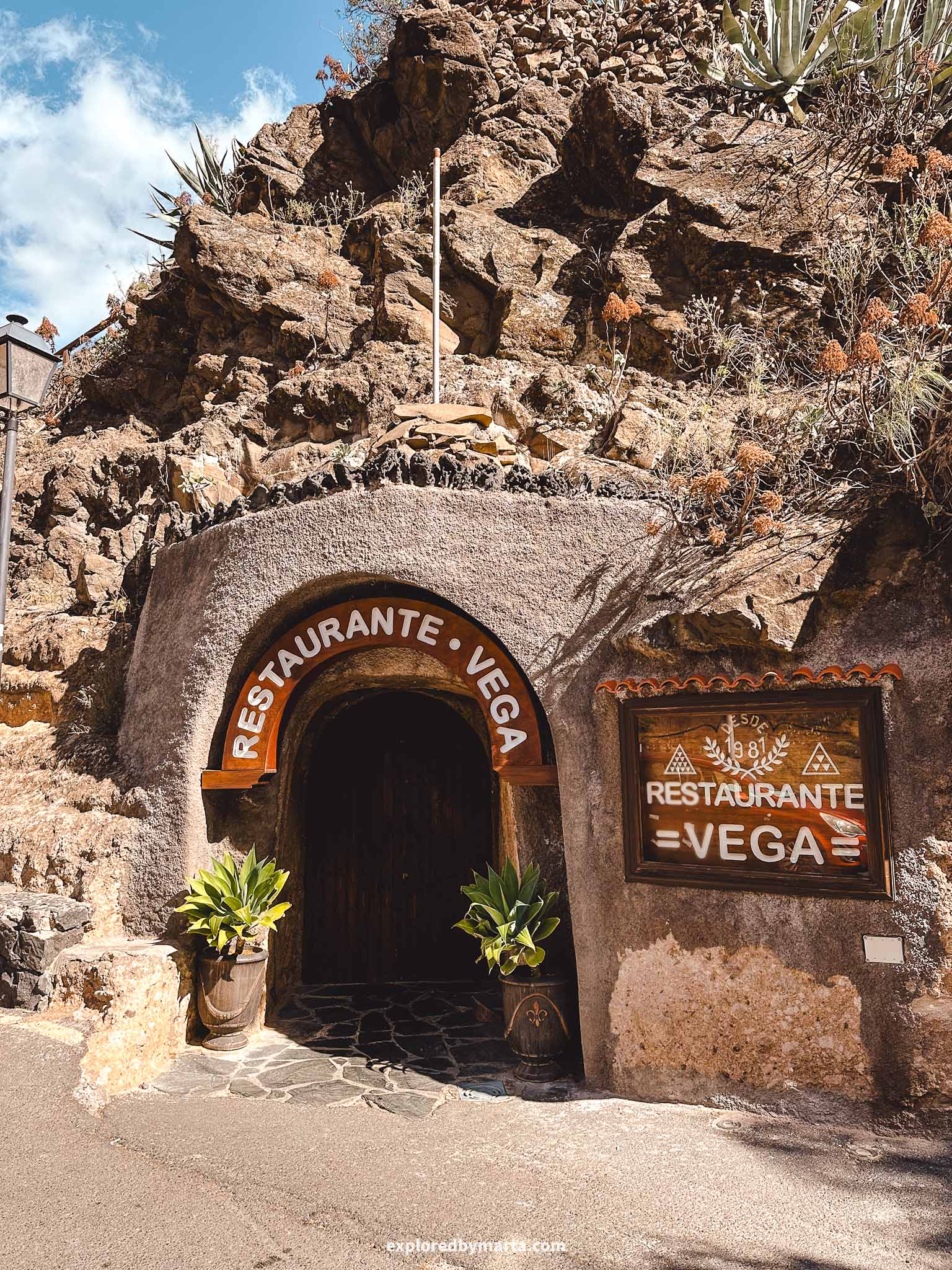
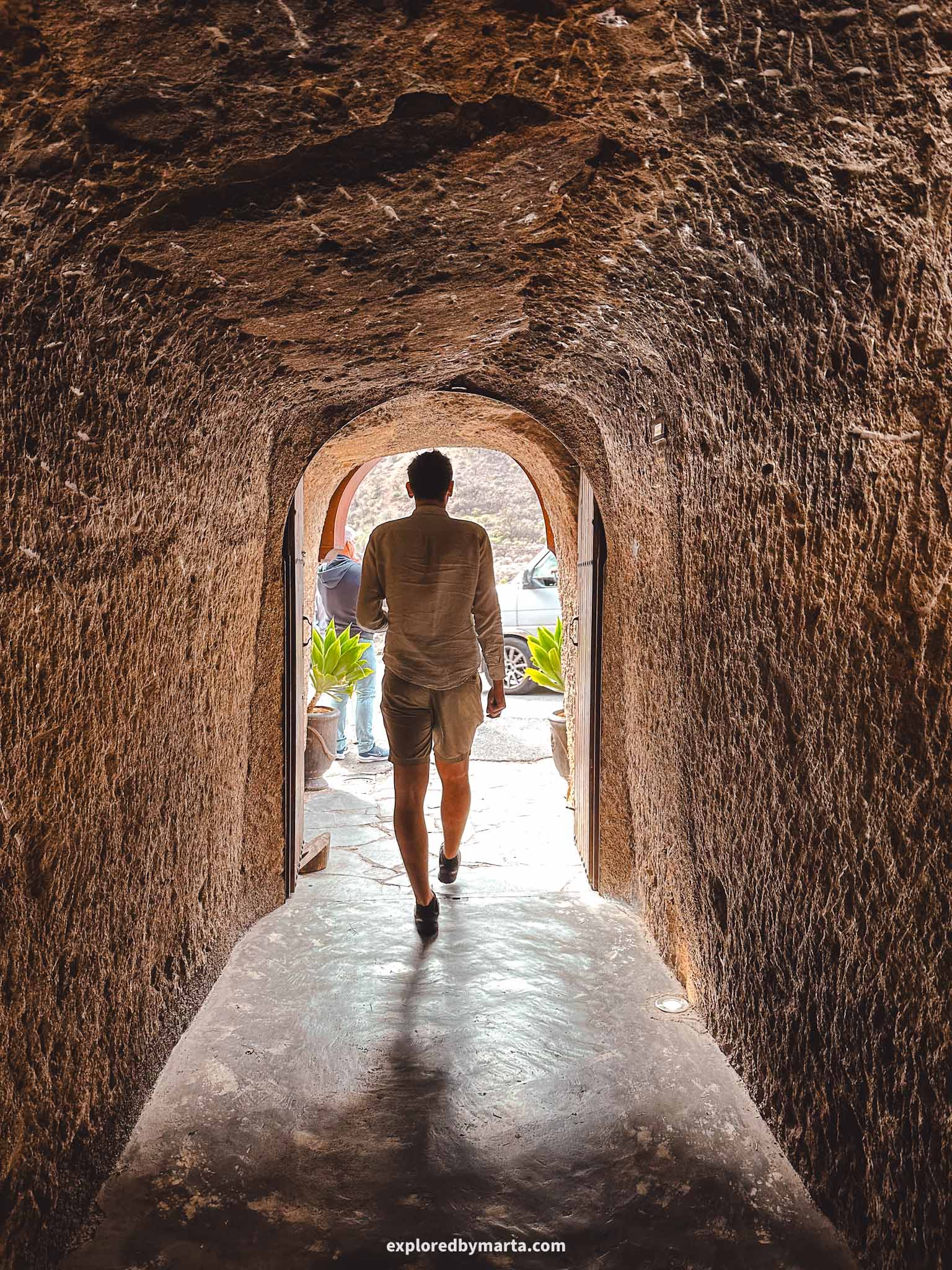
From the mountaintops to the underground!
Guayadeque Ravine is one of the largest and most beautiful valleys in Gran Canaria. The valley was inhabited by the Guanches, Gran Canaria’s indigenous people, for many centuries long before the Spanish conquistadors arrived.
The cave houses have remained there until today.
There’s an archaeological museum in the valley where you can learn about the lives of its past inhabitants. Or you can simply drive inside the valley and explore the caves yourself.
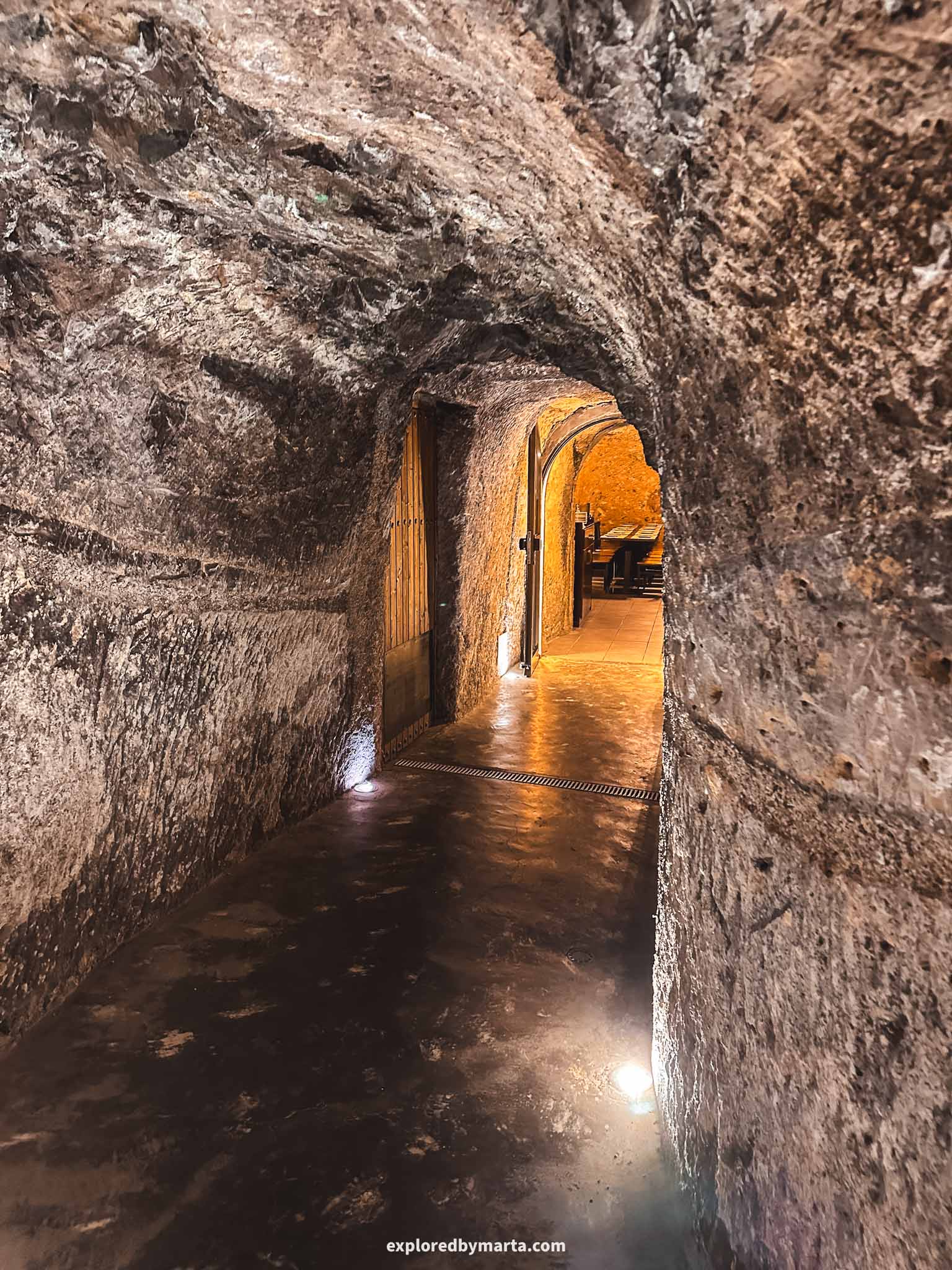

Some of the cave houses have been transformed into modern homes with electricity and running water (you can’t visit them), but others now serve as rental properties, shops, churches, and even restaurants.
We visited Guayadeque Ravine only because we wanted to try one of the cave restaurants. And, trust me, dining in a cave restaurant is one of the bucket list things to do in Gran Canaria!
Not only did we thoroughly enjoy the restaurant, but also the views of the gorgeous valley! Also, not many travel guides mention anything about cave restaurants, so this was one of my favorite hidden gems in Gran Canaria!

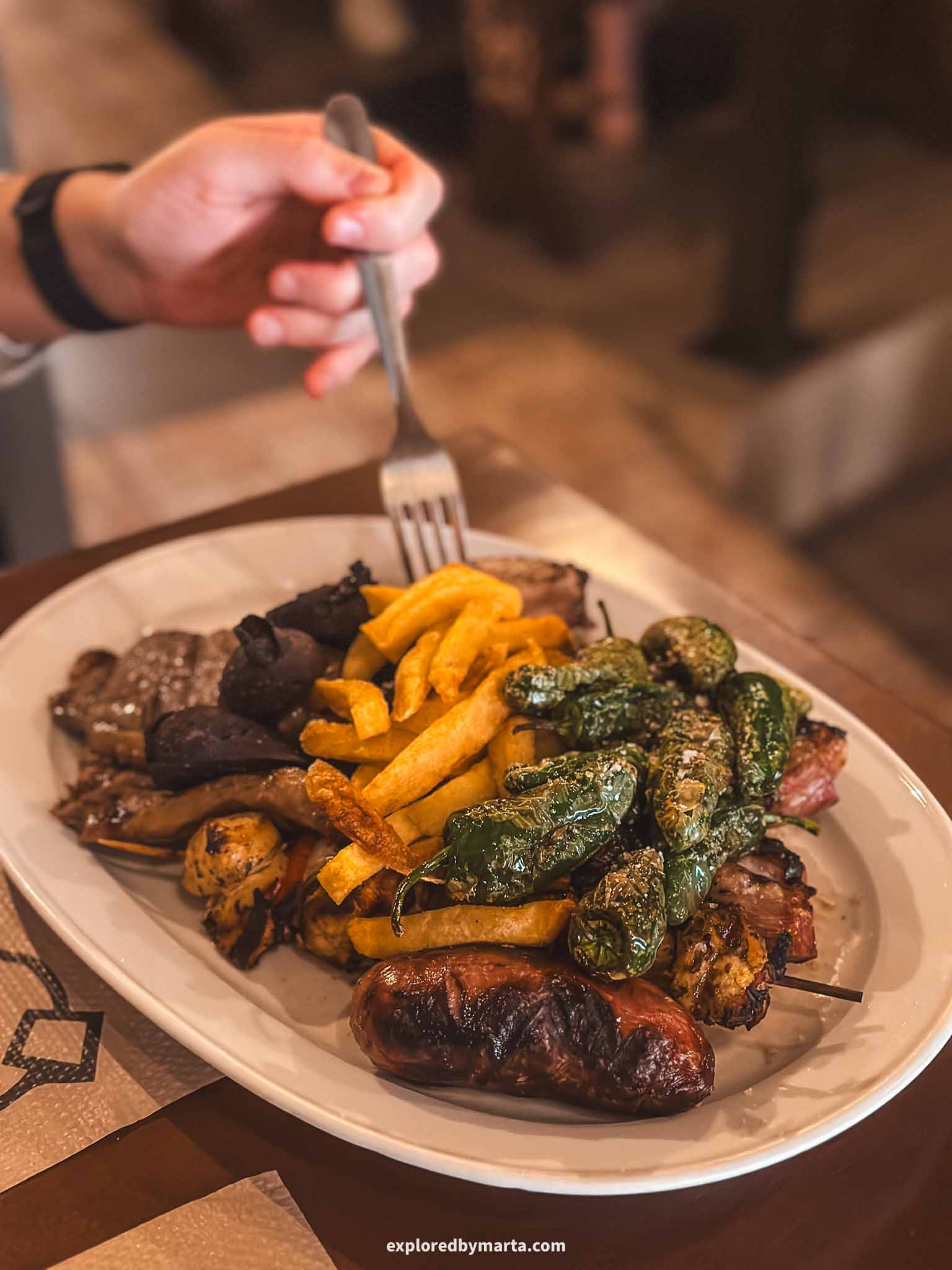
There are a couple of bars and cave restaurants in the valley, but the most famous ones are Restaurante Tagoror and Restaurante Vega. I recommend choosing one of these two cave restaurants as they have the highest ratings.
We chose Restaurante Vega, and it was such a delight!
They serve local cuisine and specialize in grilled meats, so you can enjoy everything from Canarian dishes to Spanish tapas and hearty grilled meat platters. Portions were big so we had to pack up the leftovers to take home. I’d really love to return here one day!
Location: Restaurante Vega
22. Agüimes, the village of bronze statues


If you ever visit the cave restaurants in Guayadeque Ravine, make sure to stop by Agüimes!
Agüimes has one of the most beautiful old towns on the island, famous for its many bronze sculptures scattered throughout the streets. You should definitely stop by to check out the statues!
The bronze camel statue hidden on Callejón de la Vegueta Street is the most famous of them all—everyone wants a photo here, haha!
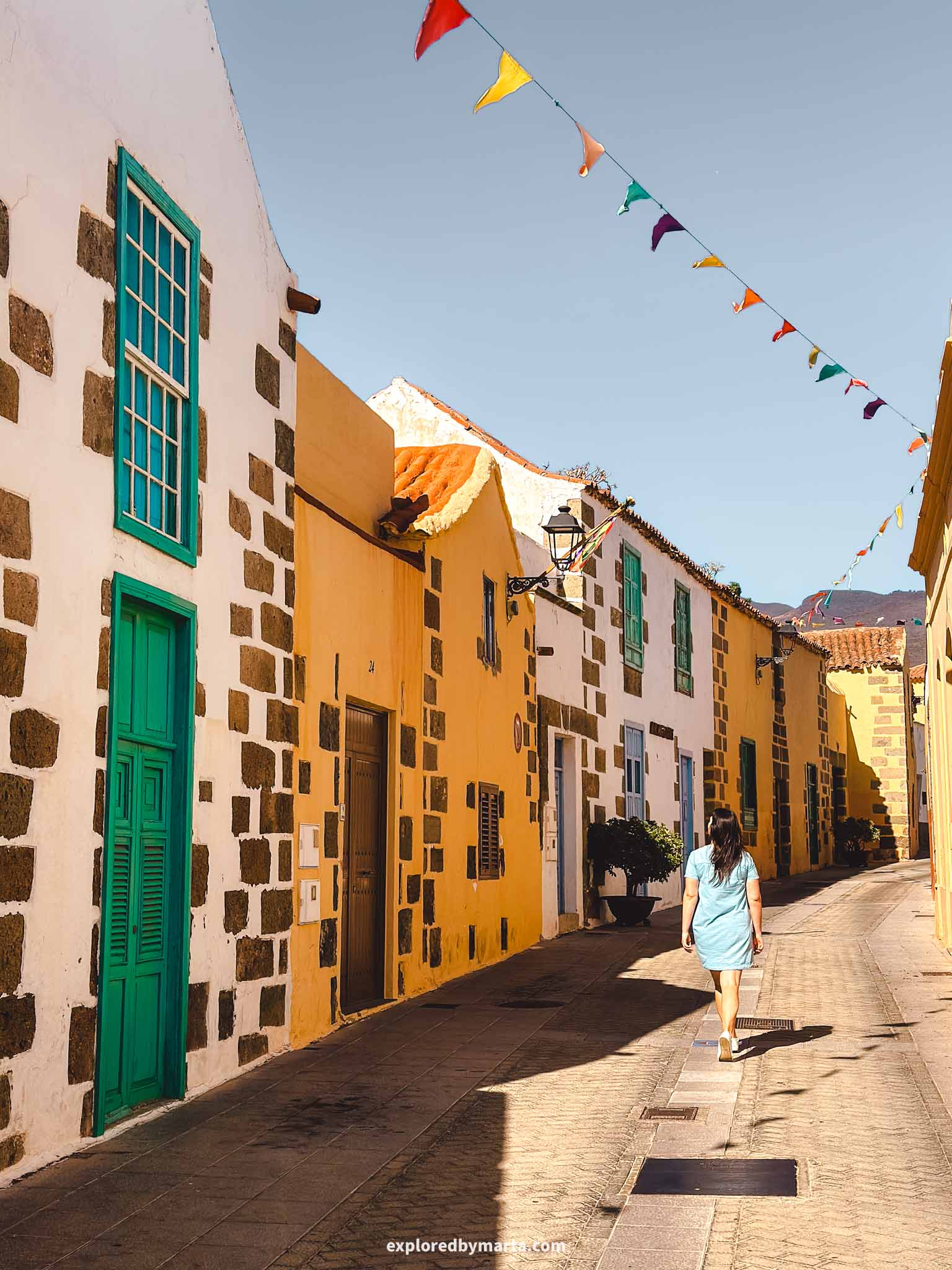

We stopped by Agüimes Old Town for a short stroll through the streets to admire its colorful colonial architecture and check out the beautiful Parroquia de San Sebastián church, which sits right next to the town’s main square, Plaza del Rosario.
The main square hosts a number of bronze statues, including a donkey, two sculptures paying tribute to the Ancient Carnival, and sculptures of four men meeting on a bench inside the park.


Another one of my favorites was the Homage to Lovers’ Bench on Callejón del Reloj, featuring two lovers sitting together on a bench.
If you’re looking for some Instagram spots in Gran Canaria, these bronze statues in Agüimes are perfect for that!
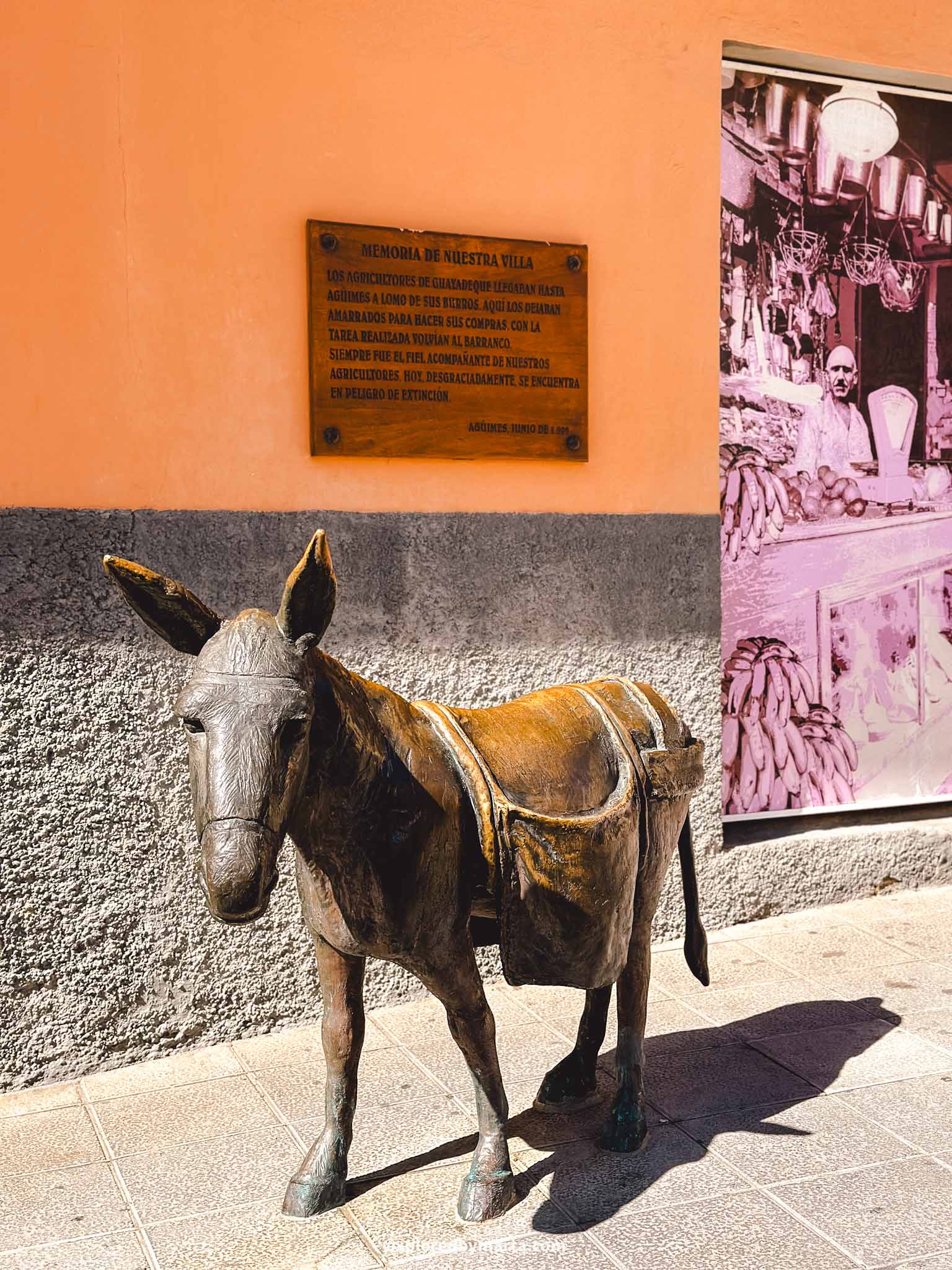
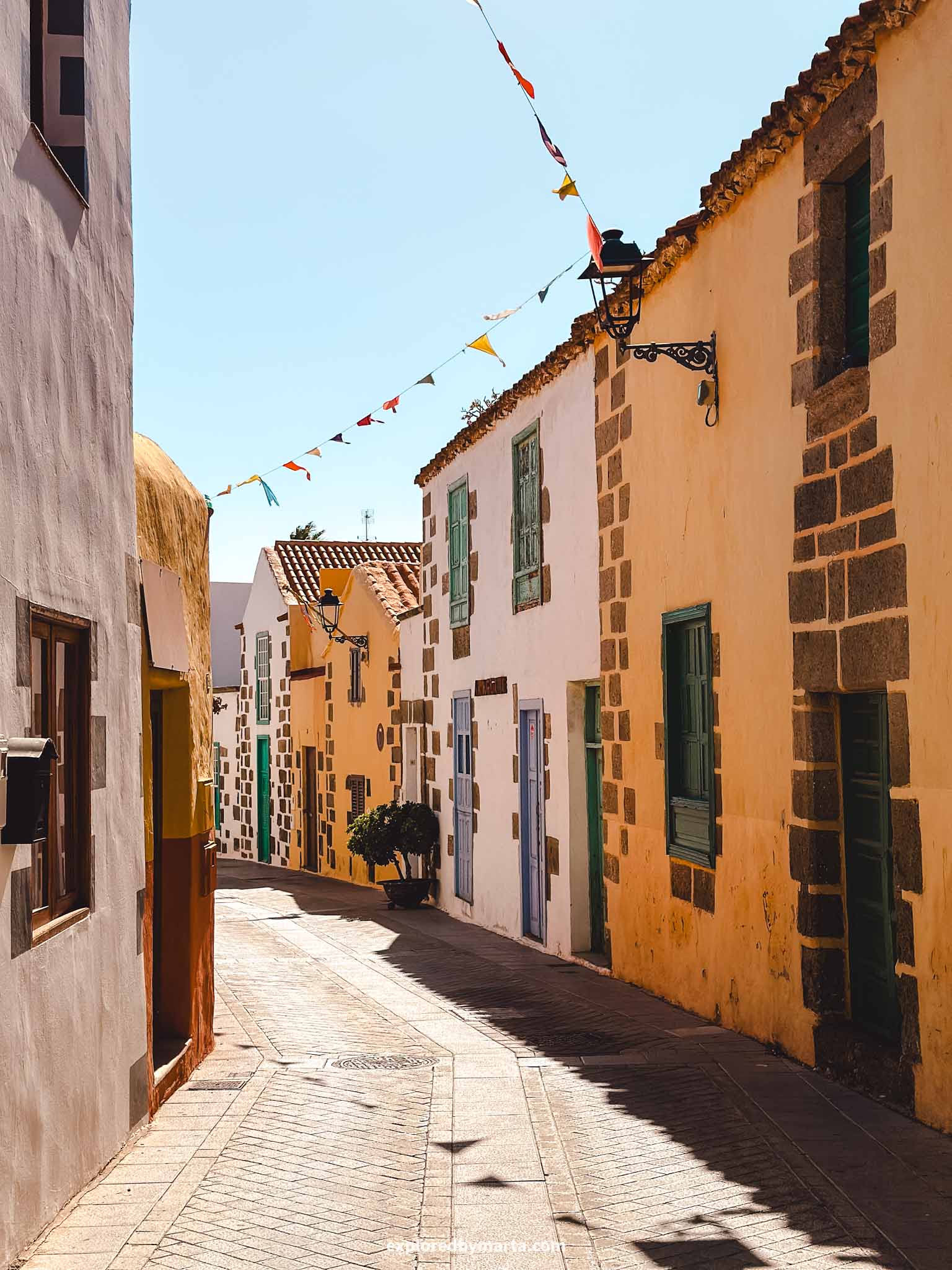
If you’re doing a road trip around Gran Canaria, I highly recommend stopping by Agüimes for a short stroll through the old town, saying hi to the camel and the donkey, and relaxing at a café next to the central square.
As I mentioned, Agüimes is located next to Barranco de Guayadeque, where you can find the famous cave restaurants. So make sure to combine a visit to both of these places – Agüimes during the day and one of the cave restaurants for lunch in the afternoon.
Location: Agüimes – Sculpture of Camel
23. Teror
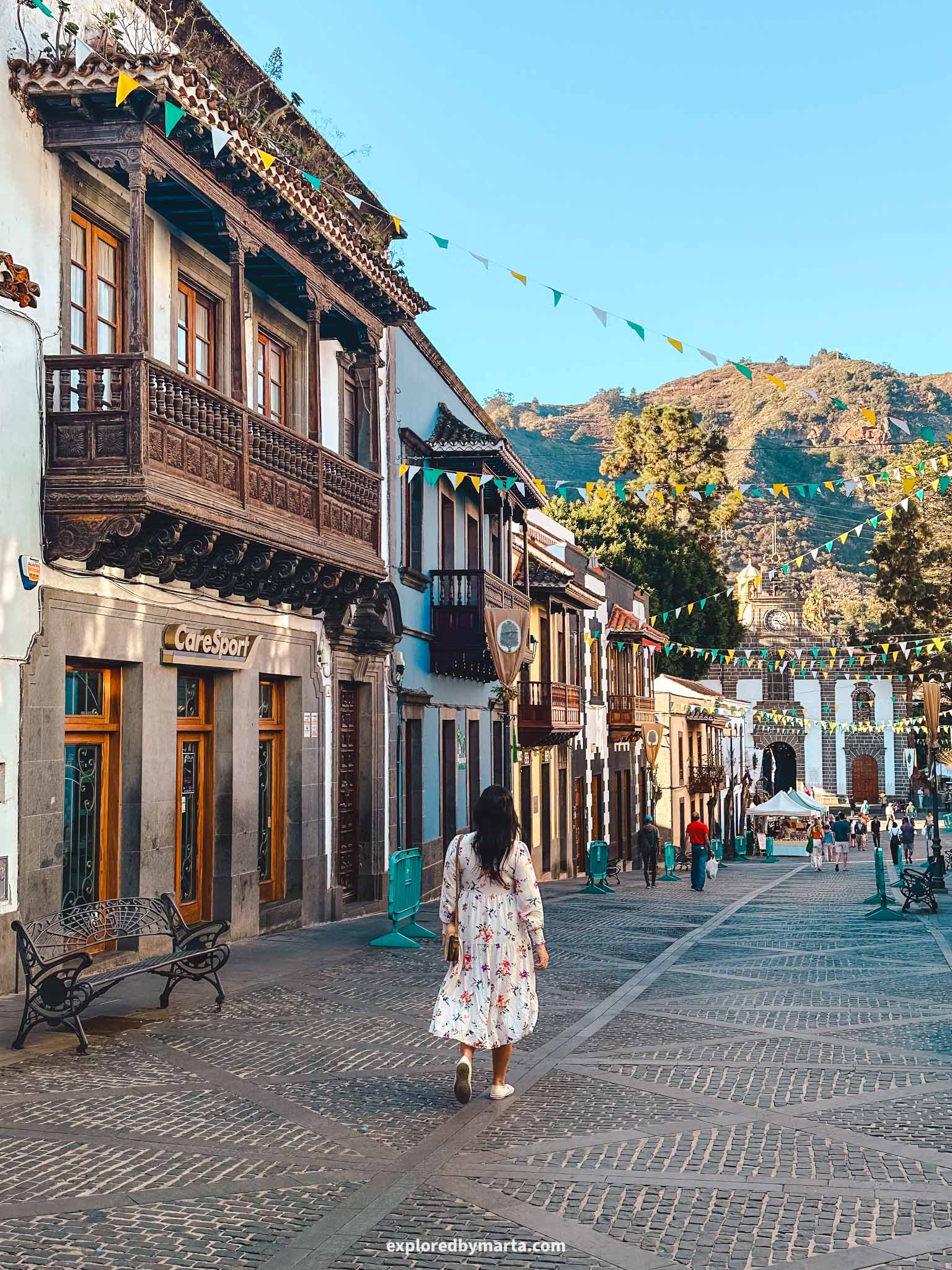

There is another unique village that you absolutely should visit in Gran Canaria – Teror!
Located in the north of Gran Canaria, Teror village is a tranquil oasis in the mountains sitting at 543 meters above sea level. It is one of the most beautiful villages in Gran Canaria!
There’s so much to love about Teror, and I highly recommend visiting this place. It is one of my favorite places we visited in Gran Canaria!
Teror is home to a small but beautiful basilica, the Basilica de Nuestra Señora del Pino, dedicated to Gran Canaria’s patron saint—the Virgin of the Pine (notice the pine trees next to the church?).
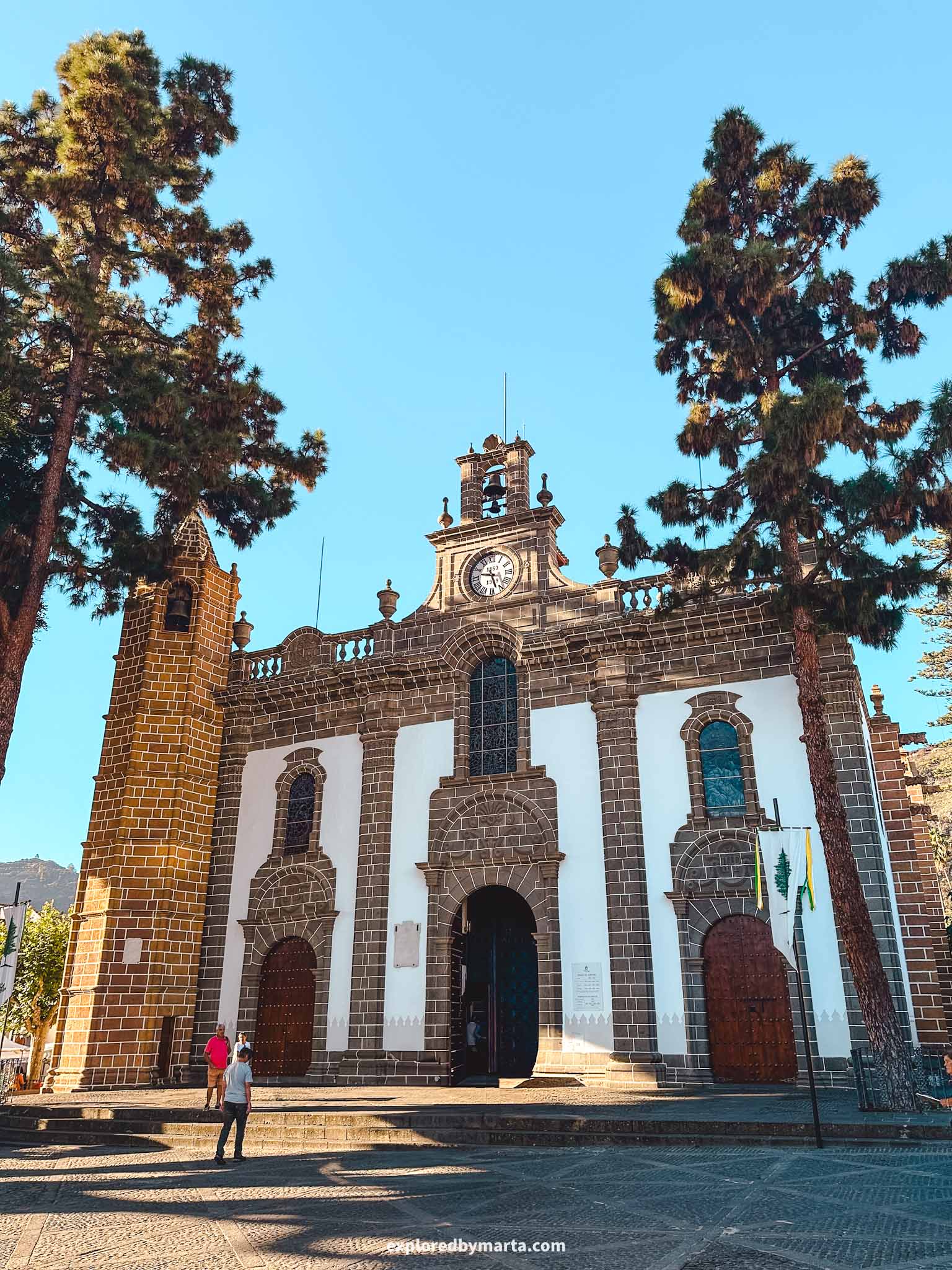
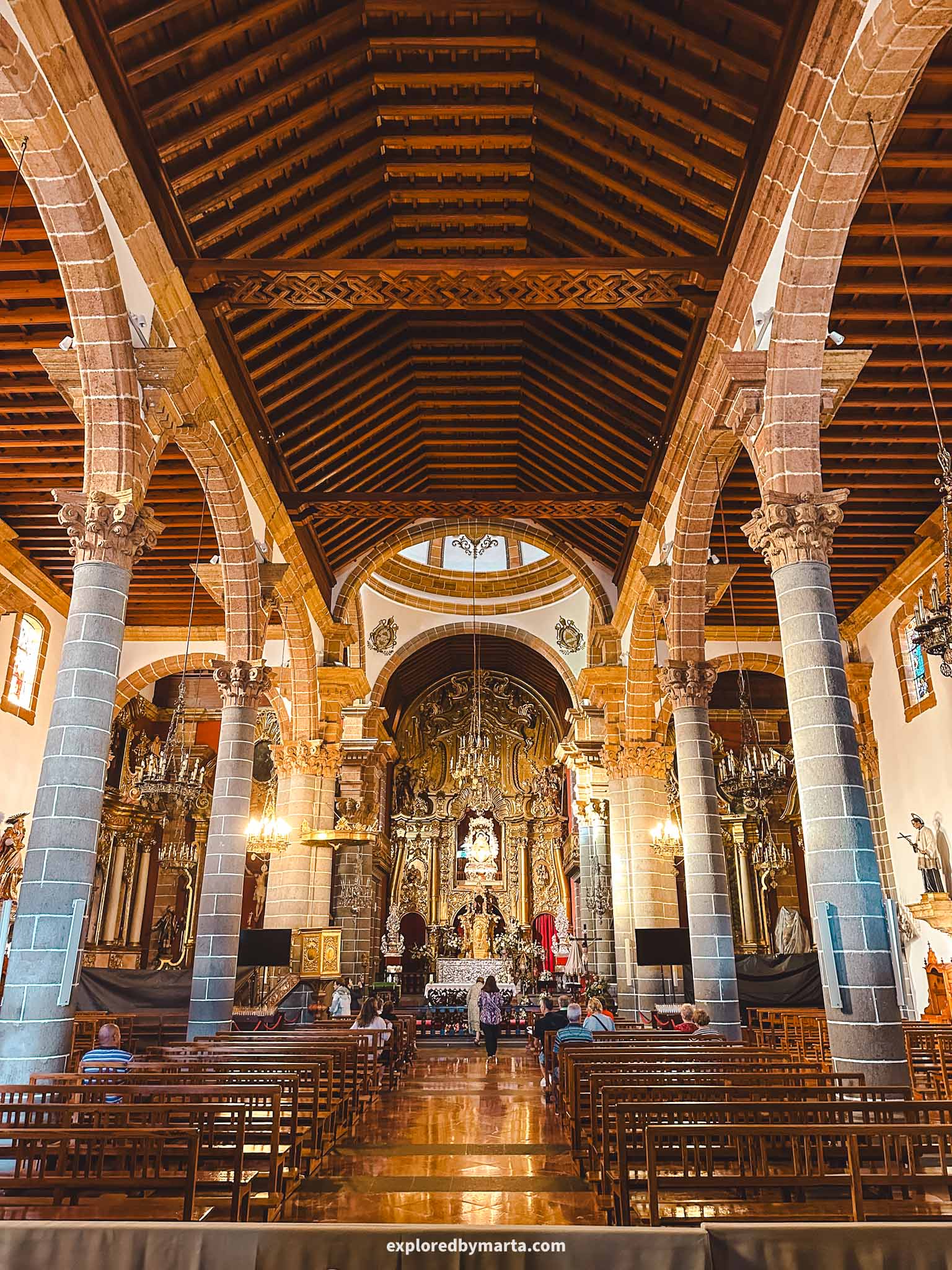
Every year, thousands of pilgrims walk to Teror to celebrate the patron saint.
We visited Teror on a Sunday and saw crowds of people walking along the road toward the town many miles before Teror.
I even doubted they were heading there because it was a long distance to go.
The iconic basilica is the most important religious site in Gran Canaria. It was built after the apparition of the Virgin back in the 15th century. You can visit the inside of this stunning basilica for a small entrance fee.
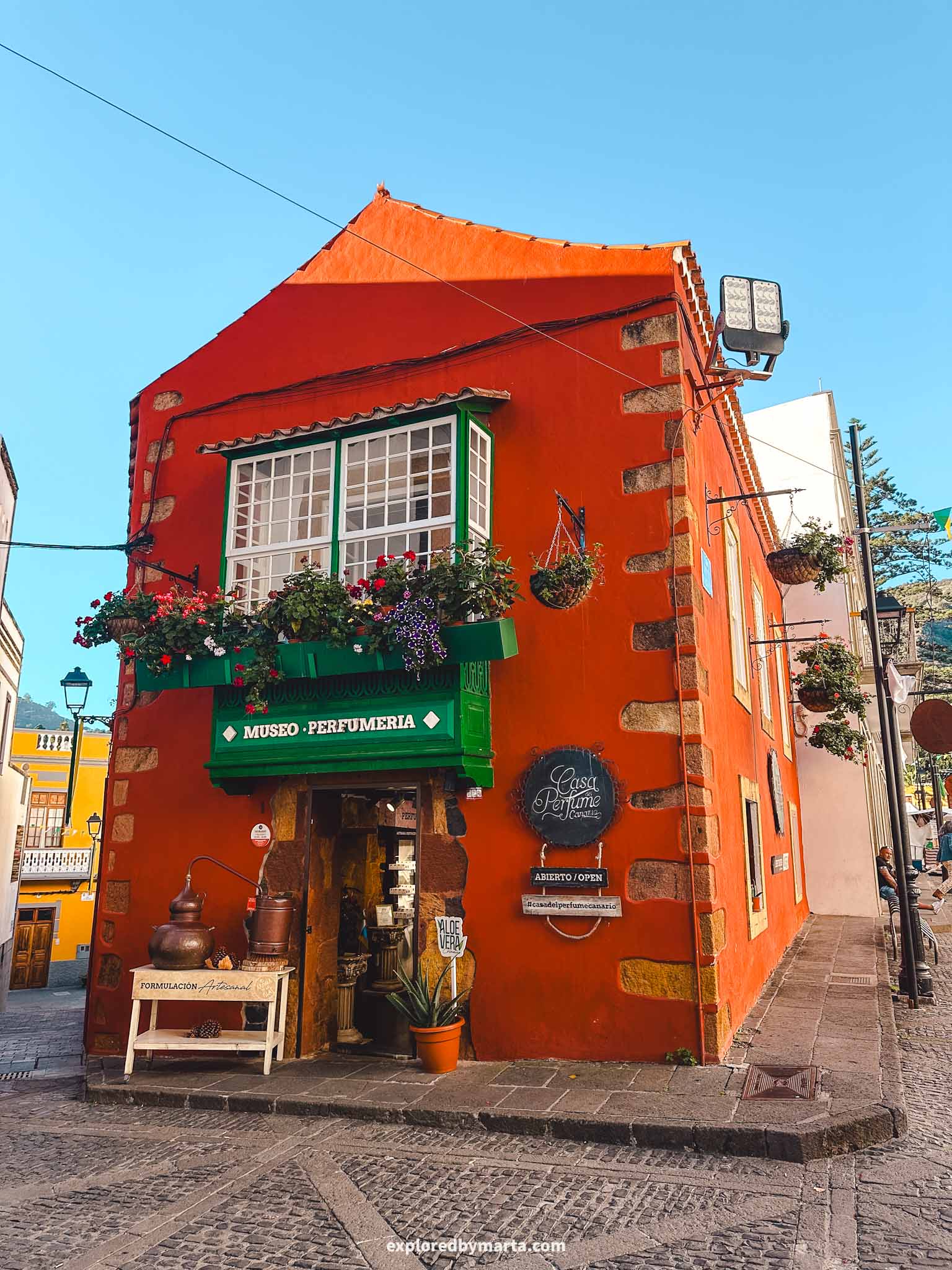
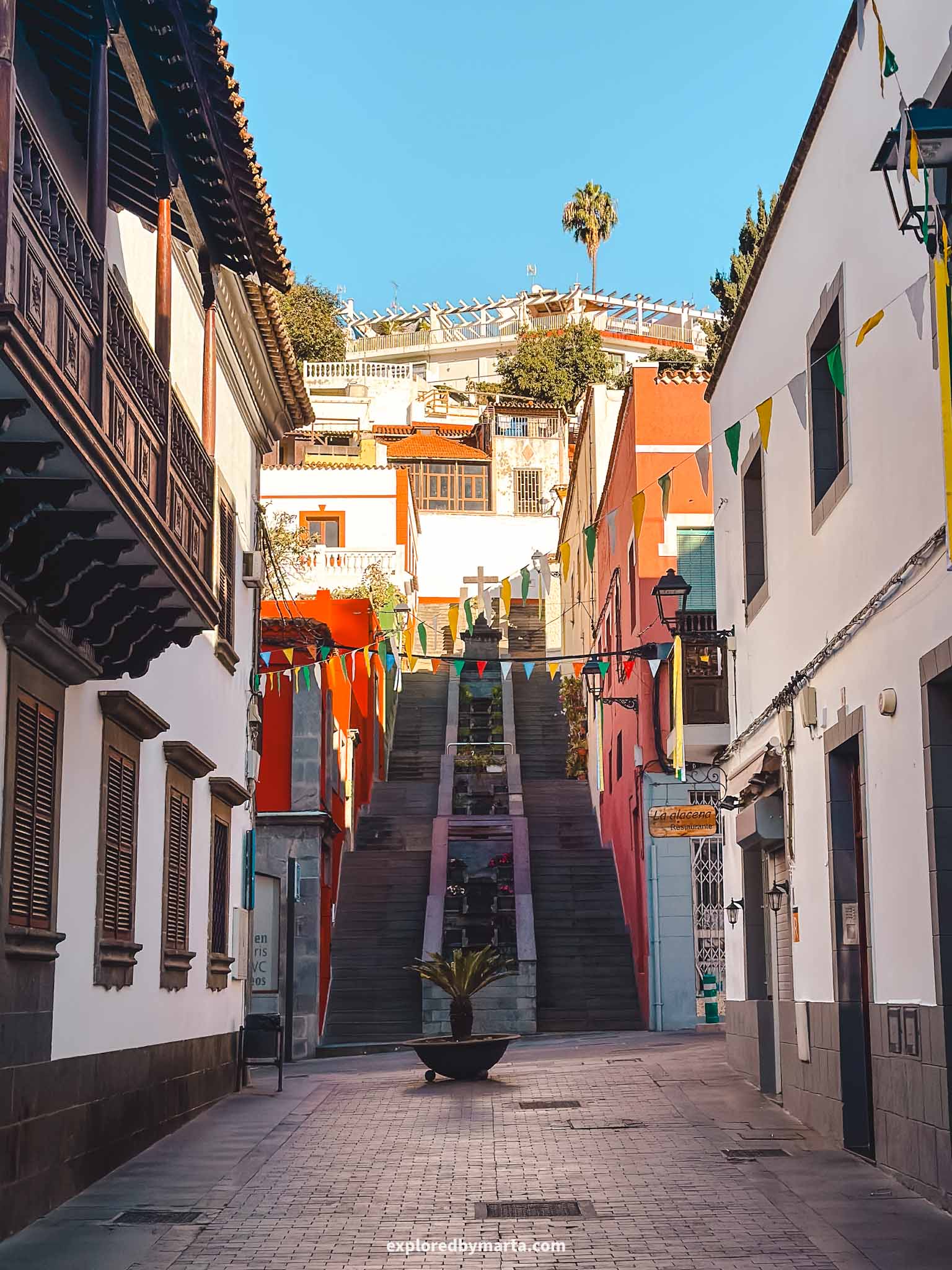
Teror is also known as one of the most beautiful colonial towns in Gran Canaria. The typical colorful houses with intricate wooden balconies are on display throughout the town but are especially prominent on Calle Real de la Plaza.
But honestly, we came to Teror for a different reason—to eat!
Teror hosts one of the most popular Sunday markets on the island, where local artisans and farmers sell all kinds of goodies like volcanic jewelry, goat cheese, smoked meats and sausages, pastries, and more.
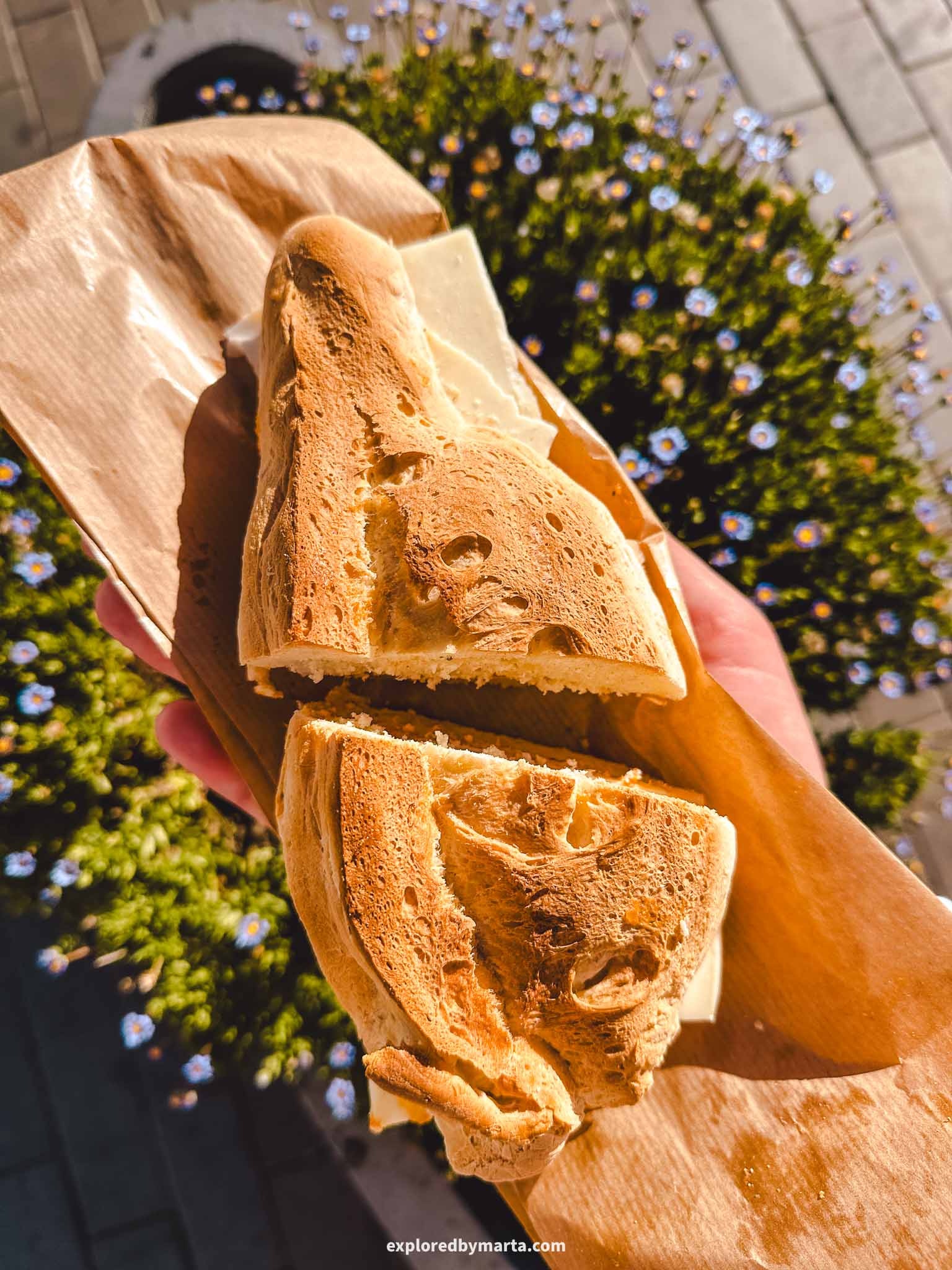
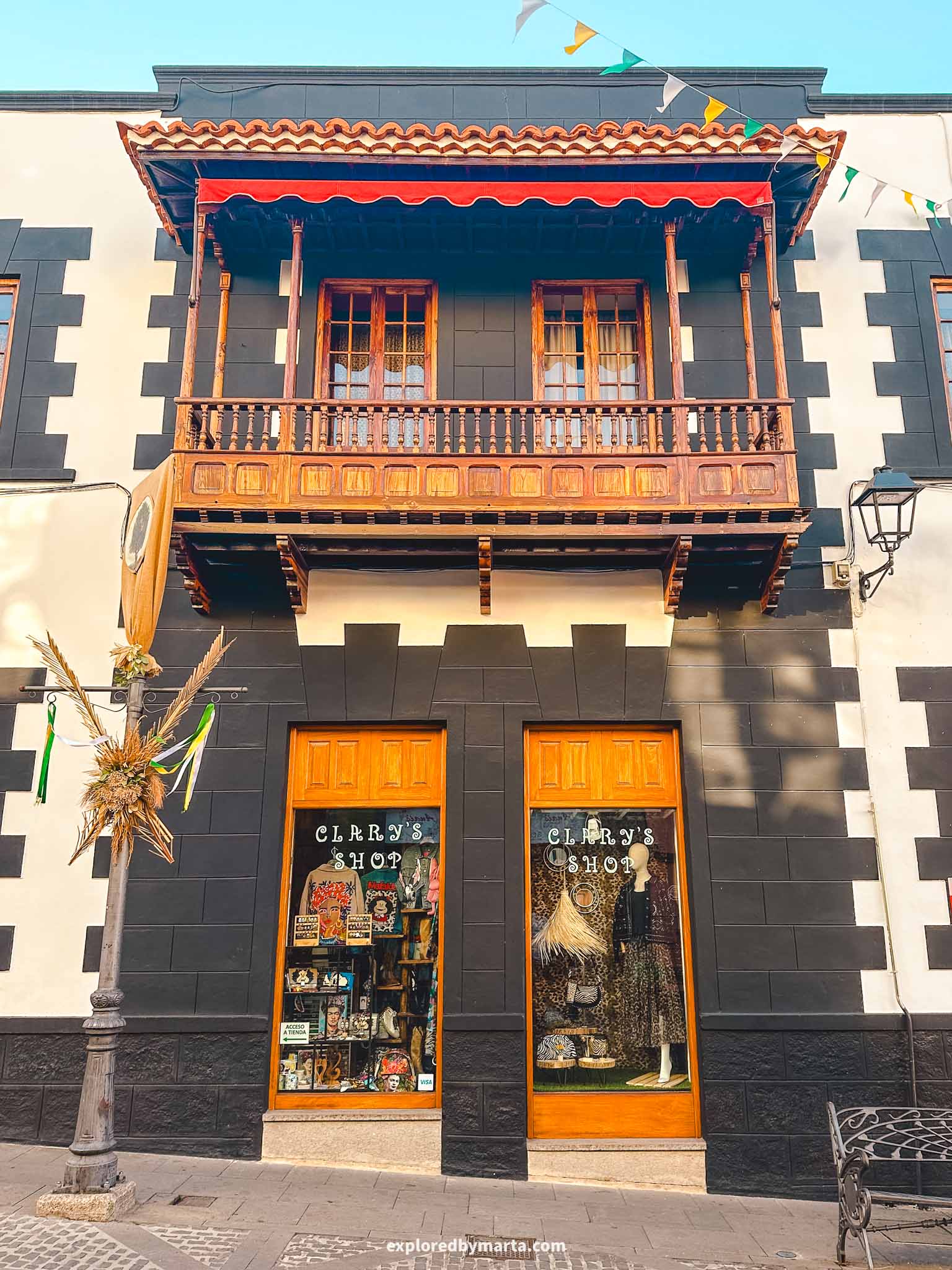
But there’s one special thing you have to try when visiting Gran Canaria: chorizo de Teror.
It’s not a regular sausage but a chorizo spread that you can put on bread or in a sandwich. We got a couple of sandwiches to eat on the spot and even took an extra box of chorizo home.
Chorizo is, of course, famous worldwide, but every country and region has its own unique version. That’s why I highly recommend giving Teror chorizo a try when visiting Gran Canaria. Sunday market in Teror is a great place to buy it!
Location: Mercadillo de Teror – Basílica de Nuestra Señora del Pino
24. Caldera de Bandama
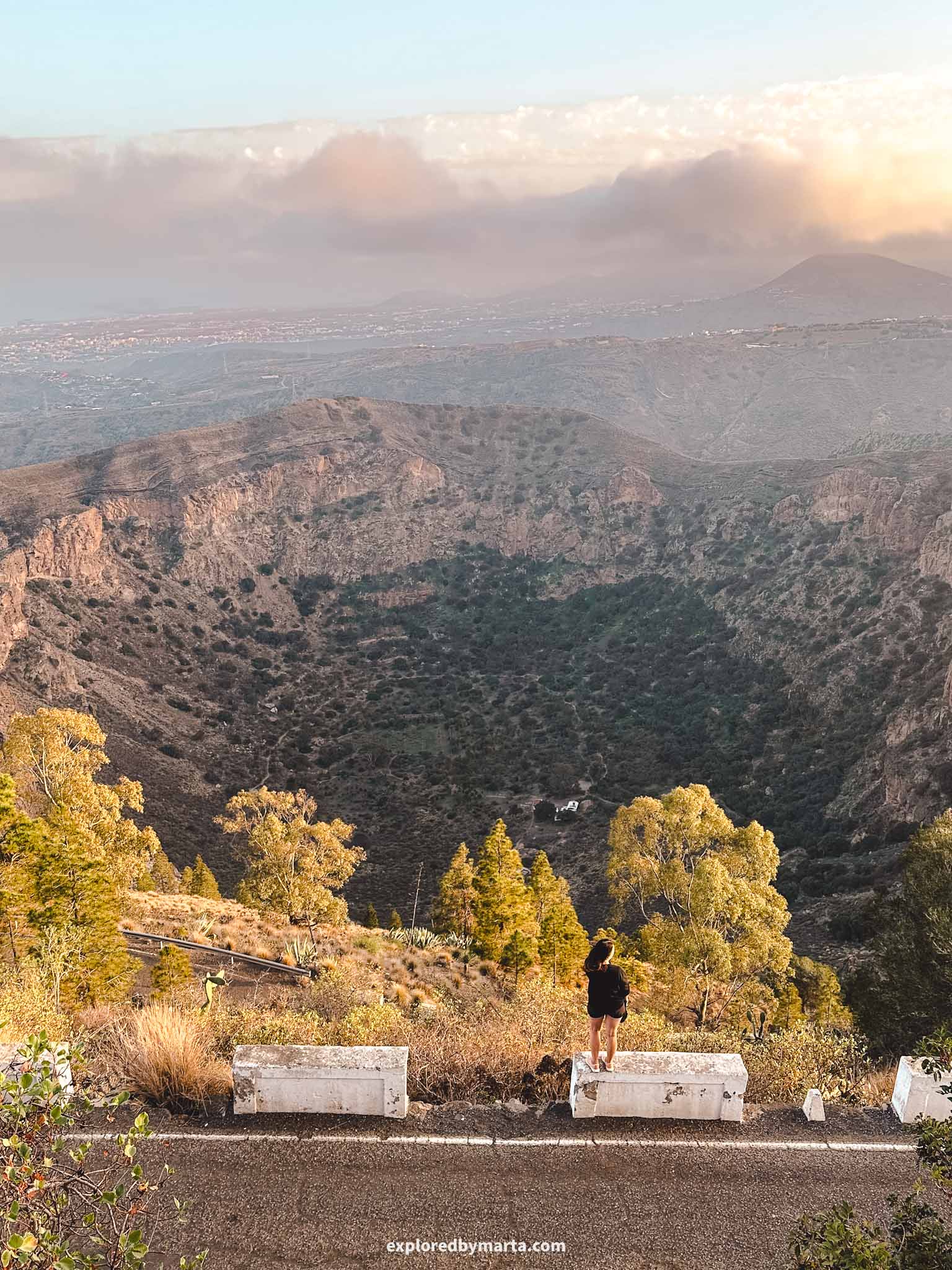
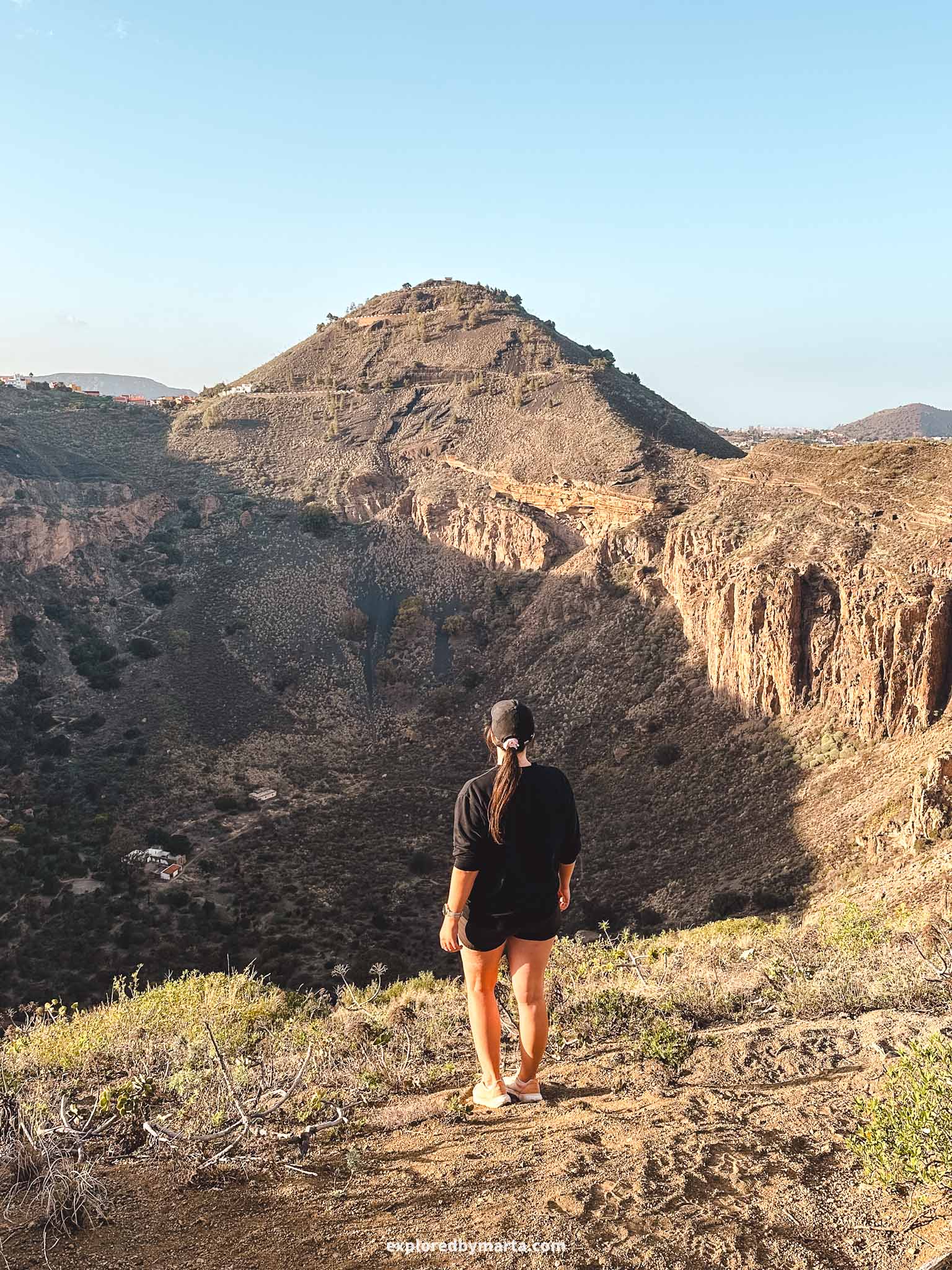
Located near Las Palmas de Gran Canaria city, Caldera de Bandama is a beautiful 1,000-meter-wide and 200-meter-deep crater of a volcano that formed during the island’s most recent volcanic activity.
There are plenty of travelers who only visit the big mountains in the heart of the island and skip such special places as this beautiful crater. I’m here to encourage you to find time to visit this beautiful and unique crater!
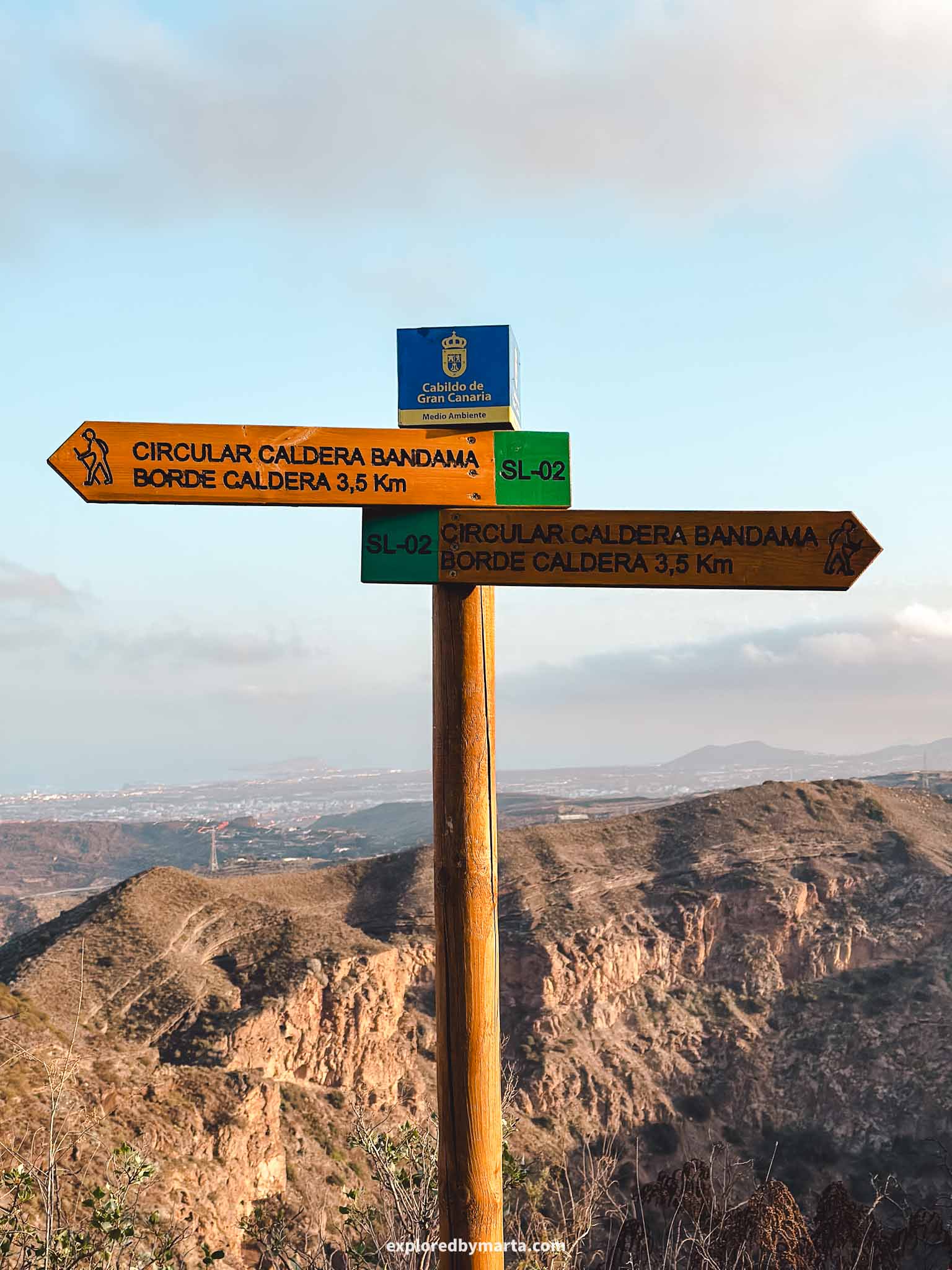
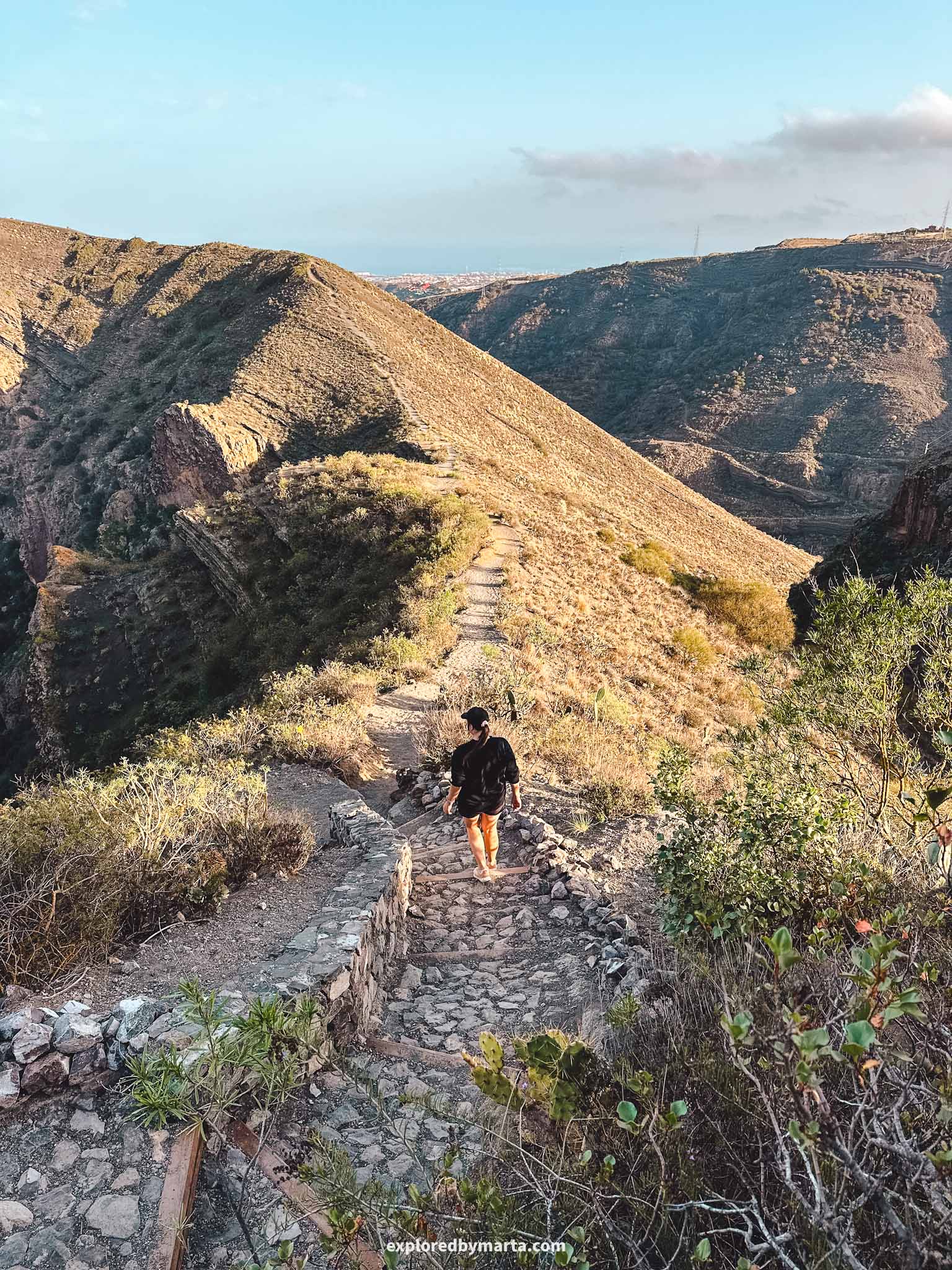
On one side of the crater is a larger hill called Pico de Bandama—standing at 569 meters, it is the highest point on the rim of the massive volcanic crater. The top of the hill offers stunning views of the surrounding area.
The best part? It is super easy to access. You can drive all the way to the top of the Pico de Bandama! A parking lot near the summit is just a few meters from the viewpoint.
From this viewpoint, you can see the perfectly circular shape of the Bandama Crater, as well as the views of the surrounding area, including Las Palmas de Gran Canaria, the island’s capital.
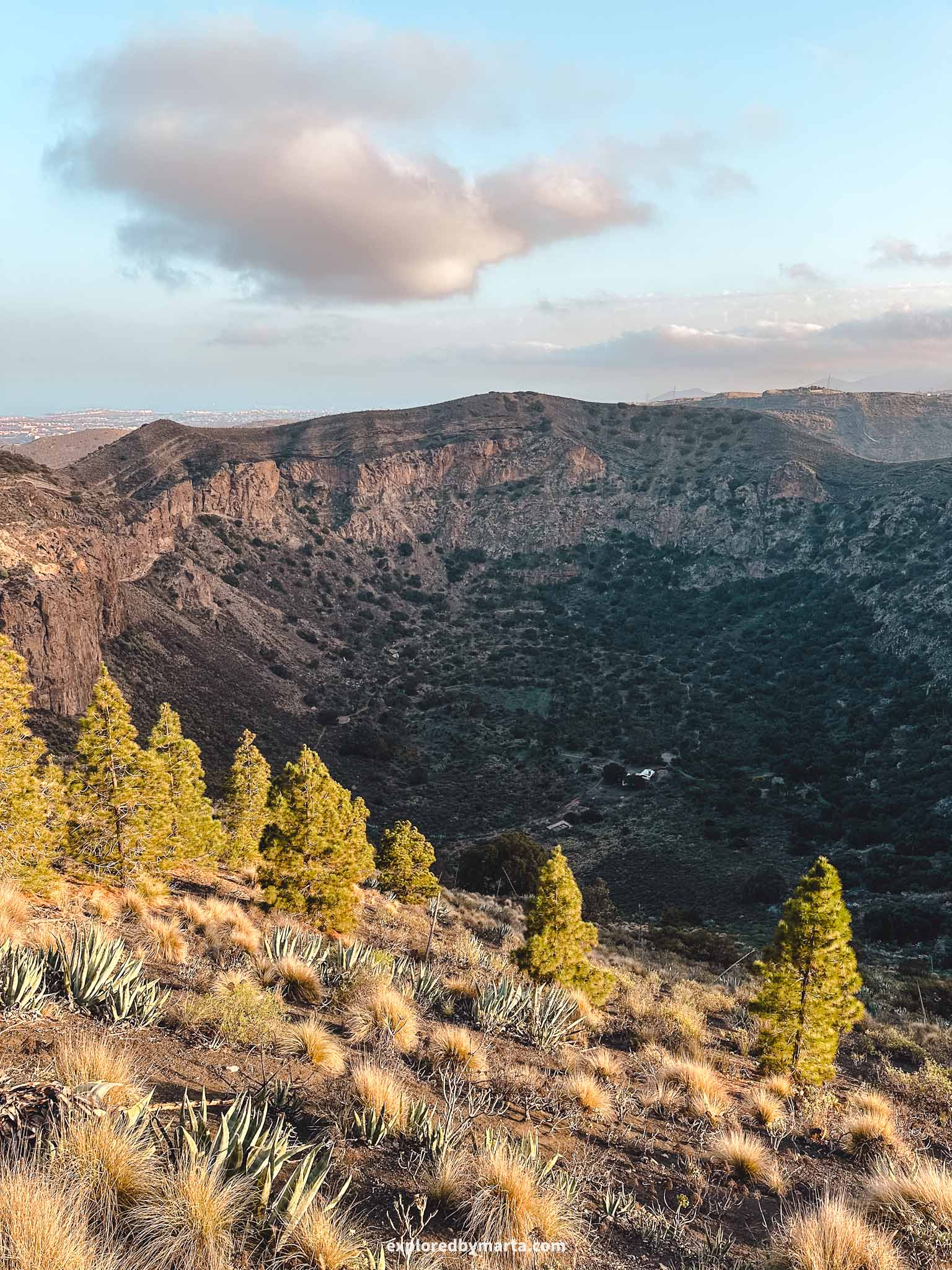

The view is absolutely beautiful!
If you have more time, I highly recommend hiking around the rim of the crater—one of my favorite hikes in Gran Canaria!
To do this hike, you can park your car at the summit of Pico de Bandama (though that adds some extra elevation gain) or along the northern side of the crater. We parked our car next to the road and started the hike there.
The hike passes a golf club and follows the rim of the crater. If you only hike around it, it’s a 3.5-kilometer route, but it will be more if you hike inside the crater or climb up to the Pico de Bandama summit. We completed the circular hike in about an hour.
Location: Caldera de Bandama
25. Jardín Canario, largest botanical garden in Spain


Another beautiful place in northern Gran Canaria that you can visit for free is Jardín Canario!
Jardín Botánico Viera y Clavijo, also known as Jardín Canario, is located just a short drive from Las Palmas de Gran Canaria and it is the largest botanical garden in Spain.
Jardín Canario is known for its vast collection of plants endemic to the Canary Islands. There are hundreds of plant species that are found only on these islands, and some of them are even endangered.


What surprised me is that entrance to the botanical garden is free!
It does have opening hours, but other than that, you can freely wander around the garden, which is built on terraces along the slopes of the Guiniguada Ravine.
The garden was founded back in 1952. It features a waterfall, a couple of ponds, bridges, viewpoints overlooking the ravine, a laurel forest, and my favorite spot—the Garden of Cacti.


If you love nature and have some free time (at least an hour), I definitely recommend planning a visit to this place. There is a parking lot right at the entrance to the garden.
The garden is a popular spot for locals to relax and enjoy nature. We arrived as soon as it opened, and there were already plenty of cars parked by the gate. By the time we left, the parking lot was completely full.
Location: Jardín Botánico Viera y Clavijo
26. Playa del Inglés & Playa de Maspalomas
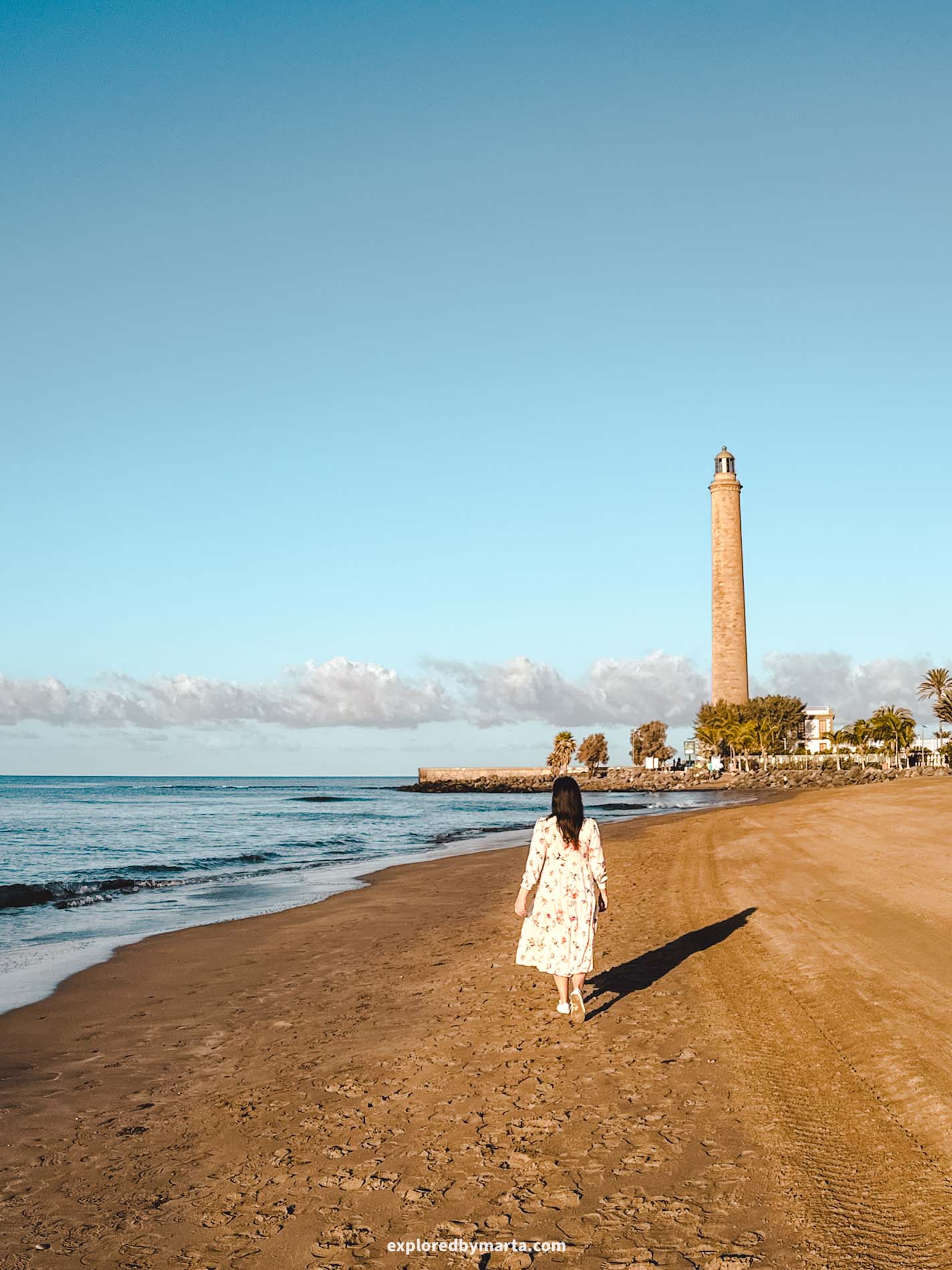
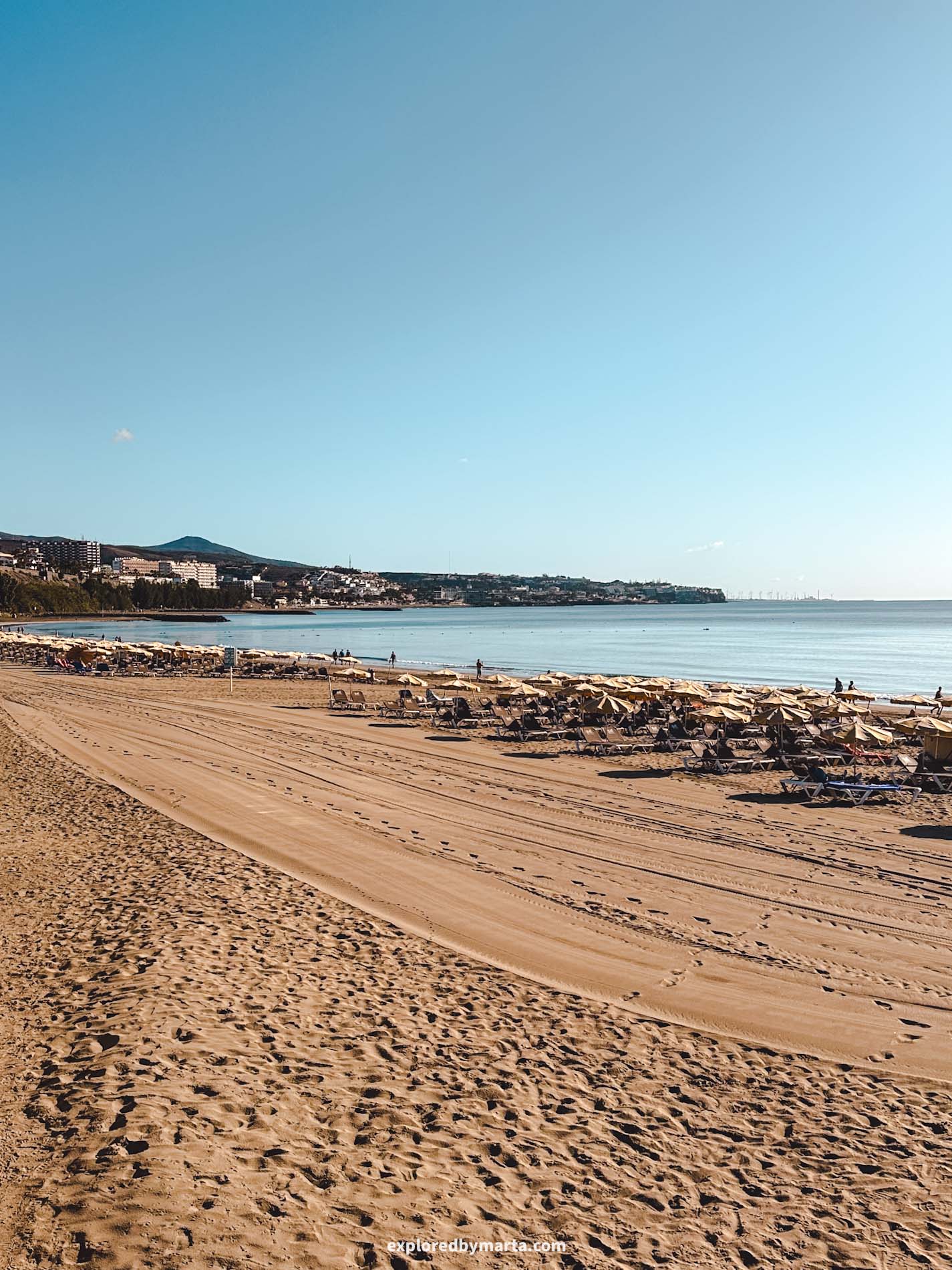
So, in case you came to the Gran Canaria for the beaches, I thought I had to include two of the most iconic beaches on the island in this list.
Playa del Inglés and Playa de Maspalomas are the two most popular beaches in Gran Canaria located in the south of the island in Maspalomas town.
Both golden sand beaches are seamlessly connected and stretch along the coastline for about 6 kilometers. If you are planning a beach day, this is the perfect place to come!
While Playa de Maspalomas is more relaxed and quiet (perfect for long beach walks!), Playa del Inglés is known for its vibrant atmosphere as it is hugged by a seaside promenade full of beach bars, restaurants, souvenir shops, and beach clubs. Your choice!
Location: Playa del Inglés – Playa de Maspalomas
27. Museo Etnográfico Casas Cueva de Artenara

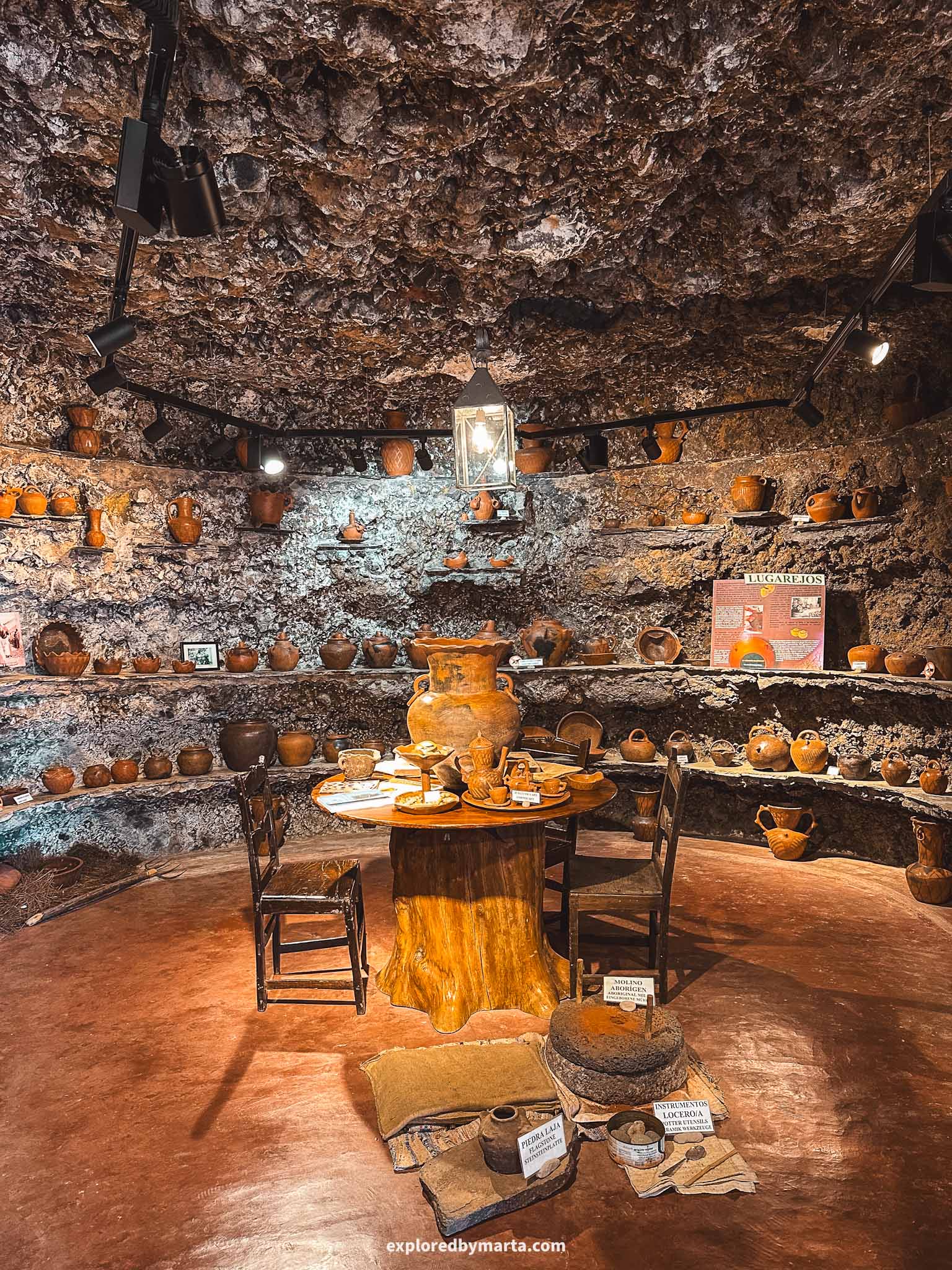
There are many beautiful places to visit when you are driving around the mountains. But make sure that one of them is the museum of cave houses in Artenara!
Gran Canaria has favorable conditions for living in caves. The Guanches—the island’s aboriginal inhabitants—as well as some of the early Spanish settlers, both lived in caves.
if you want to see how they used caves as homes, this wonderful ethnographic museum of cave houses in Artenara is the best place to visit in Gran Canaria!
The best part? When we visited, the entry was free! But we did leave a donation at the entrance.
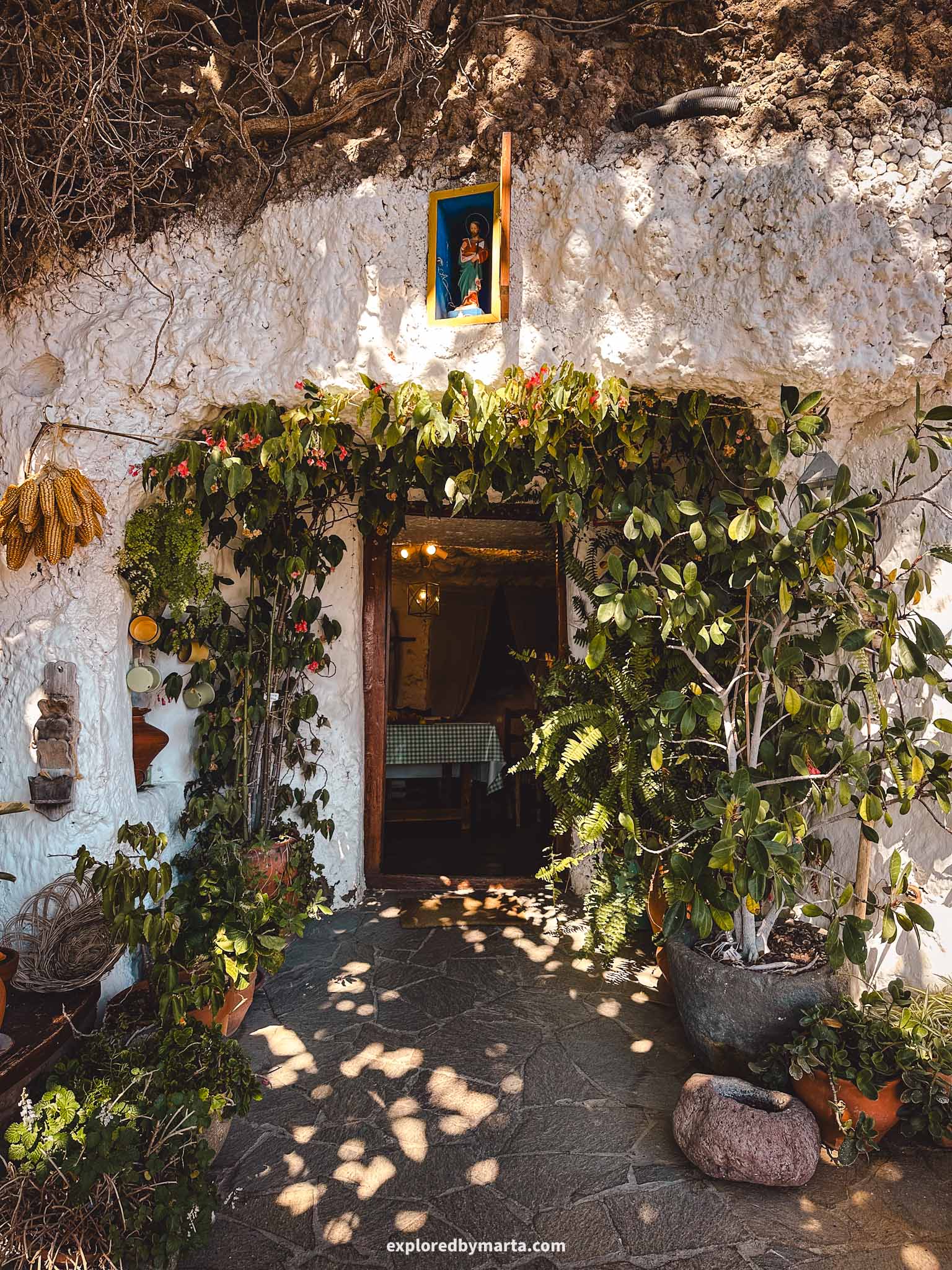
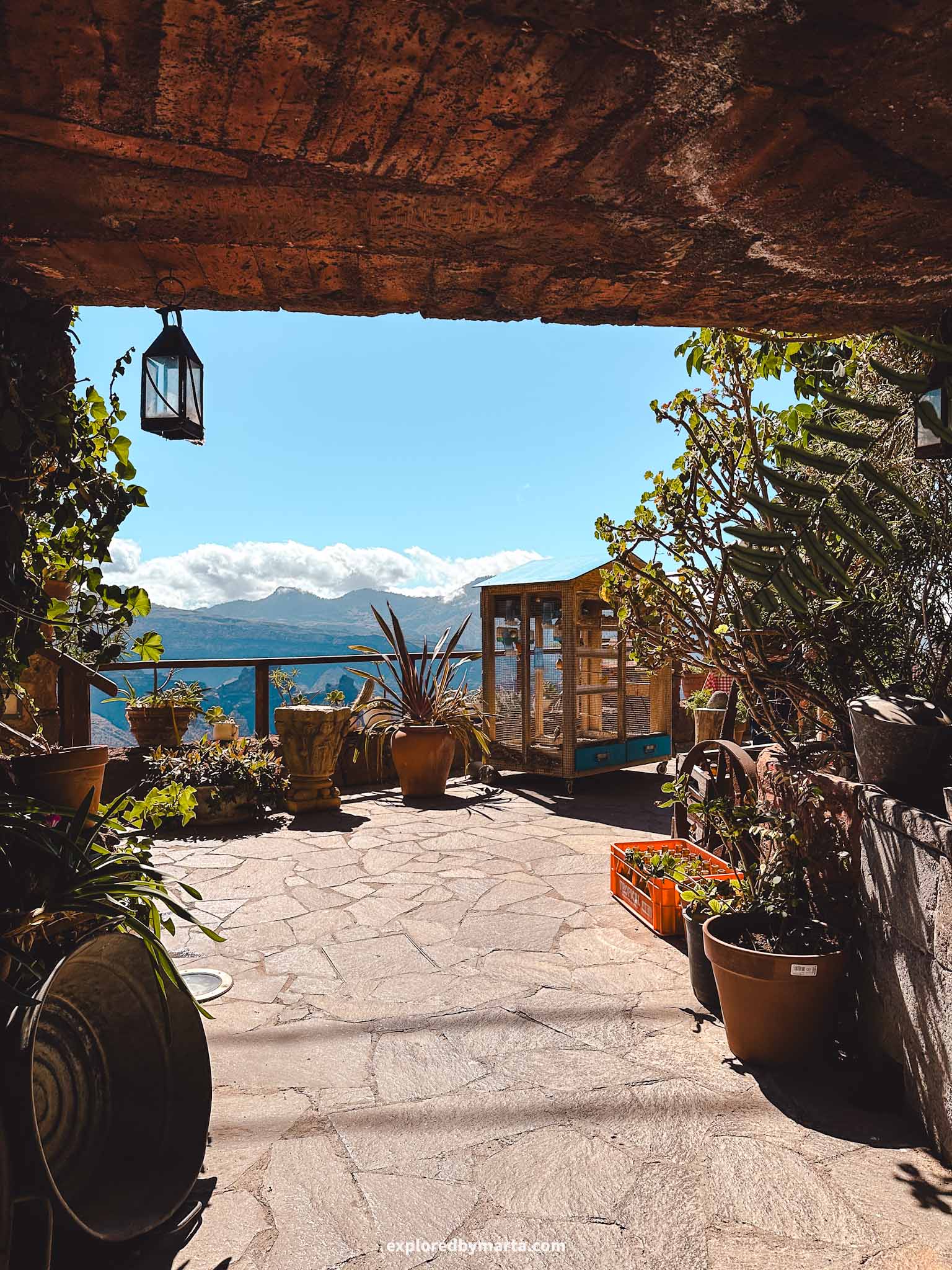
This open-air museum consists of several caves, each serving a different purpose—the kitchen cave, the bedroom cave, the workshop cave, and more. Together, they form a complete home for an entire family.
The Artenara cave houses showcase how early settlers adapted to life on this volcanic island. Living in caves was both practical and affordable, as the rock naturally provided walls, a ceiling, and a floor—the only thing missing was a door!
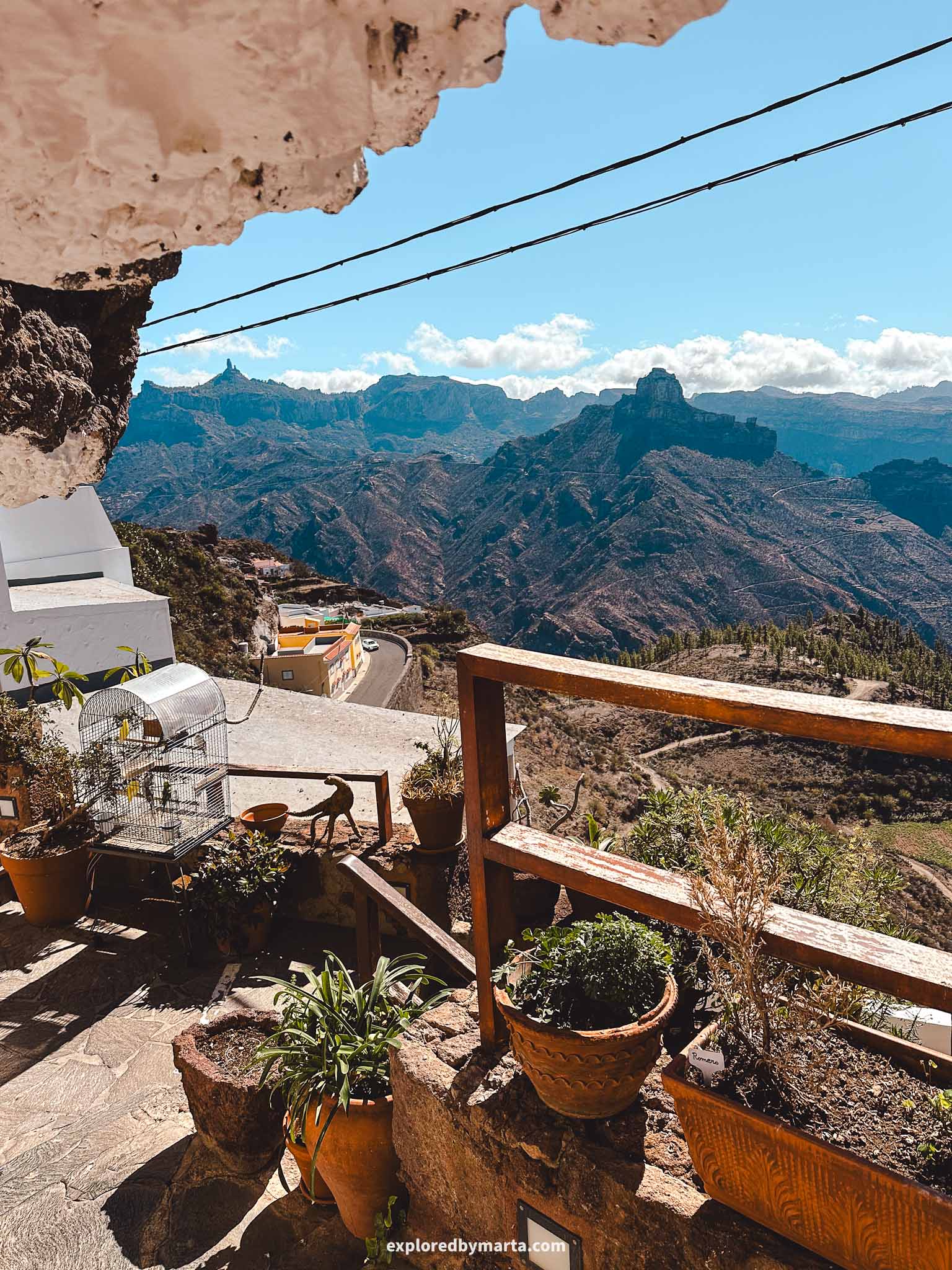
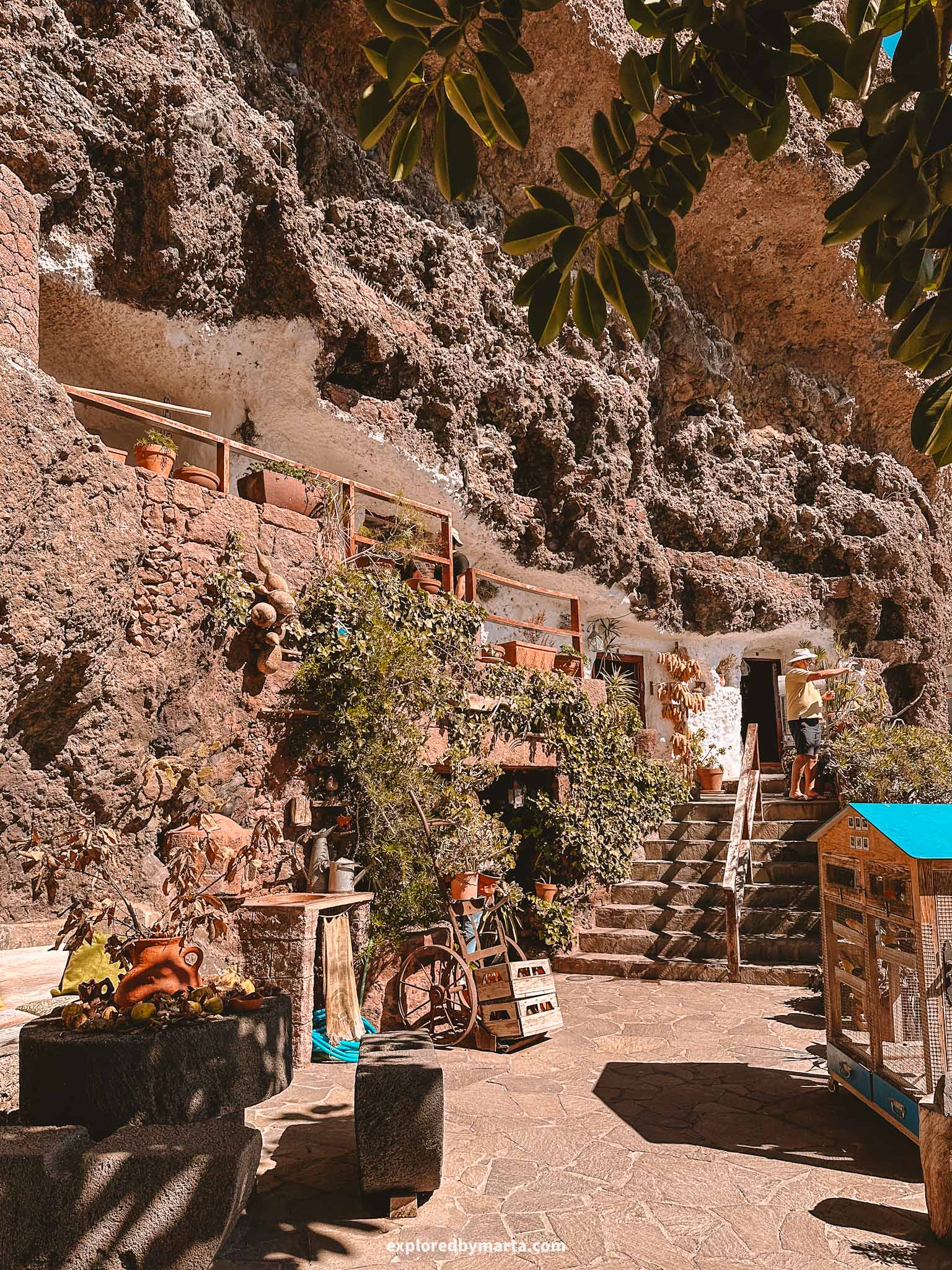
I didn’t expect to like this place so much! The rooms are beautifully furnished with period-accurate furniture, decorations, and tools. Of course, it’s only a replica, but exploring all the little cave rooms was incredibly interesting and fun!
My favorite part was probably the patio of the cave house. It featured a flower garden, an oven, a small pond for turtles, a fireplace, and the most breathtaking views of the mountains in Gran Canaria—exactly what you’d expect from the highest village on the island!
If you have a little free time, I can’t recommend this place enough. Hopefully, you’ll visit on a sunny day when the skies are clear, so you can fully enjoy the panoramic mountain views. This place gets a 10/10 from me!
Location: Museo Etnográfico Casas Cueva de Artenara
28. Mirador de Unamuno in Artenara
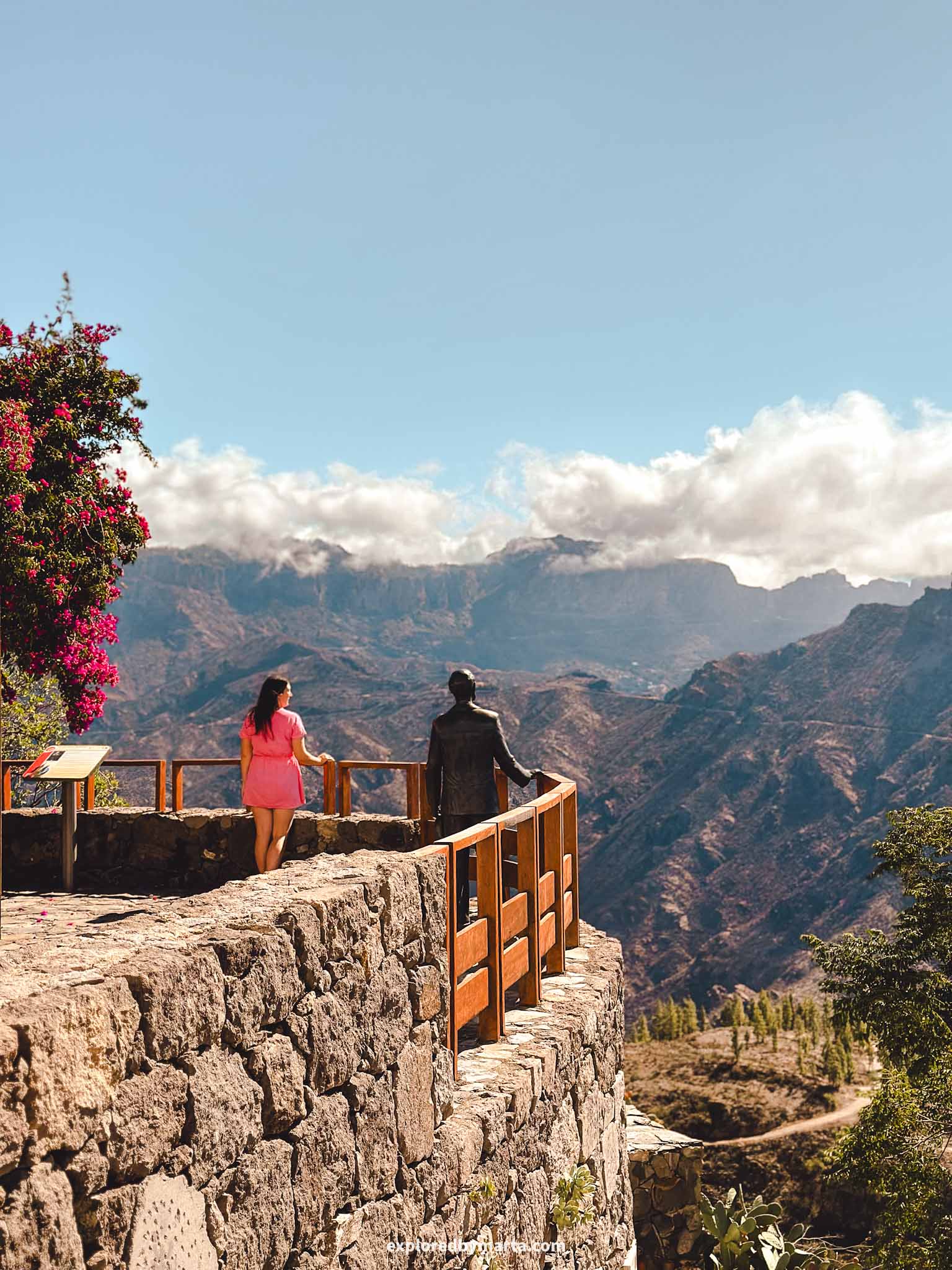
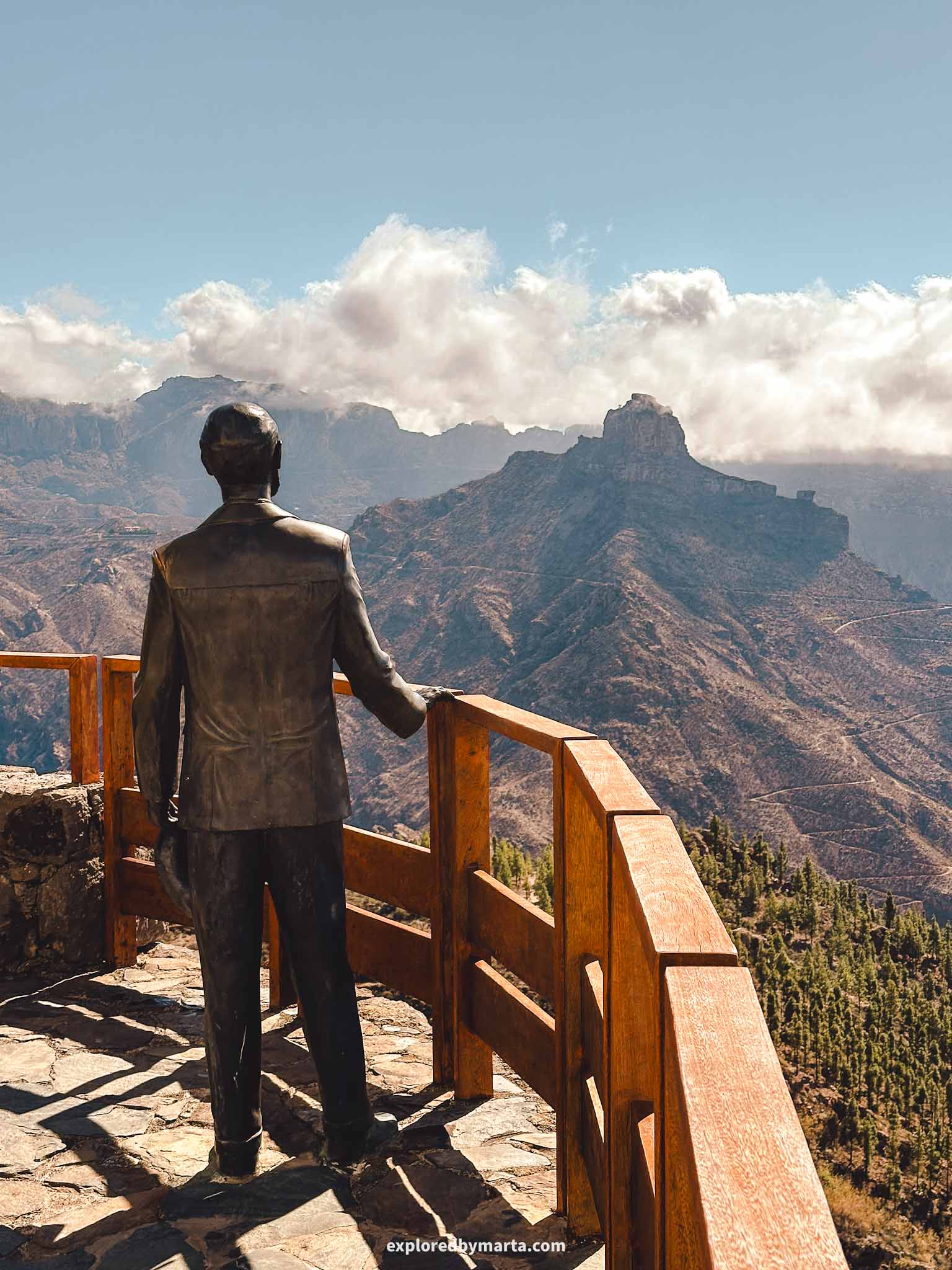
Well, if you have stopped by Artenara, you might as well check out the village’s epic viewpoints! My favorite viewpoint here was Mirador de Unamuno!
Dedicated to Spanish philosopher and writer Miguel de Unamuno in honor of his visit to the island, this panoramic ‘mirador’ is one of the most scenic viewpoints in Gran Canaria!
But really, what else would you expect from the highest village in Gran Canaria?

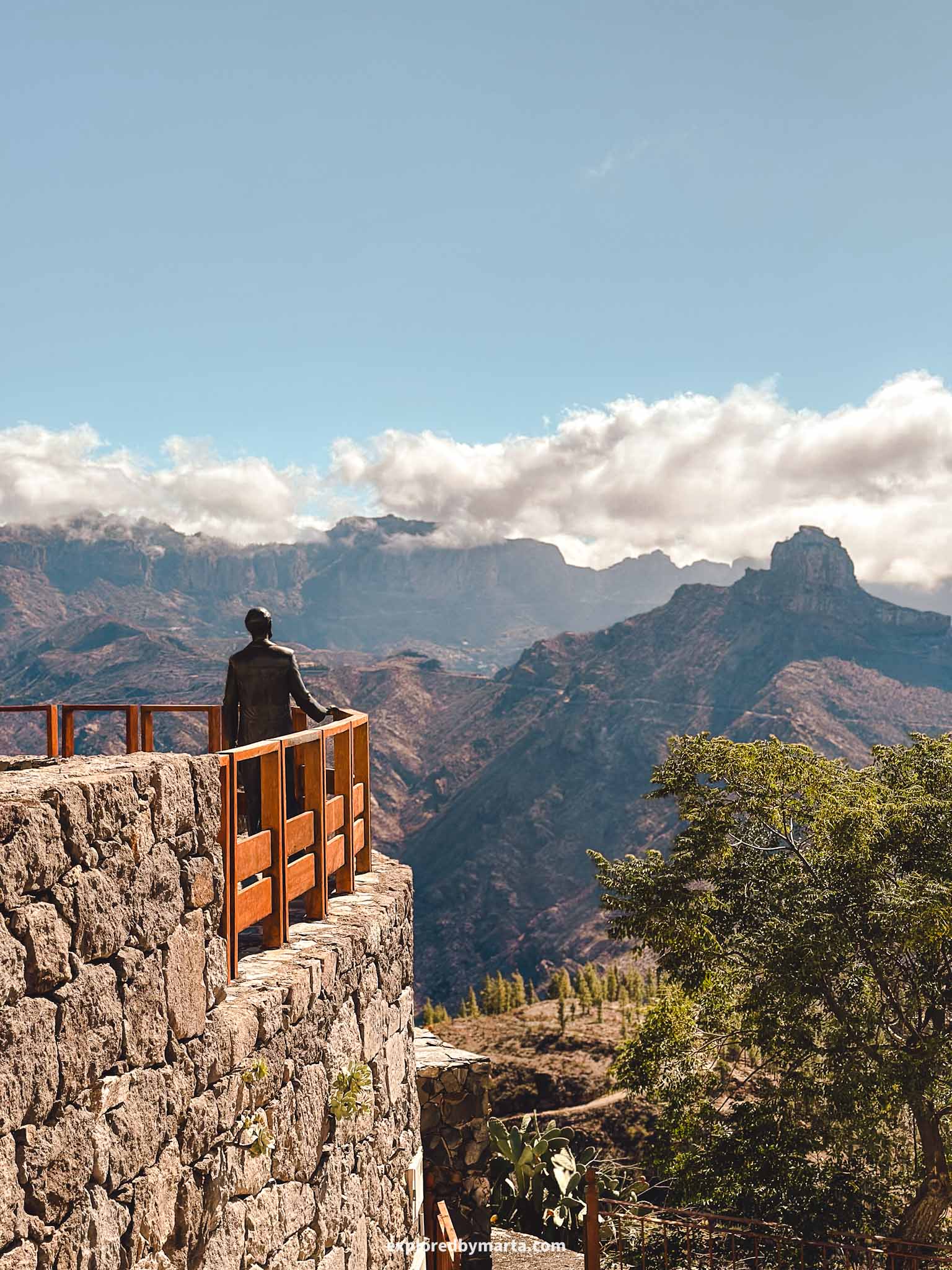
Mirador de Unamuno features a bronze statue of the man himself admiring the beauty of the mountains of Gran Canaria. Here you get a front-row seat to the island’s dramatic landscape, especially the Roque Bentayga rock formation.
Although Mirador de Unamuno was my favorite viewpoint in Artenara, there are other viewpoints in the village worth checking out including Mirador de La Atalaya, Mirador de Los Poetas, and Mirador del Corazon de Jesus featuring the statue of Christ.
Location: Mirador de Unamuno
29. Mirador Astronómico de la Degollada de las Yeguas
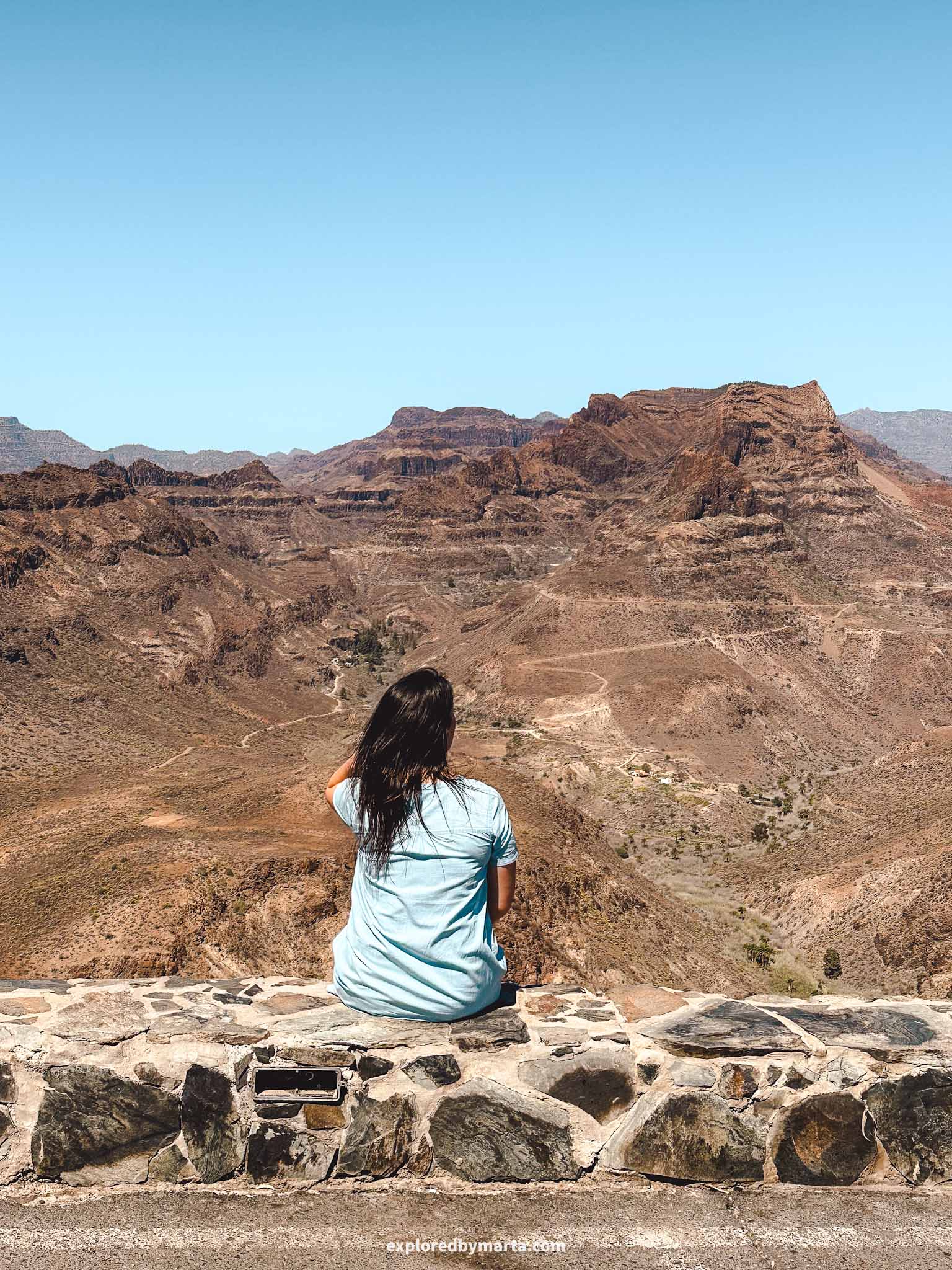

Talking about epic viewpoints…If you are staying somewhere in the south of Gran Canaria, visiting Mirador Astronómico de la Degollada de las Yeguas is a must! The viewpoint is located just a 15-minute drive from Maspalomas.
This spot offers fantastic views of the highs and lows of the Fataga Valley, often called the Grand Canyon of Gran Canaria. I won’t be the judge of that—you’ll have to see for yourself! But I will say, it looks pretty impressive!

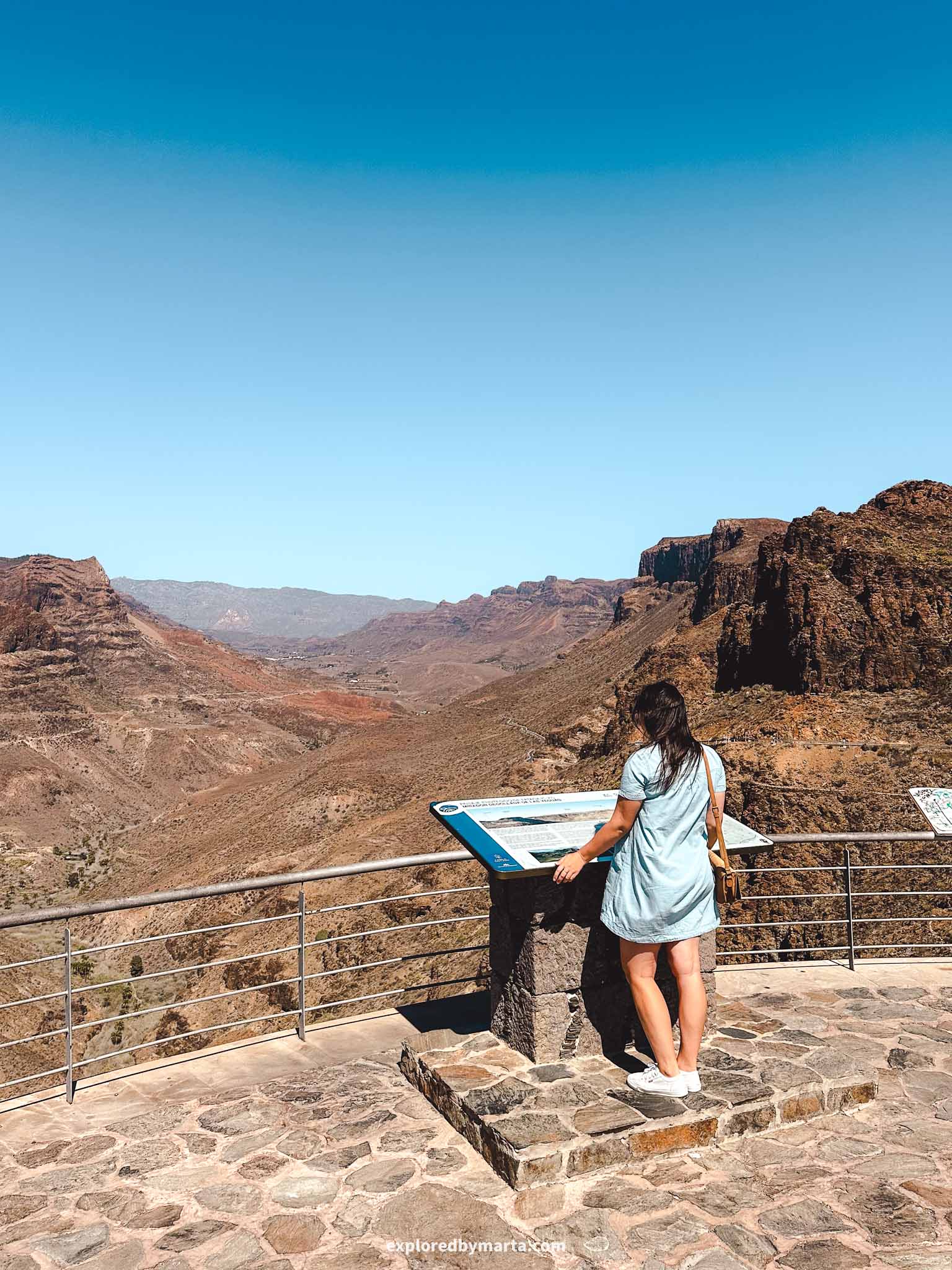
As the name suggests, during the day, it’s all about mountains and valleys, but at night, this place transforms into an astronomical viewpoint. Thanks to its remote location and lack of light pollution, it’s perfect for stargazing!
Growing up in the countryside, miles away from neighbors, I never realized that people in cities couldn’t see stars, planets, constellations, or the Milky Way at night because of city lights. Now, as an adult, I do appreciate such things more and more.
Location: Mirador Astronómico de la Degollada de las Yeguas
30. Cuevas del Rey next to El Roque village


Nestled in the middle of the mountains, Cuevas del Rey, or the King’s Caves, is one of my favorite hidden gems in Gran Canaria. This place is right next to the striking Roque Bentayga rock formation in the Tejeda municipality.
This ancient cave complex, carved into a massive rock, towers above the small mountain village of El Roque. You can reach the caves by following a narrow, steep path from the village, over a village house, and up toward the rock. The hike is short but steep—so be careful!
Many caves are accessible from the path, though some seemed a bit too risky to explore. I especially loved the caves with views of the El Roque village – one of the most unique villages in Gran Canaria! We made some cool photos here!
Location: Cuevas del Rey
31. La Fortaleza de Ansite, the last Guanche’s stronghold


La Fortaleza de Ansite (Ansite Fortress) is a hidden gem and one of the most historically significant sites in Gran Canaria. I found exactly zero travel blogs mentioning this special place but, after visiting it, I have to include it among the top places to visit in Gran Canaria!
La Fortaleza de Ansite consists of a group of large rock formations filled with caves that served as the last stronghold of the Guanches during their battle against the Spanish conquistadors in the 15th century.
After this fortress fell, the Guanches lost control of the island, and Gran Canaria became a territory of the Spanish Crown. It was the end of years of fierce battles between the two sides.


We stumbled upon this place by accident while I was simply browsing through Google Maps locations in Gran Canaria. And guess what? You can visit this special place for free.
There’s also a museum dedicated to the site in the nearby village, but we skipped it and came straight here. This place is open all day long—you can come and explore anytime!
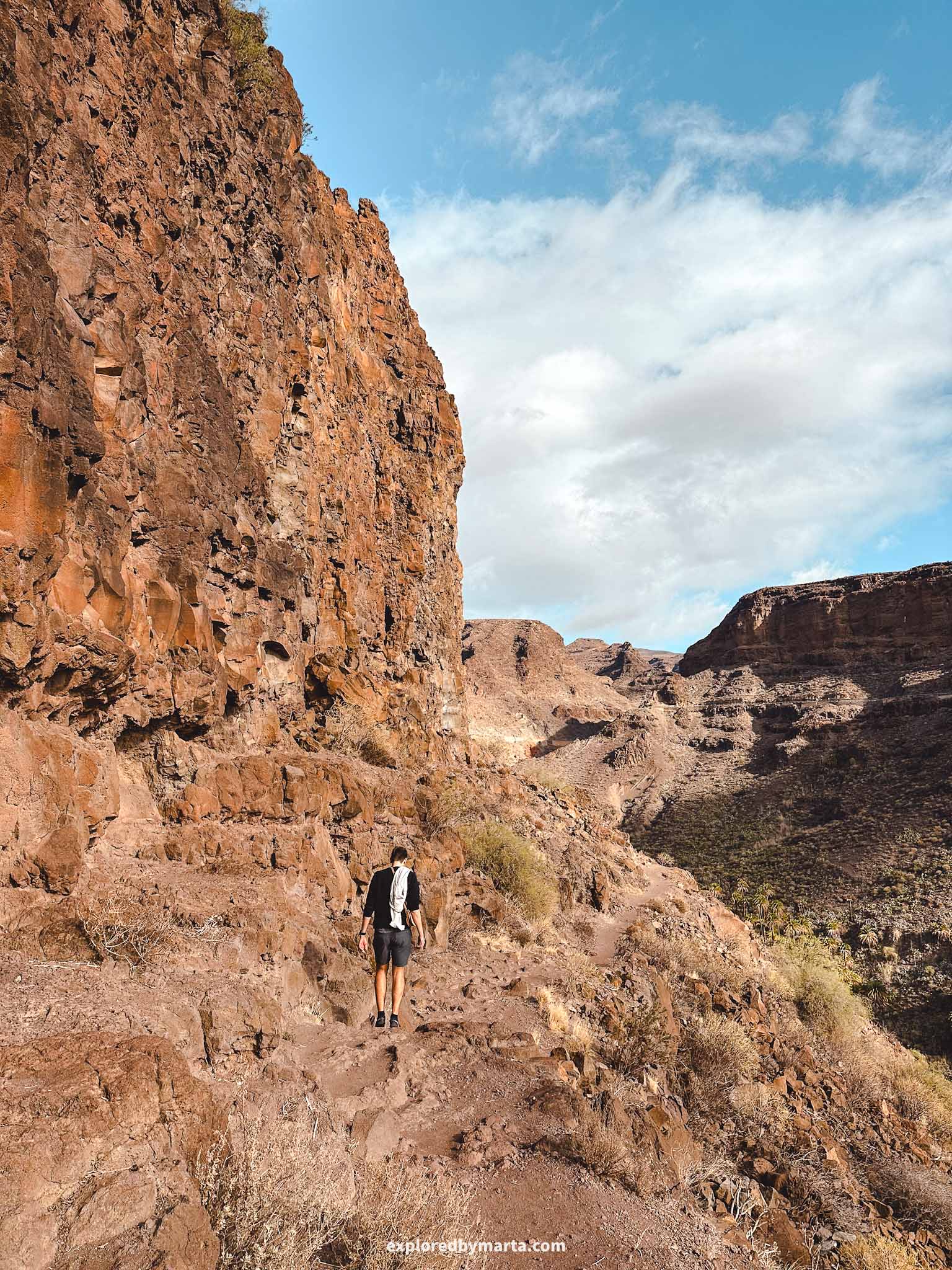

So why come here? Definitely for the views and for the caves!
There are numerous smaller caves that the Guanches once used as homes, storage spaces, and even burial sites. We also found a large cave that tunnels through the entire mountain—quite an impressive spot with stunning views!
If you’re in the area, I highly recommend stopping by for a quick 30-minute visit. This is one of those hidden gems in Gran Canaria that doesn’t attract crowds. There is a large parking lot right next to the rocks and a walking path that follows around them.
Location: La Fortaleza de Ansite
32. Puerto de La Aldea

Puerto de la Aldea is a small, picturesque fishing village on the west coast of Gran Canaria, known for its laid-back vibe and stunning coastal views.
The village features a wide pebble beach, a beautiful seaside promenade, a natural rock swimming pool called Charco de la Aldea, and a scenic fishing pier with views of the dramatic cliffs surrounding the beach.
Puerto de la Aldea is one of my favorite places to visit in Gran Canaria, and the fact that there isn’t much to do in the village makes me like it even more. It’s simply a peaceful escape, far removed from the touristy areas in the south.
There are two beaches in the village, separated by a large rock. To access both, a pedestrian tunnel has been built through the rock, creating a picture-perfect frame for the dramatic coastline views (see photo above). I love this place! It is so special!
Location: Puerto de La Aldea
33. El Bufadero—lungs of the ocean

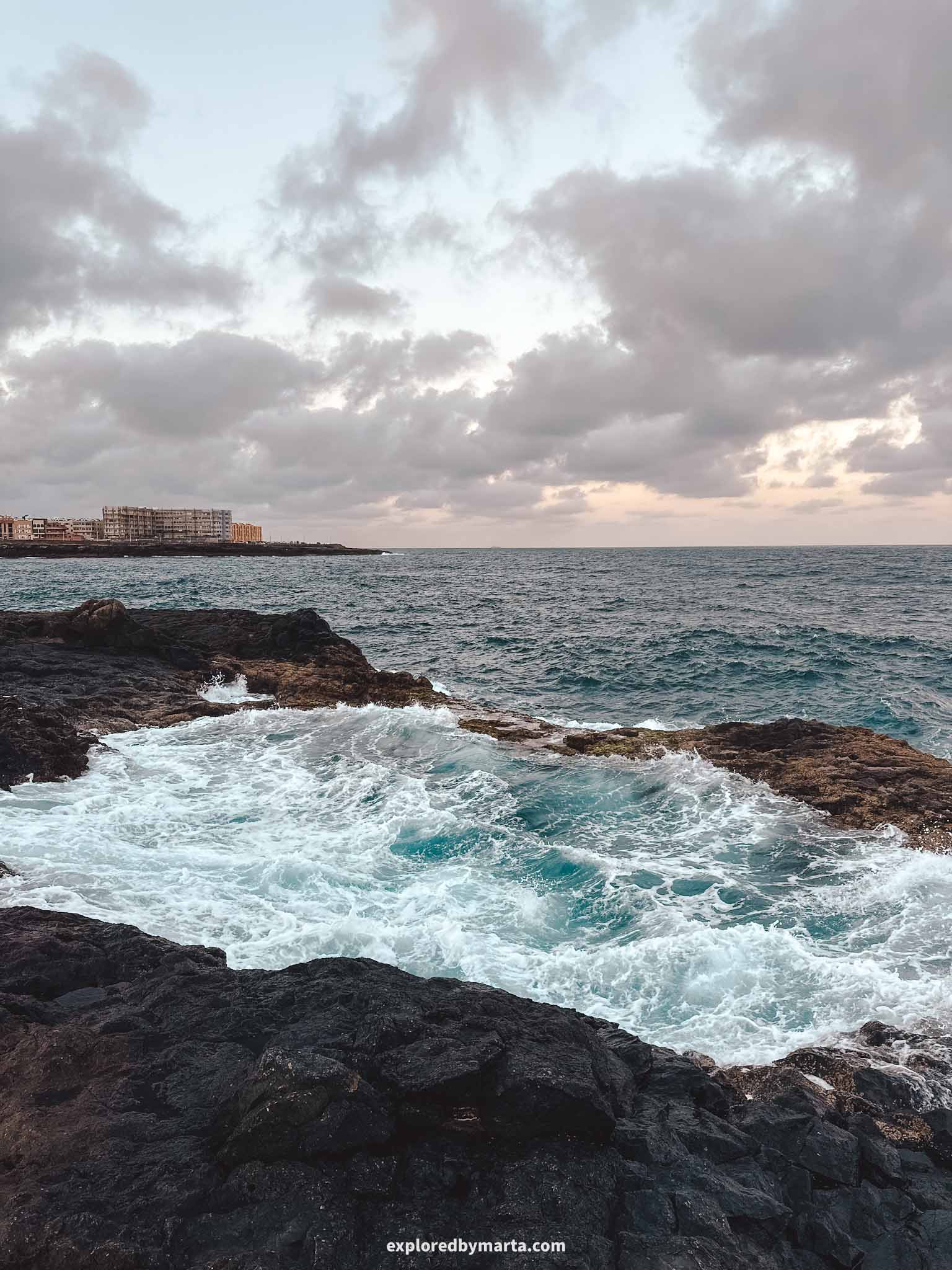
Located in the coastal town of La Garita on the east coast of Gran Canaria, El Bufadero is one of the most unique rock formations on the island.
In essence, it’s a naturally formed hole in the volcanic coastal rock that’s connected to the ocean. Each time the waves come and go, the water level inside the hole changes.

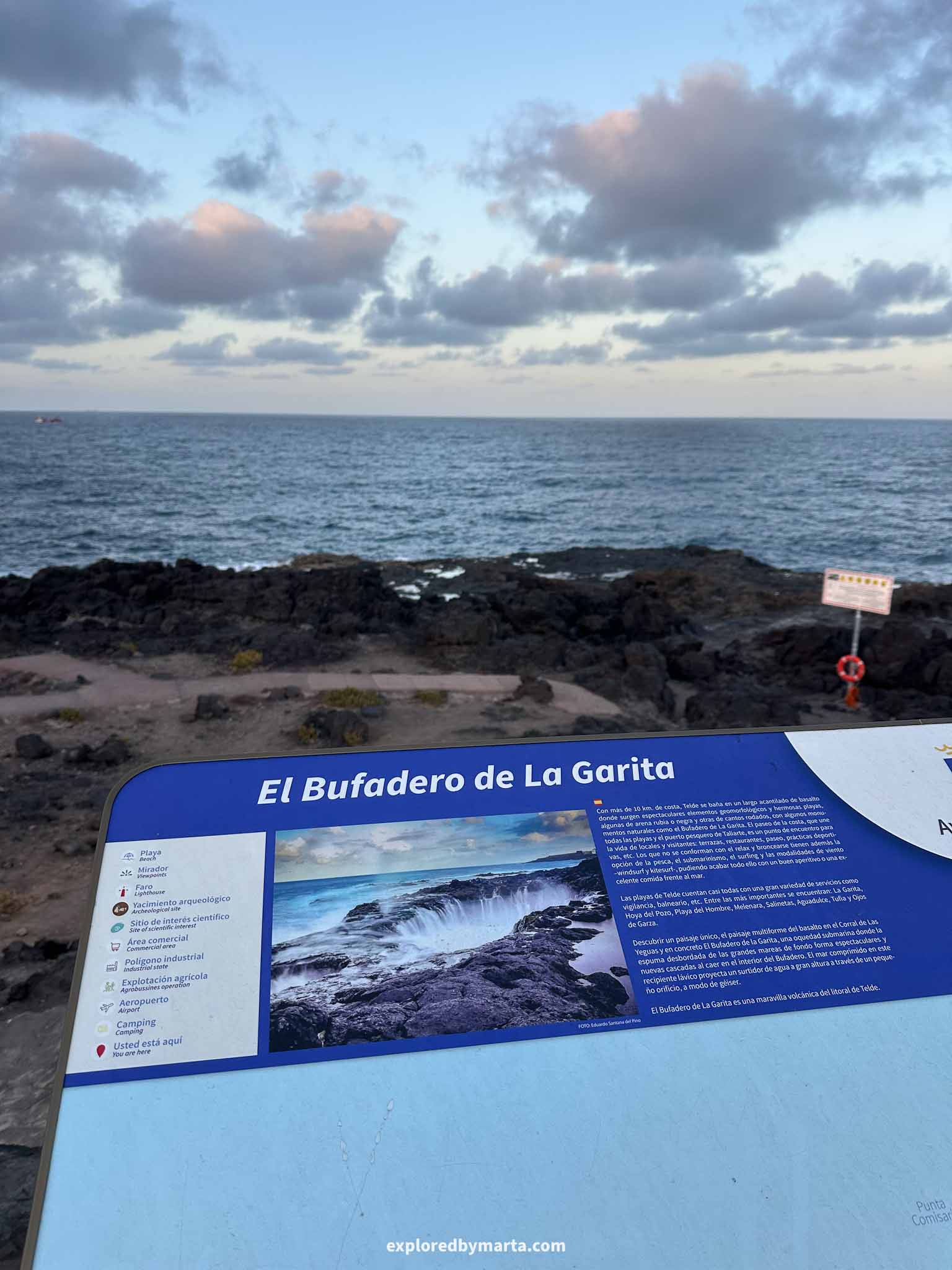
It looks like it’s breathing—it reminded me of lungs inflating with air and then deflating as you breathe out. When you see it in real life, you’ll understand, haha!
The ocean on this part of the island is wilder, so you need to make sure it’s safe to visit. El Bufadero is located right by the water, so don’t risk getting too close. There’s always that one wave that’s bigger than the rest, and everything can suddenly overflow.
If you come here, try to arrive when the tide is lower. There’s a large parking lot right by the ocean, so it’s very easy to get to El Bufadero. I love watching the waves and El Bufadero makes this experience even more fun and attractive!
Location: El Bufadero
Happy exploring!
Gran Canaria, the third-largest of Spain’s Canary Islands, is often called a ‘miniature continent’ thanks to its diverse landscapes—everything from golden sand dunes and volcanic cliffs to lush forests and dramatic mountains.
We’ve visited this island in the Atlantic Ocean numerous times, often staying for months at a time, yet there are still many more places to discover, villages to explore, and trails to hike!
What I love most about Gran Canaria is that it offers exactly what your heart desires—whether it’s relaxing on sandy beaches, hiking epic mountain trails, exploring charming historic villages, or embarking on exciting road trips along the rugged coastline.
I hope you enjoy this island as much as we did!
PIN FOR LATER!
